 Dr. Jeff Harper | Comments Off |
Dr. Jeff Harper | Comments Off | My most current blog entry:
Entries in Boats (36)
Images from a Japanese Sojourn, May 2024
 Saturday, January 4, 2025 at 8:04PM
Saturday, January 4, 2025 at 8:04PM In May of 2024 my wife and I joined a group of her friends on a golf junket to Japan. A van/bus was rented and we drove, over several days and several overnight stop-overs, from Tokyo to near Nagoya - and back to Tokyo. We had lots of fun and saw a lot of amazing things . . . and ate a lot of great Japanese food . . . lots of it! While the group played golf I set off to explore the surrounding area with my camera. This entry, unlike others here, is not a chronological account of the whole trip, but "only" a collection of favorite images.
 At a tourist trap bathroom stop I took this amazing photo of Mt. Fuji with late spring colors in the foreground. Magical.
At a tourist trap bathroom stop I took this amazing photo of Mt. Fuji with late spring colors in the foreground. Magical.
 I spent one morning with a Japanese man, another "golf widow," exploring the temples we found on GoogleMaps. Fantastic beauty. . .
I spent one morning with a Japanese man, another "golf widow," exploring the temples we found on GoogleMaps. Fantastic beauty. . .
 Fantastical Japanese artistic expression.
Fantastical Japanese artistic expression.
 A trip highlight was a frightening ride up a steep mountain on a cable-car. The view was astounding!
A trip highlight was a frightening ride up a steep mountain on a cable-car. The view was astounding!
 Transportation options around an ancient royal Japanese temple complex.
Transportation options around an ancient royal Japanese temple complex.
 Japanese use of color and aesthetics are impressive.
Japanese use of color and aesthetics are impressive.
 Japanese sense of humor . . . or? "Marriage Rocks."
Japanese sense of humor . . . or? "Marriage Rocks."
 I was a bit embarrassed when out tour leader booked a dockside viewing of traditional woman pearl divers. They seemed like they were just awakened from their naps and driven down to the port to perform for us. It was interesting.
I was a bit embarrassed when out tour leader booked a dockside viewing of traditional woman pearl divers. They seemed like they were just awakened from their naps and driven down to the port to perform for us. It was interesting.
 We stopped to marvel at a 19th century Japanese businessman's house. Beautiful.
We stopped to marvel at a 19th century Japanese businessman's house. Beautiful.
 Astoundingly beautiful temples at every turn.
Astoundingly beautiful temples at every turn.
 Japanese woodworking skill on display . . . love this.
Japanese woodworking skill on display . . . love this.
 We visited many, many shrines . . . each different in special ways.
We visited many, many shrines . . . each different in special ways.
 A seaside shrine with monks.
A seaside shrine with monks.
 Japanese traditional temple aesthetic.
Japanese traditional temple aesthetic.
 The Japanese love of Nature is evident everywhere.
The Japanese love of Nature is evident everywhere.
 Springtime in Japan means . . . FLOWERS!
Springtime in Japan means . . . FLOWERS!
 We visited a famous Begonia garden. Fantastic!
We visited a famous Begonia garden. Fantastic!
 Springtime in Japan . . . many different flowers everywhere.
Springtime in Japan . . . many different flowers everywhere.
 A field of bluebells.
A field of bluebells.
 Seen in a museum waiting room.
Seen in a museum waiting room.
 Gorgeous natural views . . .
Gorgeous natural views . . .
 We stayed in hotels with great views throughout the week.
We stayed in hotels with great views throughout the week.
 Another great hotel room window view.
Another great hotel room window view.
 Fantastic beauty . . . and craftsmanship.
Fantastic beauty . . . and craftsmanship.
 Big straw knot.
Big straw knot.
 Inner room of a Japanese temple.
Inner room of a Japanese temple.

Pagoda viewpoint . . . er . . . coastal city view.
 Too many steps for me! I didn't go up.
Too many steps for me! I didn't go up.
 Small Japanese town urban environment.
Small Japanese town urban environment.
 Sweet waterfall at a temple.
Sweet waterfall at a temple.
 Small temple shrine.
Small temple shrine.
 We stopped at a small town along the way and discovered a covered walking street.
We stopped at a small town along the way and discovered a covered walking street.
 Small town sweet shop.
Small town sweet shop.
 The Japanese lead the world in amazing, and beautiful packaging.
The Japanese lead the world in amazing, and beautiful packaging.
 Busking with your monkey at the pagoda view point.
Busking with your monkey at the pagoda view point.
 Japan is known for its beautiful gardens . . .
Japan is known for its beautiful gardens . . .
 . . . so many beautiful Japanese gardens!
. . . so many beautiful Japanese gardens!
 I just love these contrasting textures and shapes. Japan!
I just love these contrasting textures and shapes. Japan!
 A sacred temple.
A sacred temple.
 An ancient village restored for tourist enjoyment and appreciation.
An ancient village restored for tourist enjoyment and appreciation.
 Japanese tourists enjoying a tour through their cultural heritage.
Japanese tourists enjoying a tour through their cultural heritage.
 Packaged and ready to ship.
Packaged and ready to ship.
 My lunch, carefully selected from the corn dog family of fine and delicious deep fried foods. Japan!
My lunch, carefully selected from the corn dog family of fine and delicious deep fried foods. Japan!
 I left Japan with wonderful memories and a ton of images . . . many more than I could post here. I know I will go back to Japan. It is a fascinating country try.
I left Japan with wonderful memories and a ton of images . . . many more than I could post here. I know I will go back to Japan. It is a fascinating country try.
 Dr. Jeff Harper | Comments Off |
Dr. Jeff Harper | Comments Off | Maine and the Canadian Maritimes Road Trip
 Saturday, June 15, 2024 at 8:32PM
Saturday, June 15, 2024 at 8:32PM  During the summer of 2023 I visited my daughter and her family on her forest farm in southwestern Maine from my home in Bangkok, Thailand. It was wonderful to be in the cool, fresh air of the northeast USA. My good Bangkok friend John has a cabin up the coast near the Canadian boarder. We planned, while still in Thailand, to take a road trip from his cabin up through the Canadian Maritimes, a region neither of us had been. We took only the very small farm roads from the southwest to the northern coast. Along these wonderful New England roads I saw the most amazing old houses and farms.
During the summer of 2023 I visited my daughter and her family on her forest farm in southwestern Maine from my home in Bangkok, Thailand. It was wonderful to be in the cool, fresh air of the northeast USA. My good Bangkok friend John has a cabin up the coast near the Canadian boarder. We planned, while still in Thailand, to take a road trip from his cabin up through the Canadian Maritimes, a region neither of us had been. We took only the very small farm roads from the southwest to the northern coast. Along these wonderful New England roads I saw the most amazing old houses and farms.
 An old Maine feed store. I love these old places with the weathered surfaces.
An old Maine feed store. I love these old places with the weathered surfaces.
 My friend John's cabin sits in deep primordial forest a stones throw from the Atlantic ocean.
My friend John's cabin sits in deep primordial forest a stones throw from the Atlantic ocean.
 John's magical forest.
John's magical forest.
 John's land had so many different kinds of mosses and lichens. Astonishing beauty.
John's land had so many different kinds of mosses and lichens. Astonishing beauty.
 A short walk through a state park lead to this rocky shore. Fantastic!
A short walk through a state park lead to this rocky shore. Fantastic!
 We spent hours clamoring around and over these huge stones.
We spent hours clamoring around and over these huge stones.
 A wild and wonderful natural seashore.
A wild and wonderful natural seashore.
 The cabin is not that far from Milbridge, Maine. We drove around the area visiting interesting places and scenes. This collection of buoys and floats was interesting.
The cabin is not that far from Milbridge, Maine. We drove around the area visiting interesting places and scenes. This collection of buoys and floats was interesting.
 A lovely rural farmhouse near Milbridge, Maine.
A lovely rural farmhouse near Milbridge, Maine.
 Milbridge, Maine sits aside the Narraguagus River estuary.
Milbridge, Maine sits aside the Narraguagus River estuary.
 Milbridge Bay is as idyllic a Maine scene as you can get.
Milbridge Bay is as idyllic a Maine scene as you can get.
 A panorama of the view dockside at the community bandstand . . . where we would join the community for a nostalgia rock band concert.
A panorama of the view dockside at the community bandstand . . . where we would join the community for a nostalgia rock band concert.
 Milbridge, Maine has a public community garden; if you put in time and labor then you can take flowers and vegetables out of it. I love it.
Milbridge, Maine has a public community garden; if you put in time and labor then you can take flowers and vegetables out of it. I love it.
 John and I decided on a general route. I made a couple online cheap motel/dorm bookings (it was the tourist busy season), and we saw a couple of "points of interest" on the GoogleMaps that we used to point us in a general direction. Lighthouses seemed the common denominator.
John and I decided on a general route. I made a couple online cheap motel/dorm bookings (it was the tourist busy season), and we saw a couple of "points of interest" on the GoogleMaps that we used to point us in a general direction. Lighthouses seemed the common denominator.
 Early one morning we loaded our stuff up and headed up the highway to see what we could see . . . and photograph, of course. We more-or-less hugged the beautiful Maine coast, discovering these quaint fishing ports.
Early one morning we loaded our stuff up and headed up the highway to see what we could see . . . and photograph, of course. We more-or-less hugged the beautiful Maine coast, discovering these quaint fishing ports.
 The West Quoddy Head Lighthouse was one of our first destinations. We were not disappointed.
The West Quoddy Head Lighthouse was one of our first destinations. We were not disappointed.
 West Quoddy Head is the easternmost point in the contiguous United States. Now you know. It is also the point closest to the African continent in the United States. Interesting.
West Quoddy Head is the easternmost point in the contiguous United States. Now you know. It is also the point closest to the African continent in the United States. Interesting.
 We crossed over into New Brunswick, Canada near the small town of St. Stephen with it's lovely old church.
We crossed over into New Brunswick, Canada near the small town of St. Stephen with it's lovely old church.
 St. Stephen sits on the Saint Croix River directly across from Calais, Maine, USA. Both of these towns were major industrial centers in the last century, due to their access to the Atlantic Ocean and short sailing to England and Europe. Evidence of their past manufacturing glory can still be seen, as in this old river power generating station and adjacent mills.
St. Stephen sits on the Saint Croix River directly across from Calais, Maine, USA. Both of these towns were major industrial centers in the last century, due to their access to the Atlantic Ocean and short sailing to England and Europe. Evidence of their past manufacturing glory can still be seen, as in this old river power generating station and adjacent mills.
 A commemorative riverside statue recognizing the mill workers in the factories of Calais and St. Stephen.
A commemorative riverside statue recognizing the mill workers in the factories of Calais and St. Stephen.
 A beautiful street mural in St. Stephen with a view across the Saint Croix River to Calais, Maine.
A beautiful street mural in St. Stephen with a view across the Saint Croix River to Calais, Maine.
 Calias, Maine from across the Saint Croix River.
Calias, Maine from across the Saint Croix River.
 At one time St. Stephen rivaled Hershey, Pennsylvania as the largest chocolate manufacturer in North America, but eventually lost out. In 2000, St. Stephen was given the title of "Canada's Chocolate Town." Who knew? We did not tour the Chocolate Museum, but we did hit the gift shop for some tasty (and expensive) chocolate.
At one time St. Stephen rivaled Hershey, Pennsylvania as the largest chocolate manufacturer in North America, but eventually lost out. In 2000, St. Stephen was given the title of "Canada's Chocolate Town." Who knew? We did not tour the Chocolate Museum, but we did hit the gift shop for some tasty (and expensive) chocolate.
 A short walk off of the downtown Main Street found us in neighborhoods of old "carpenter Gothic" Victorian houses, testament to the wealth this town once had.
A short walk off of the downtown Main Street found us in neighborhoods of old "carpenter Gothic" Victorian houses, testament to the wealth this town once had.
 We let GoogleMaps guide us to a very beautiful spot after an off limits nuclear power plant road thwarted our attempts to get to another lighthouse. This is Dipper Harbour, New Brunswick near sunset.
We let GoogleMaps guide us to a very beautiful spot after an off limits nuclear power plant road thwarted our attempts to get to another lighthouse. This is Dipper Harbour, New Brunswick near sunset.
 A Dipper Harbour fishing boat.
A Dipper Harbour fishing boat.
 Visually fascinating woven old tires for boat pier rub-rails at Dipper Harbour.
Visually fascinating woven old tires for boat pier rub-rails at Dipper Harbour.
 Dipper Harbour sunset.
Dipper Harbour sunset.
 A final Dipper Harbour sunset photo before returning to our little motel cabin.
A final Dipper Harbour sunset photo before returning to our little motel cabin.
 A lovely seaside home on the back roads to St. John.
A lovely seaside home on the back roads to St. John.
 We moved on . . . to where the street photography in St. John, Newfoundland was very rewarding.
We moved on . . . to where the street photography in St. John, Newfoundland was very rewarding.
 Lovely old row houses in St. John.
Lovely old row houses in St. John.
 I am a big fan of old doors . . . .
I am a big fan of old doors . . . .
 There were some lovely tree-lined lanes in St. John.
There were some lovely tree-lined lanes in St. John.
 Classic red brick wall with old faded painted signage.
Classic red brick wall with old faded painted signage.
 In addition to the red brick row houses, downtown St. John had some lovely old carpenter Gothic grand homes.
In addition to the red brick row houses, downtown St. John had some lovely old carpenter Gothic grand homes.
 The St. John City Market (est. 1855) was one of the highlights of our visit there. Did I buy a St. John t-shirt here? You bet I did!
The St. John City Market (est. 1855) was one of the highlights of our visit there. Did I buy a St. John t-shirt here? You bet I did!
 Not all of St. John is quaint and charming.
Not all of St. John is quaint and charming.
 The downtown St. John cross streets all lead down a steep hill to the Bay of Funday.
The downtown St. John cross streets all lead down a steep hill to the Bay of Funday.
 We continued along the coast of the Bay of Funday in search of more photogenic lighthouses. We followed the maps to Cape Enrage Lighthouse, New Brunswick, out on a promontory. We paid an entrance fee only to then discover that access to the lighthouse was closed due to high winds. Oh well. This is as close as I got to use a long lens.
We continued along the coast of the Bay of Funday in search of more photogenic lighthouses. We followed the maps to Cape Enrage Lighthouse, New Brunswick, out on a promontory. We paid an entrance fee only to then discover that access to the lighthouse was closed due to high winds. Oh well. This is as close as I got to use a long lens.
 A fishing port along the road. This shows just how big the tidal differences are in the Bay of Funday.
A fishing port along the road. This shows just how big the tidal differences are in the Bay of Funday.
 The drive along the Newfoundland coast was fantastically beautiful.
The drive along the Newfoundland coast was fantastically beautiful.
 The Hopewell Rocks on the Bay of Funday are described as a "must see" attraction in Newfoundland. Indeed it was an extraordinary scene. It was also a must see for several thousand other tourists on the day we were there. We had to wait quite a while for our turn to access the photo vantage point. Worth it . . . but very crowded.
The Hopewell Rocks on the Bay of Funday are described as a "must see" attraction in Newfoundland. Indeed it was an extraordinary scene. It was also a must see for several thousand other tourists on the day we were there. We had to wait quite a while for our turn to access the photo vantage point. Worth it . . . but very crowded.
 The truly marvelous Hopewell Rocks. We marveled.
The truly marvelous Hopewell Rocks. We marveled.
 No matter where in the world you go there will always be that one roadside house with the yard full of "collectables." Everywhere! Newfoundland roadside wonders.
No matter where in the world you go there will always be that one roadside house with the yard full of "collectables." Everywhere! Newfoundland roadside wonders.
 After having dinner in a nice restaurant in Moncton, we drove on and spent the night in a dorm room at a technical college in Springhill, Nova Scotia. I must have been pretty tired because I didn't take any photos at these stops. The next morning we ate in the college cafeteria before we drove in to Halifax, Nova Scotia for a walkabout. I parked the truck in front of a cemetery across from a park, and fed the meter.
After having dinner in a nice restaurant in Moncton, we drove on and spent the night in a dorm room at a technical college in Springhill, Nova Scotia. I must have been pretty tired because I didn't take any photos at these stops. The next morning we ate in the college cafeteria before we drove in to Halifax, Nova Scotia for a walkabout. I parked the truck in front of a cemetery across from a park, and fed the meter.
 We found this headstone humorous: like what else would you find under there?
We found this headstone humorous: like what else would you find under there?
 The Halifax city park was in full bloom!
The Halifax city park was in full bloom!
 The Halifax waterfront is beautifully developed.
The Halifax waterfront is beautifully developed.
 The Halifax quay side display of old Canadian Navy ships was interesting.
The Halifax quay side display of old Canadian Navy ships was interesting.
 There were many displays of public art in Halifax. I loved this sailor statue (reminded me of my Uncle Ernie!).
There were many displays of public art in Halifax. I loved this sailor statue (reminded me of my Uncle Ernie!).
 Old downtown Halifax was clean and neat.
Old downtown Halifax was clean and neat.
 Our next stop was across Nova Scotia at the historic town of Fort Anne . . . the birthplace of Canada, settled in 1629.
Our next stop was across Nova Scotia at the historic town of Fort Anne . . . the birthplace of Canada, settled in 1629.
 The old fashioned interior of the Fort Anne Cafe was very sweet.
The old fashioned interior of the Fort Anne Cafe was very sweet.
 Fort Anne is, of course, a major tourist destination for Canadians.
Fort Anne is, of course, a major tourist destination for Canadians.
 Beautiful old colonial architecture abounds in Fort Anne.
Beautiful old colonial architecture abounds in Fort Anne.
 A rainbow crosswalk in Fort Anne, Nova Scotia.
A rainbow crosswalk in Fort Anne, Nova Scotia.
 A typical old house in Fort Anne.
A typical old house in Fort Anne.
 Restored harbour light house at Fort Anne.
Restored harbour light house at Fort Anne.
 At the end of a long day, we caught the East Ferry to Long Island, Nova Scotia, then on to Brier Island. This is a very remote place in Canada!
At the end of a long day, we caught the East Ferry to Long Island, Nova Scotia, then on to Brier Island. This is a very remote place in Canada!
 The view from the East Ferry along the rugged coast of Long Island, Nova Scotia.
The view from the East Ferry along the rugged coast of Long Island, Nova Scotia.
 Brier Island is on the far Northwestern tip of Nova Scotia and takes two ferry trips to get there. It is an old fishing/whaling area full of delightful old cedar-sided dock houses.
Brier Island is on the far Northwestern tip of Nova Scotia and takes two ferry trips to get there. It is an old fishing/whaling area full of delightful old cedar-sided dock houses.
 Beached lobster boats, Brier Island, Nova Scotia.
Beached lobster boats, Brier Island, Nova Scotia.
 Such a beautiful and moody place . . . and very photogenic. Brier Island. We caught the big drive-on ferry across the Bay of Funday from Digby, Nova Scotia back to St. John, Newfoundland before driving back to John's cabin in Milbridge, Maine. I don't know why I do not have photos of the 3-hour big ferry trip, oh well.
Such a beautiful and moody place . . . and very photogenic. Brier Island. We caught the big drive-on ferry across the Bay of Funday from Digby, Nova Scotia back to St. John, Newfoundland before driving back to John's cabin in Milbridge, Maine. I don't know why I do not have photos of the 3-hour big ferry trip, oh well.
 After returning to John's cabin in Milbridge, Maine, we took to the small roads to explore some of the small towns nearby. Cherryfield, Maine, ironically known as the "Blueberry Capital of the World" was the perfect New England picturesque village.
After returning to John's cabin in Milbridge, Maine, we took to the small roads to explore some of the small towns nearby. Cherryfield, Maine, ironically known as the "Blueberry Capital of the World" was the perfect New England picturesque village.
 We had good coffee and cakes at this sweet Cherryfield riveride café.
We had good coffee and cakes at this sweet Cherryfield riveride café.
 A beautiful old turreted Victorian home in Cherryfield.
A beautiful old turreted Victorian home in Cherryfield.
 Like a lot of small villages in New England, Cherryfield had its share of antique shops.
Like a lot of small villages in New England, Cherryfield had its share of antique shops.
 Nice yard art in Cherryfield.
Nice yard art in Cherryfield.
 Caddywampus old store in Cherryfield. Looks like it was just moved there and puton a new foundation . . . . unsuccessfully.
Caddywampus old store in Cherryfield. Looks like it was just moved there and puton a new foundation . . . . unsuccessfully.
 What you always hope you will find on a road trip: the perfect roadside diner . . . .
What you always hope you will find on a road trip: the perfect roadside diner . . . .
 . . . with the perfect lemon meringue pie!
. . . with the perfect lemon meringue pie!
 One of the highlights of my visit was attending the Milbridge Days parade and lobster feed at the firehouse.
One of the highlights of my visit was attending the Milbridge Days parade and lobster feed at the firehouse.
 Milbridge, Maine is more multicultural than you might expect. This was nice to see.
Milbridge, Maine is more multicultural than you might expect. This was nice to see.
 As Milbridge is a lobstering village, the parade had a lobster theme. Sweet.
As Milbridge is a lobstering village, the parade had a lobster theme. Sweet.
 Oh! To be a lobster in the town parade! Memories are made of this!
Oh! To be a lobster in the town parade! Memories are made of this!
 I love a parade. Yes, the Shriners showed up with their "street boats."
I love a parade. Yes, the Shriners showed up with their "street boats."
 The highlight of the day was the lobster and mussel feed in the firehouse.
The highlight of the day was the lobster and mussel feed in the firehouse.
 John and I had a great time rambling around Maine and the Canadian Maritimes for a week. Thanks John.
John and I had a great time rambling around Maine and the Canadian Maritimes for a week. Thanks John.
 The unforgettable beauty of the Maine coast.
The unforgettable beauty of the Maine coast.
 Dr. Jeff Harper | Comments Off |
Dr. Jeff Harper | Comments Off |  Boats,
Boats,  Canada,
Canada,  Canadian Maritimes Road Trip,
Canadian Maritimes Road Trip,  Cherryfield, Maine ,
Cherryfield, Maine ,  Ferry Crossings,
Ferry Crossings,  Forest,
Forest,  Fort Anne, Nova Scotia,
Fort Anne, Nova Scotia,  Gardens,
Gardens,  Halifax, Nova Scotia,
Halifax, Nova Scotia,  Lighthouse,
Lighthouse,  Maine, USA,
Maine, USA,  Milbridge, Maine,
Milbridge, Maine,  Old Country Store,
Old Country Store,  Old Doors & Windows,
Old Doors & Windows,  Parade,
Parade,  Road Trip Canadian Maritimes,
Road Trip Canadian Maritimes,  St. John, Newfoundland,
St. John, Newfoundland,  The Sea,
The Sea,  Victorian Houses
Victorian Houses Pak Nam Pran Beach Kite Festival
 Tuesday, May 7, 2024 at 12:24PM
Tuesday, May 7, 2024 at 12:24PM On the morning of April 14, 2024 a friend sent us an e-mail with an attachment about a kite festival not far away. Sure, why not, and we can find a sweet place to eat too after beach combing.
 We saw some amazing kites that afternoon . . . but we couldn't stay all day.
We saw some amazing kites that afternoon . . . but we couldn't stay all day.
 We learned that there is a big kiting community who travel from festival/event to event to fly and show off their kites. Most participants had several kites.
We learned that there is a big kiting community who travel from festival/event to event to fly and show off their kites. Most participants had several kites.
 The event organizers were first to put up a kite with the locale banner.
The event organizers were first to put up a kite with the locale banner.
 The first decorative kite to go up was this amazing stingray kite. Some kiters told us this kite was made in Germany and was very expensive, several thousand dollars. It was 40 metres long!
The first decorative kite to go up was this amazing stingray kite. Some kiters told us this kite was made in Germany and was very expensive, several thousand dollars. It was 40 metres long!
 So beautiful flying above the blue sea and sky!
So beautiful flying above the blue sea and sky!
 The detail on these kites was remarkable.
The detail on these kites was remarkable.
 Launching one of these amazing kites took considerable technical skill.
Launching one of these amazing kites took considerable technical skill.
 I thought launching one octopus kite was quite a feat, but two!
I thought launching one octopus kite was quite a feat, but two!
 Two octopus kites up and flying.
Two octopus kites up and flying.

I thought launching two octopus kites was quite a feat, but three!
 All three up and flying . . . but wait!
All three up and flying . . . but wait!
 WOW! These guys put up four octopus kites tethered on a common rigging with an auxiliary kite to keep it all airborne. WOW!
WOW! These guys put up four octopus kites tethered on a common rigging with an auxiliary kite to keep it all airborne. WOW!
 It was an oppressively hot and humid afternoon . . . so we stayed under the trees . . . and left early for lunch.
It was an oppressively hot and humid afternoon . . . so we stayed under the trees . . . and left early for lunch.
 A memorable afternoon of flying octopus and stingray kites!
A memorable afternoon of flying octopus and stingray kites!
________________________________
We went on for lunch and a shore drive.
 We had a fantastic Thai lunch at this old wooden hole-in-the-wall restaurant. Food photos were posted on-line (of course!).
We had a fantastic Thai lunch at this old wooden hole-in-the-wall restaurant. Food photos were posted on-line (of course!).
 On our way back to the car, we passed these squid drying on the sidewalk . . . with amazing shadow patterns!
On our way back to the car, we passed these squid drying on the sidewalk . . . with amazing shadow patterns!
 These are going to be tasty!
These are going to be tasty!
 We drove south on a small rural road that hugged the seaside and arrived at Khao Kalok Beach. Beautiful.
We drove south on a small rural road that hugged the seaside and arrived at Khao Kalok Beach. Beautiful.
 Such a sublimely beautiful place.
Such a sublimely beautiful place.
 We will come back to this place . . . .
We will come back to this place . . . .
 We bought water at this beach side eatery . . . it was just too hot and humid to beach comb much. We went back. It was a good day.
We bought water at this beach side eatery . . . it was just too hot and humid to beach comb much. We went back. It was a good day.
Hong Kong: International Flower Show 2023 + About Town
 Monday, June 12, 2023 at 2:36PM
Monday, June 12, 2023 at 2:36PM  While visiting my Hong Kong in-laws, we all took the morning in the Hong Kong Flower Show. A beautiful experience . . . and another opportunity to try out my new-ish X-T5 Fuji camera.
While visiting my Hong Kong in-laws, we all took the morning in the Hong Kong Flower Show. A beautiful experience . . . and another opportunity to try out my new-ish X-T5 Fuji camera.
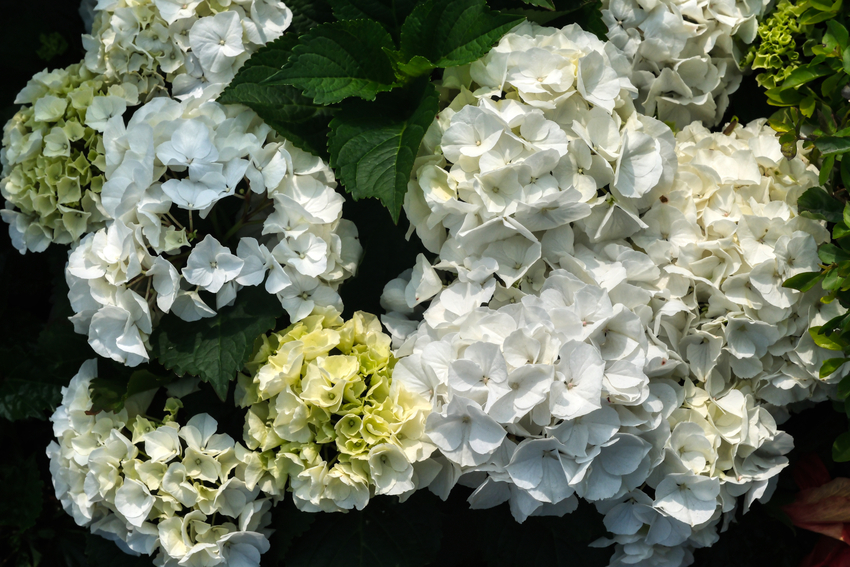 Acres of extraordinary flowers.
Acres of extraordinary flowers.
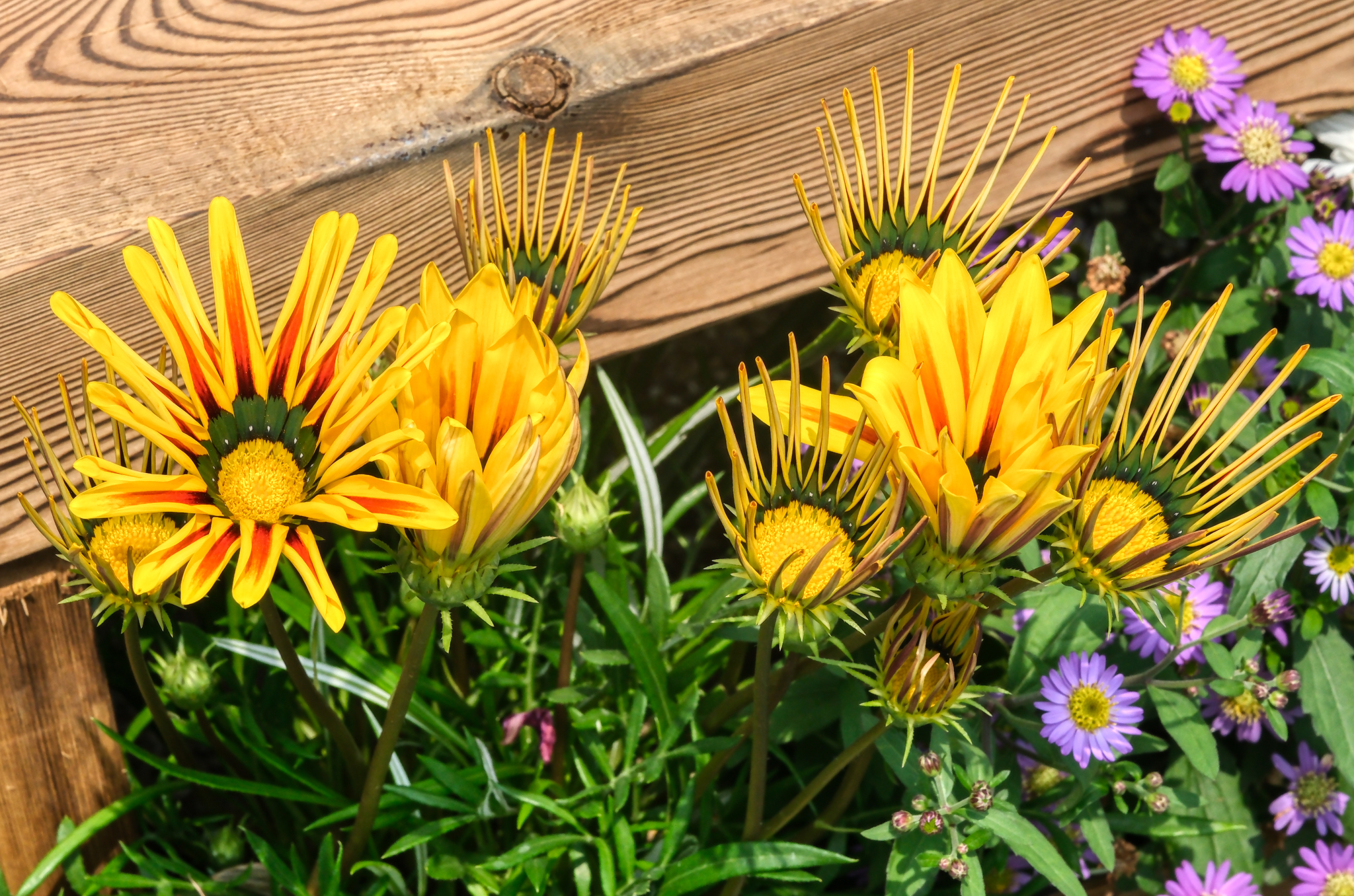 From these exciting yellow splashes, to . . .
From these exciting yellow splashes, to . . .
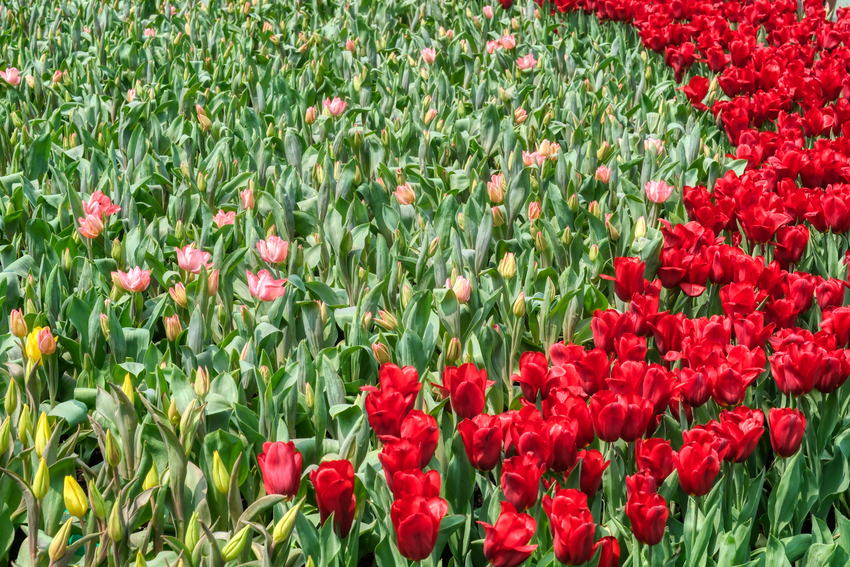 . . . to fields of colorful tulips . . . the Hong Kong Flower Show had it all!
. . . to fields of colorful tulips . . . the Hong Kong Flower Show had it all!
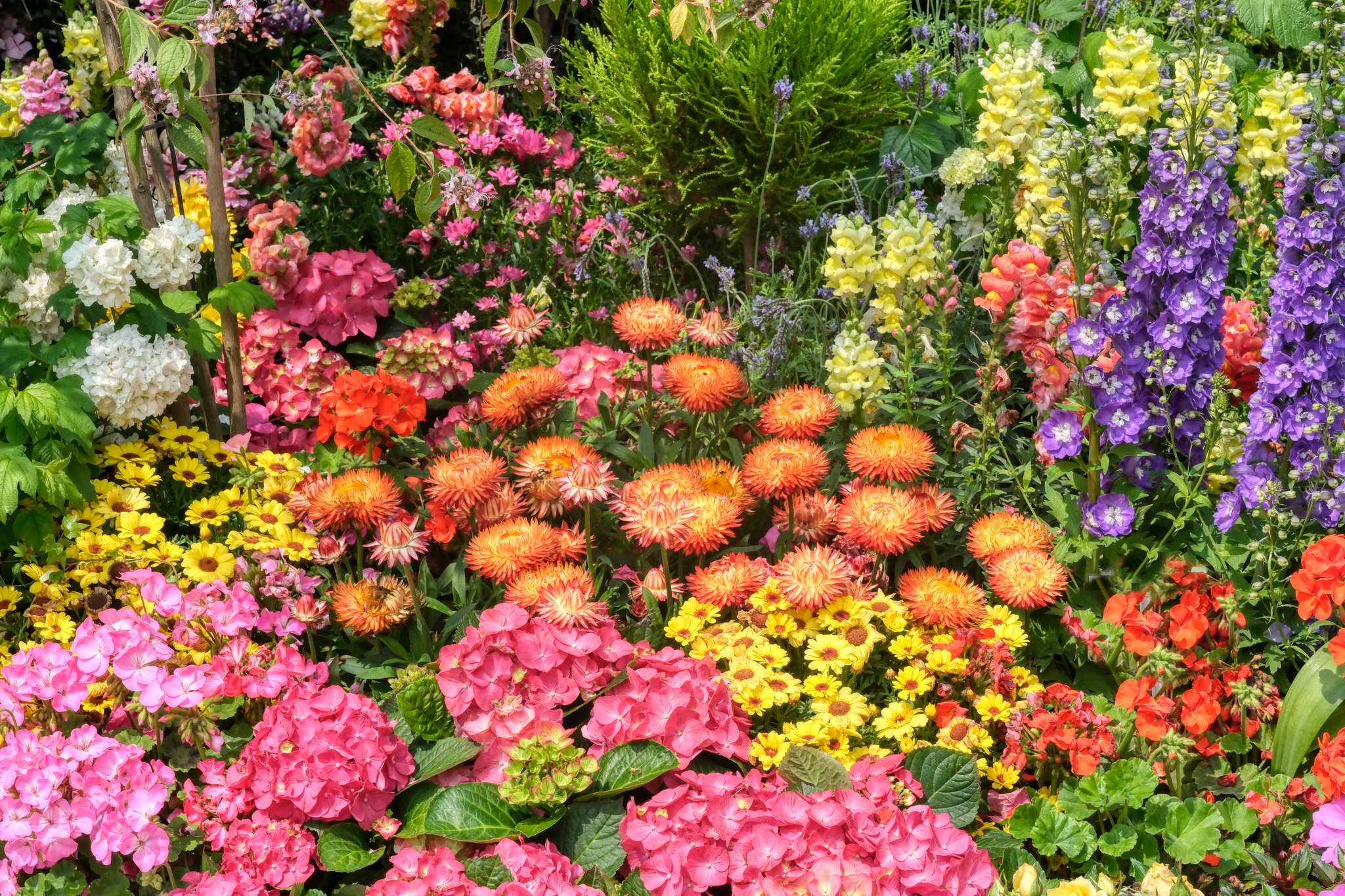 I wish I could tell you the names of all these flowers . . . but I did not take notes while there . . . I was only rffocusing on the beauty.
I wish I could tell you the names of all these flowers . . . but I did not take notes while there . . . I was only rffocusing on the beauty.
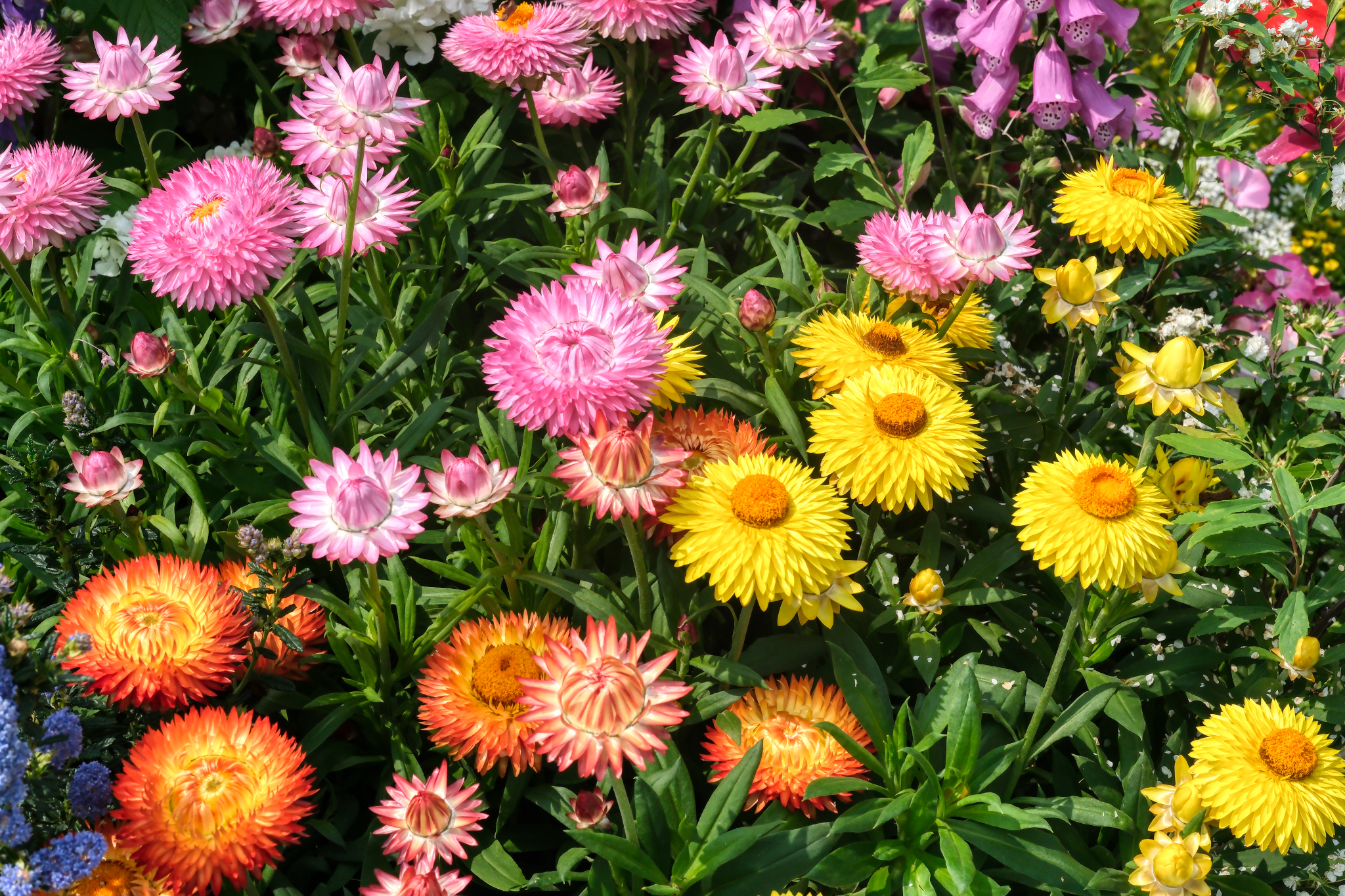 Such happiness expressed in this arrangement!
Such happiness expressed in this arrangement!
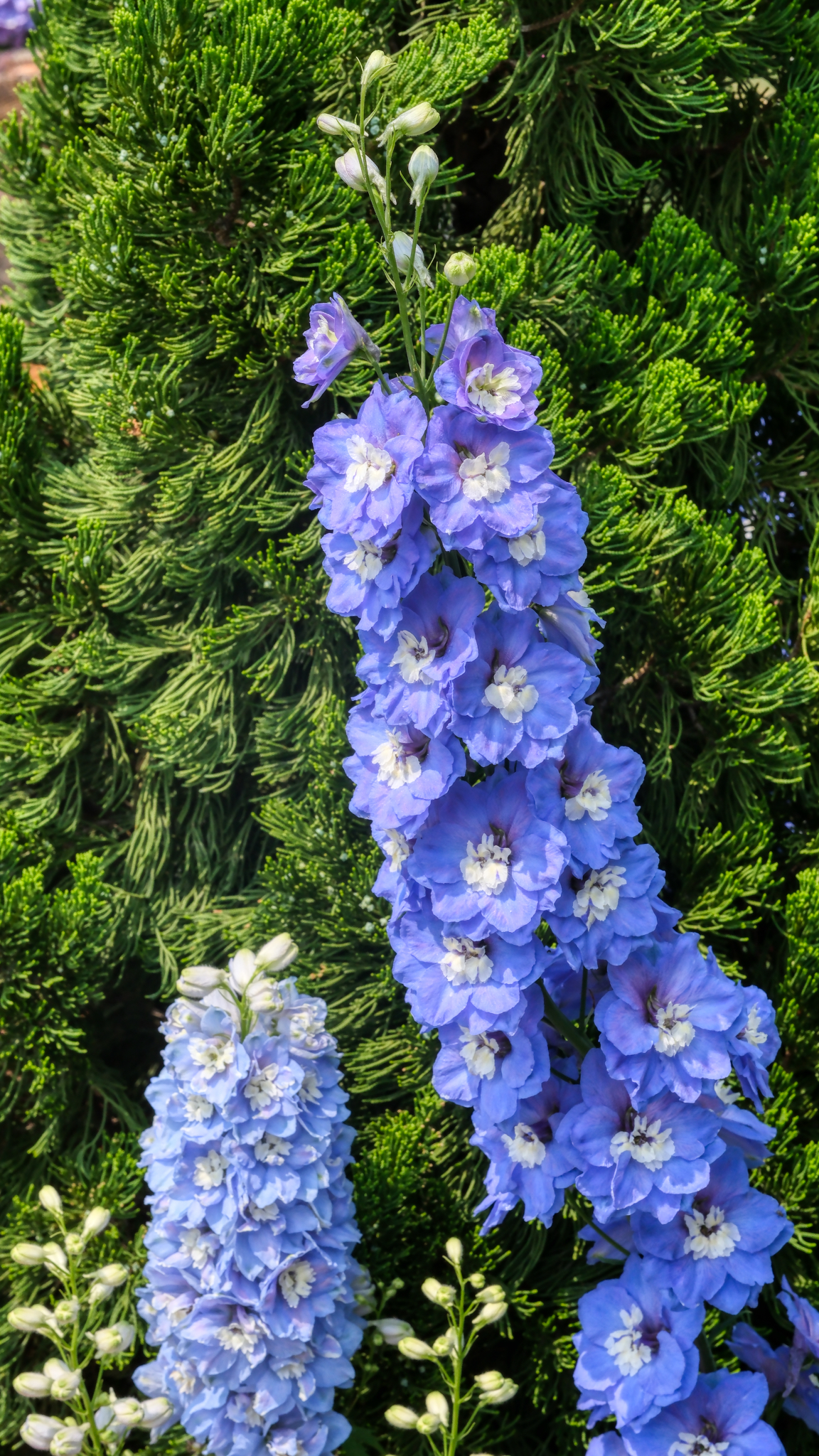 I think this show had more different kinds of flowers than I have ever seen i one place.
I think this show had more different kinds of flowers than I have ever seen i one place.
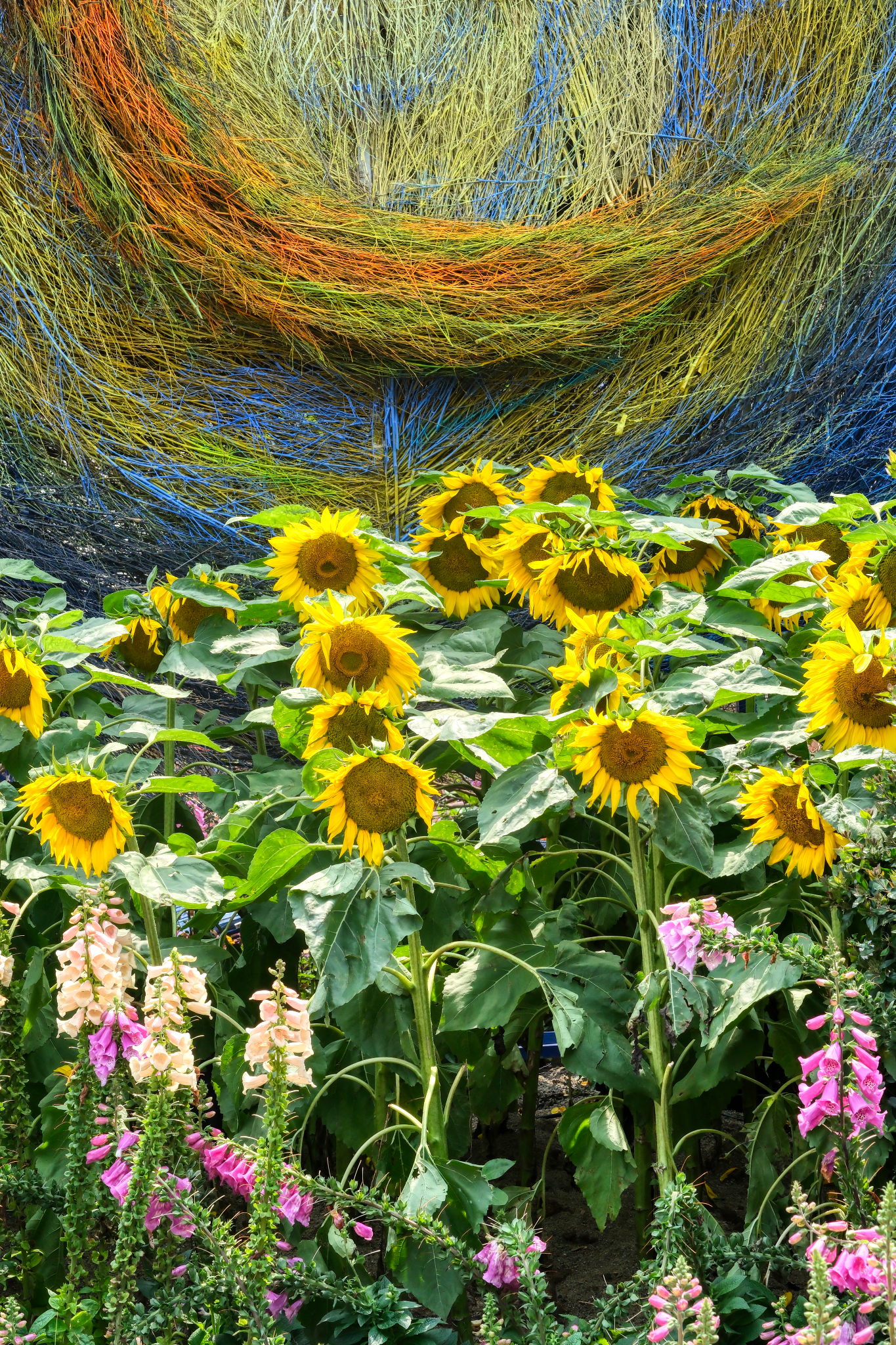 Some of the arrangements were fantistically beautiful.
Some of the arrangements were fantistically beautiful.
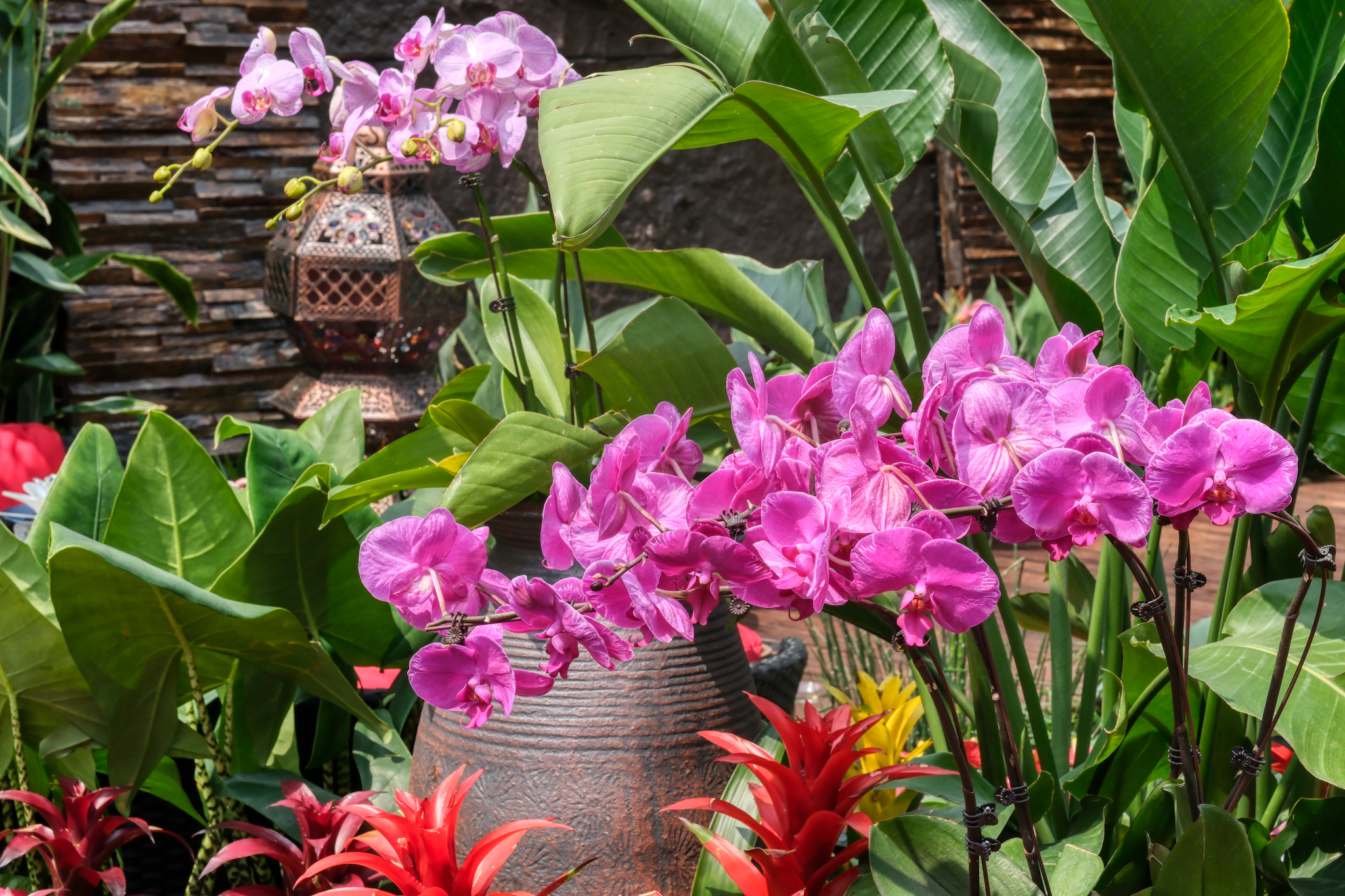 Thailand had an official entry . . . a large space to showcase Thai flowers and garden aesthetics.
Thailand had an official entry . . . a large space to showcase Thai flowers and garden aesthetics.
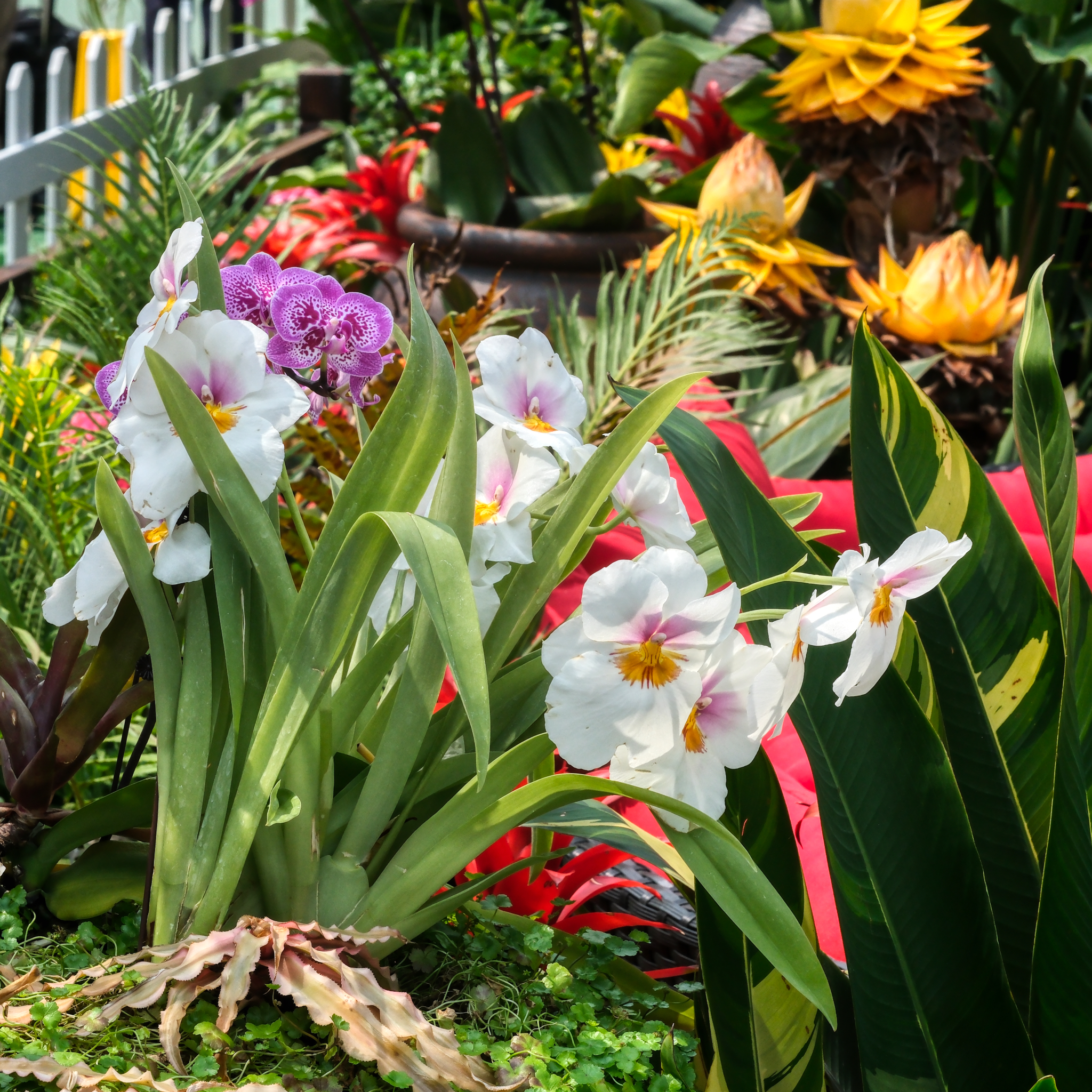 I have to confess a bias: I live in Thailand . . . and I think the Thai exhibit was the very best in the show. There, I said it.
I have to confess a bias: I live in Thailand . . . and I think the Thai exhibit was the very best in the show. There, I said it.
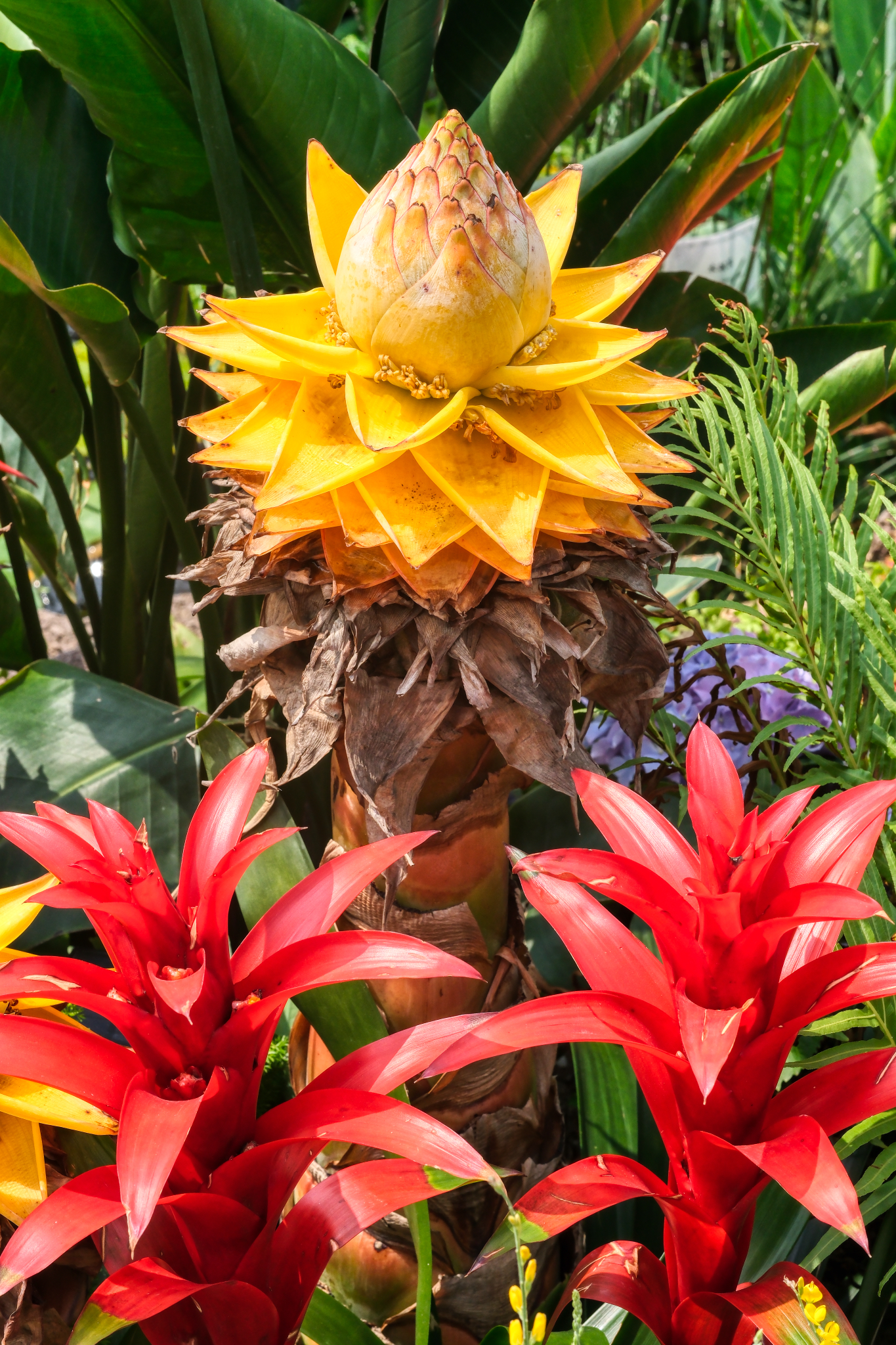 I have these in myb garden . . . astonishing!
I have these in myb garden . . . astonishing!
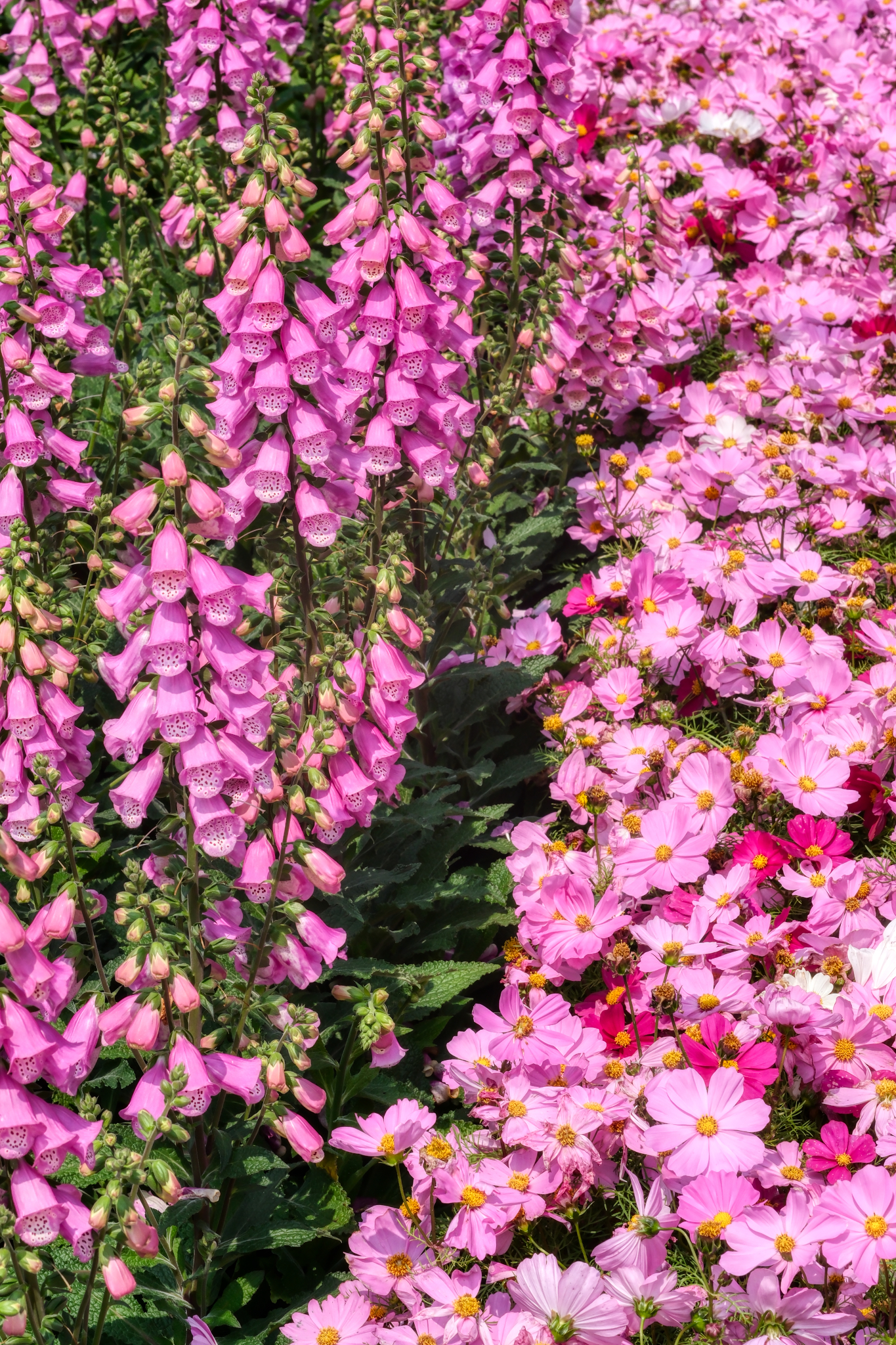 Bluebells galore!!!
Bluebells galore!!!
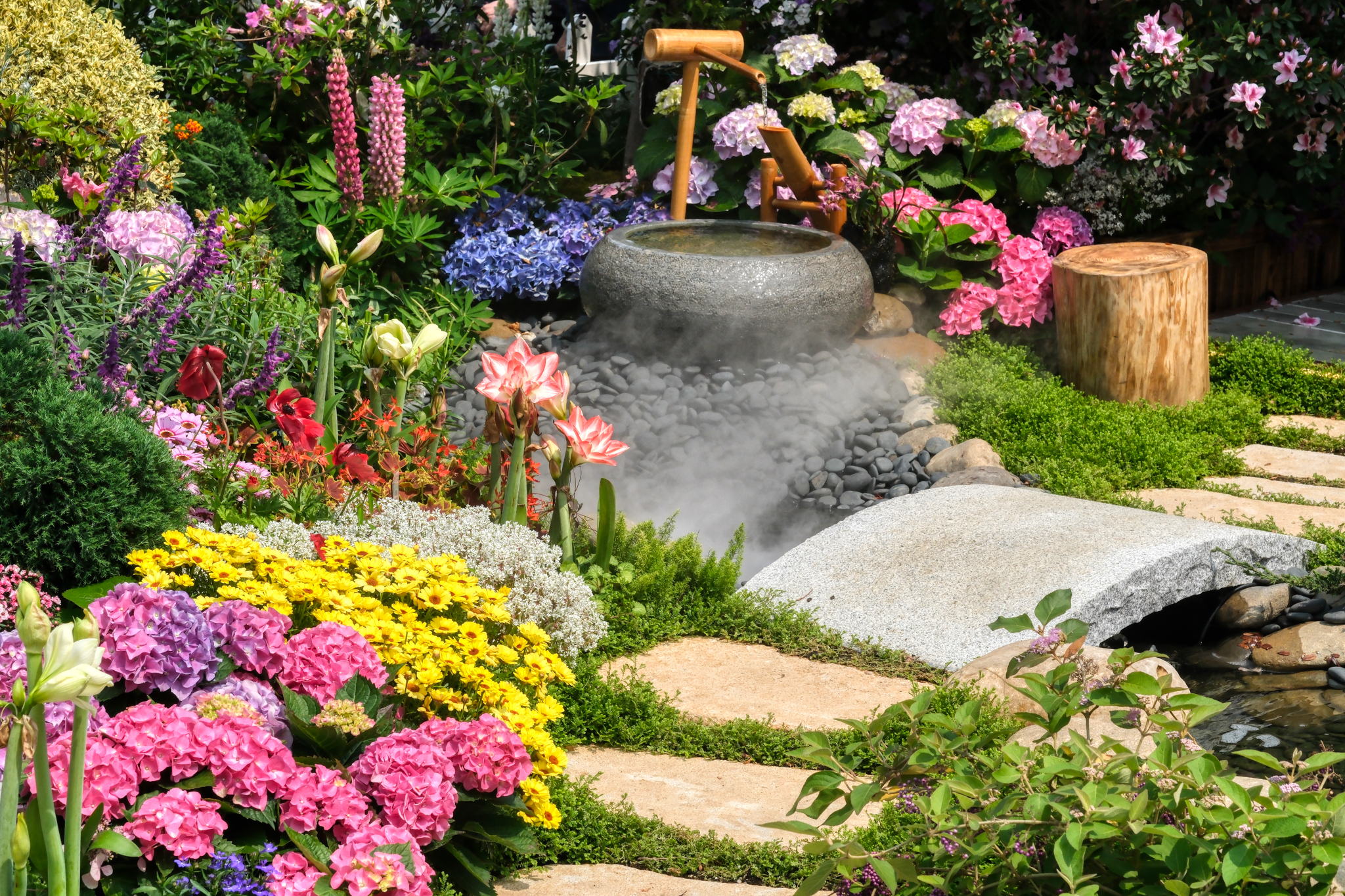 Japan also had an official entry . . . and it was beautiful too . . . and very Japanese!
Japan also had an official entry . . . and it was beautiful too . . . and very Japanese!
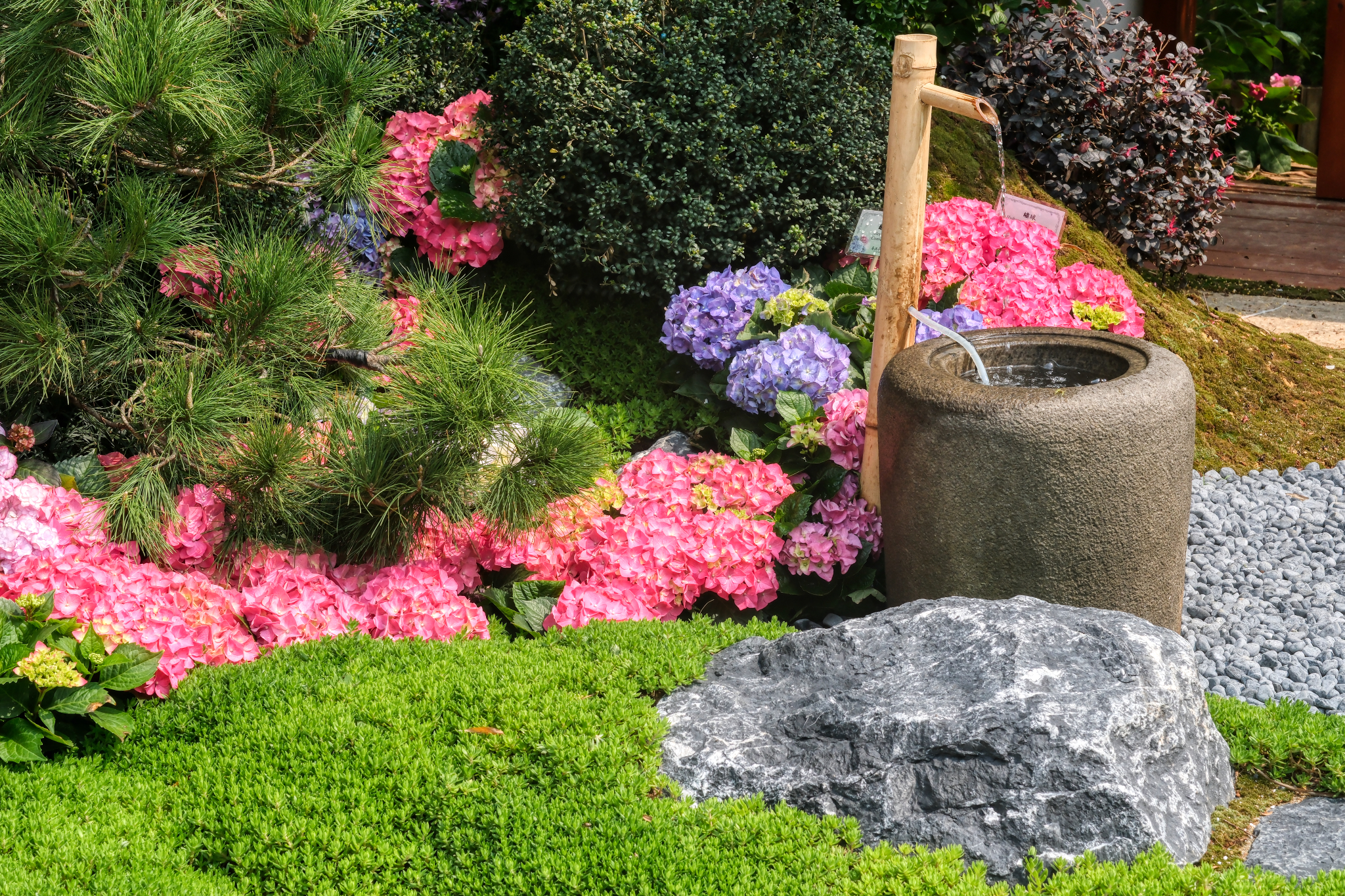 Japanese garden style.
Japanese garden style.
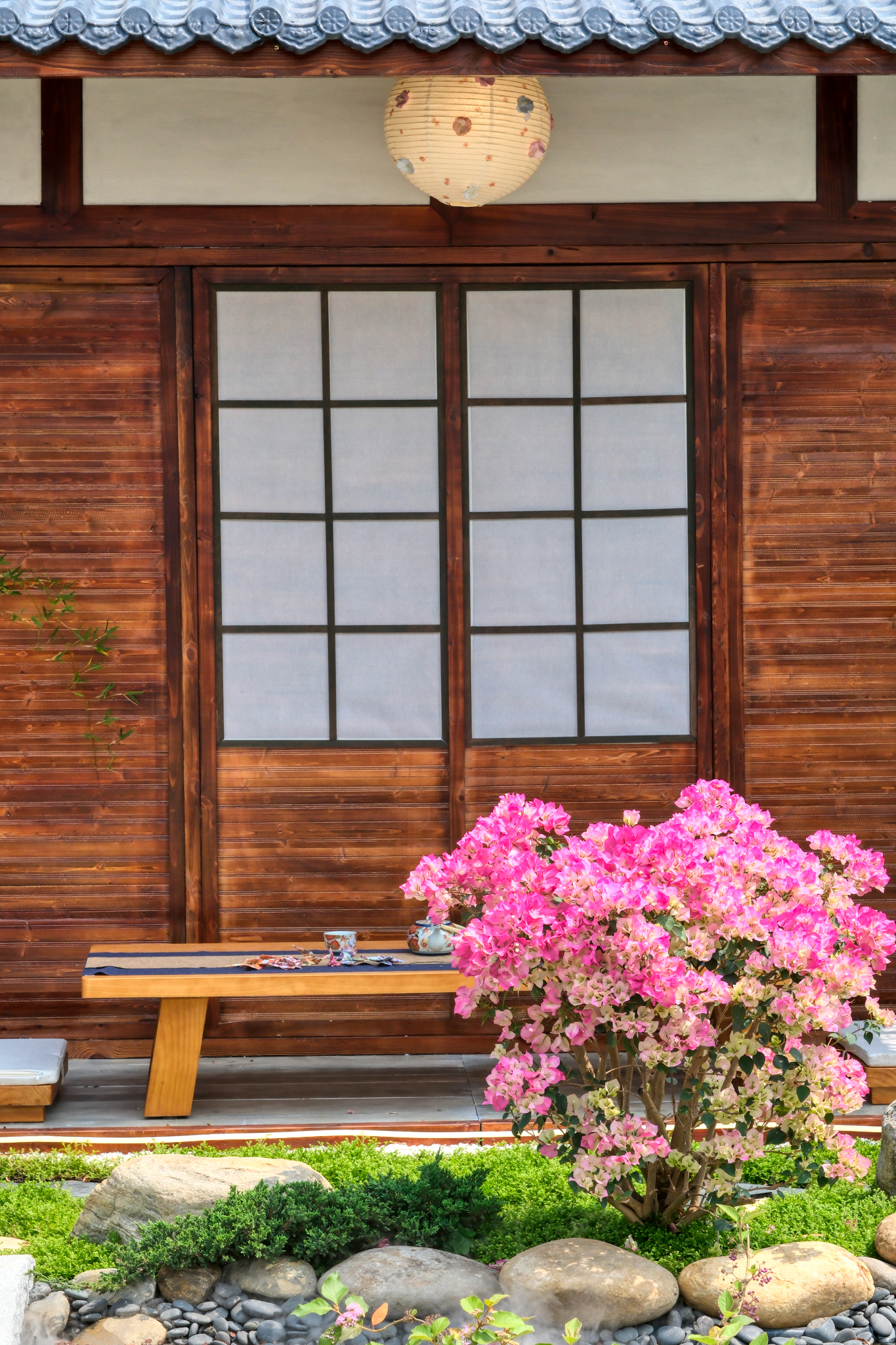 A classic formal Japanese garden.
A classic formal Japanese garden.
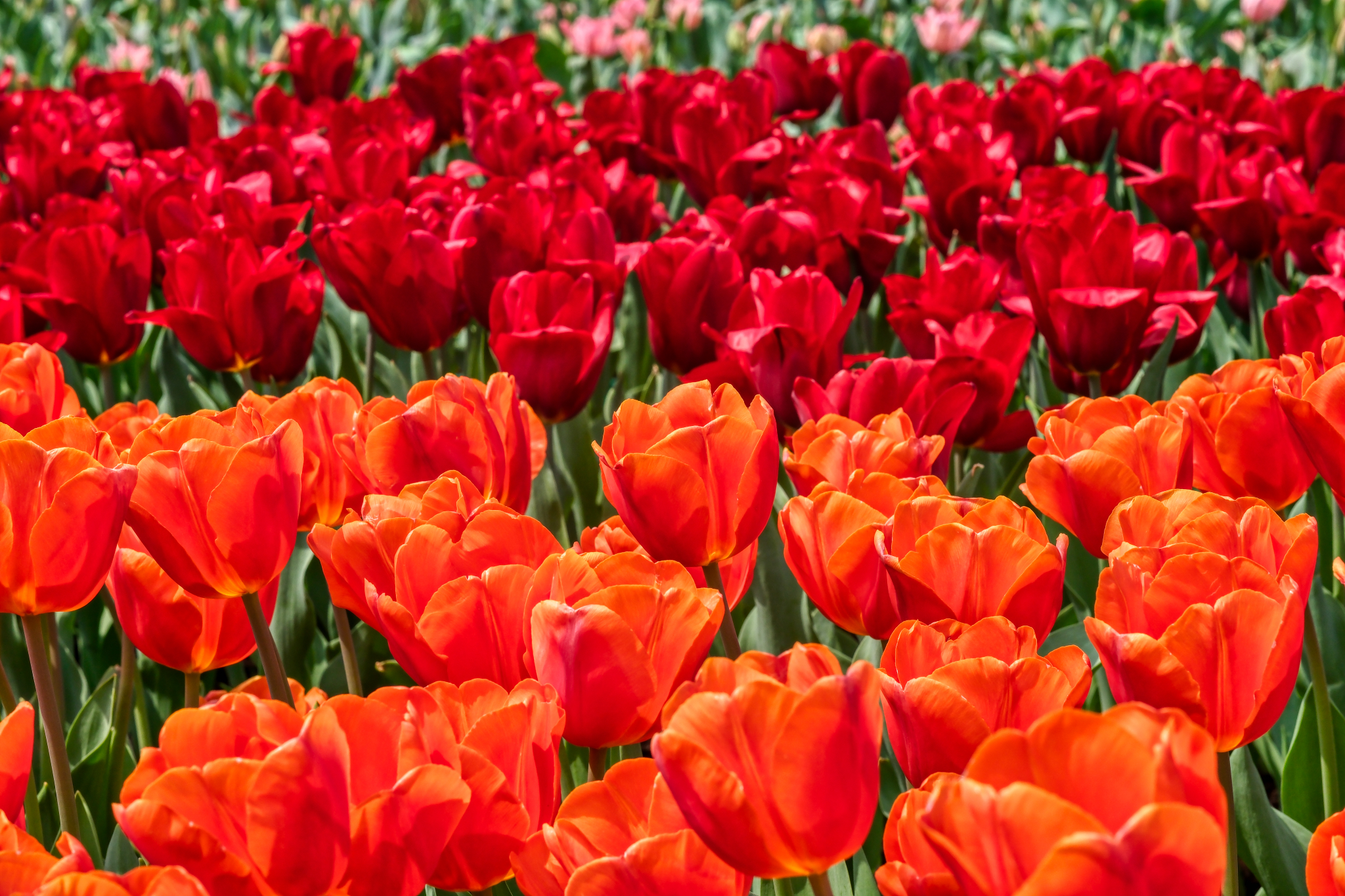 Massivce tulip plantings everywhere . . . the colors were sooooo bright!
Massivce tulip plantings everywhere . . . the colors were sooooo bright!
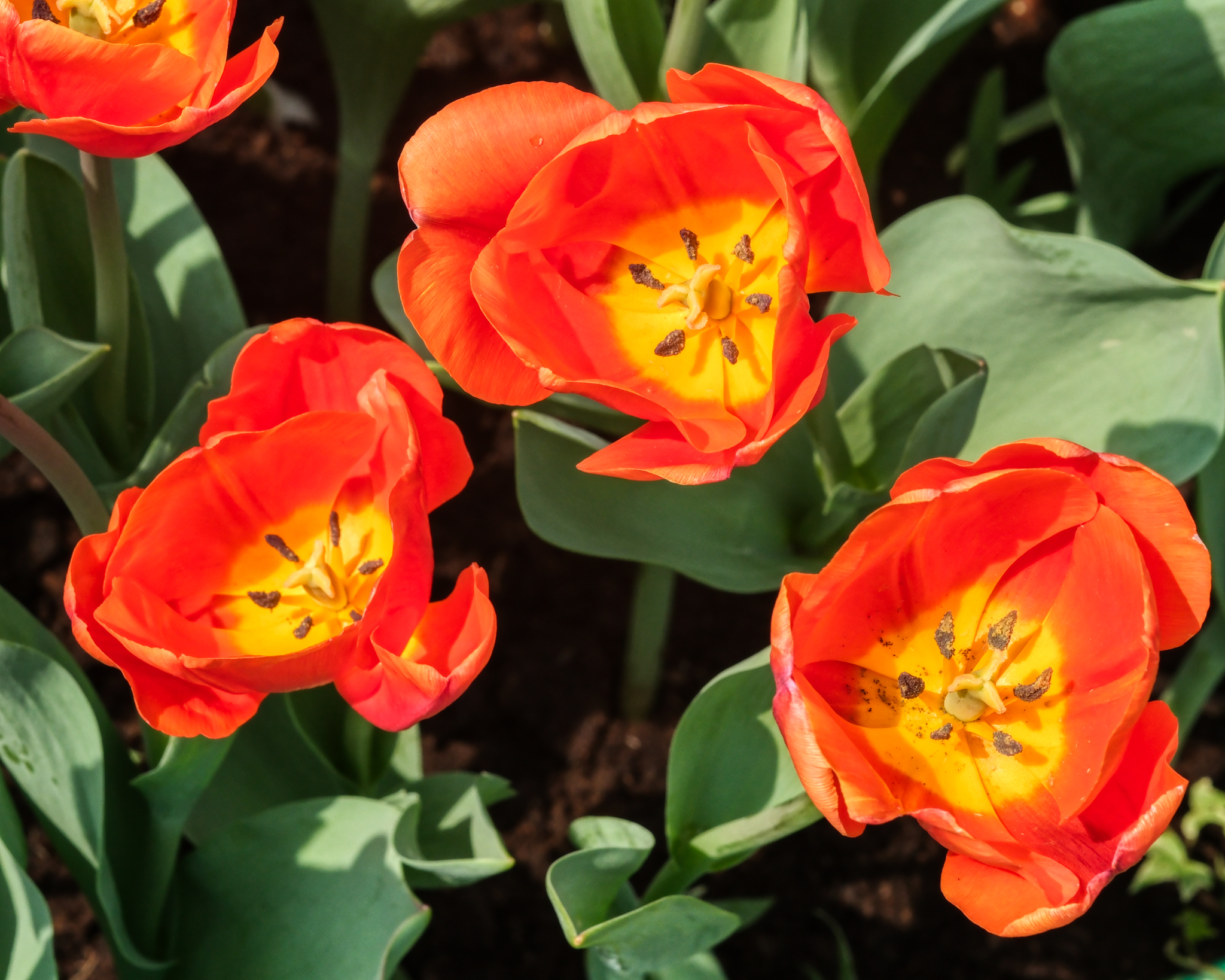 Tulip interiors are also interestimng.
Tulip interiors are also interestimng.
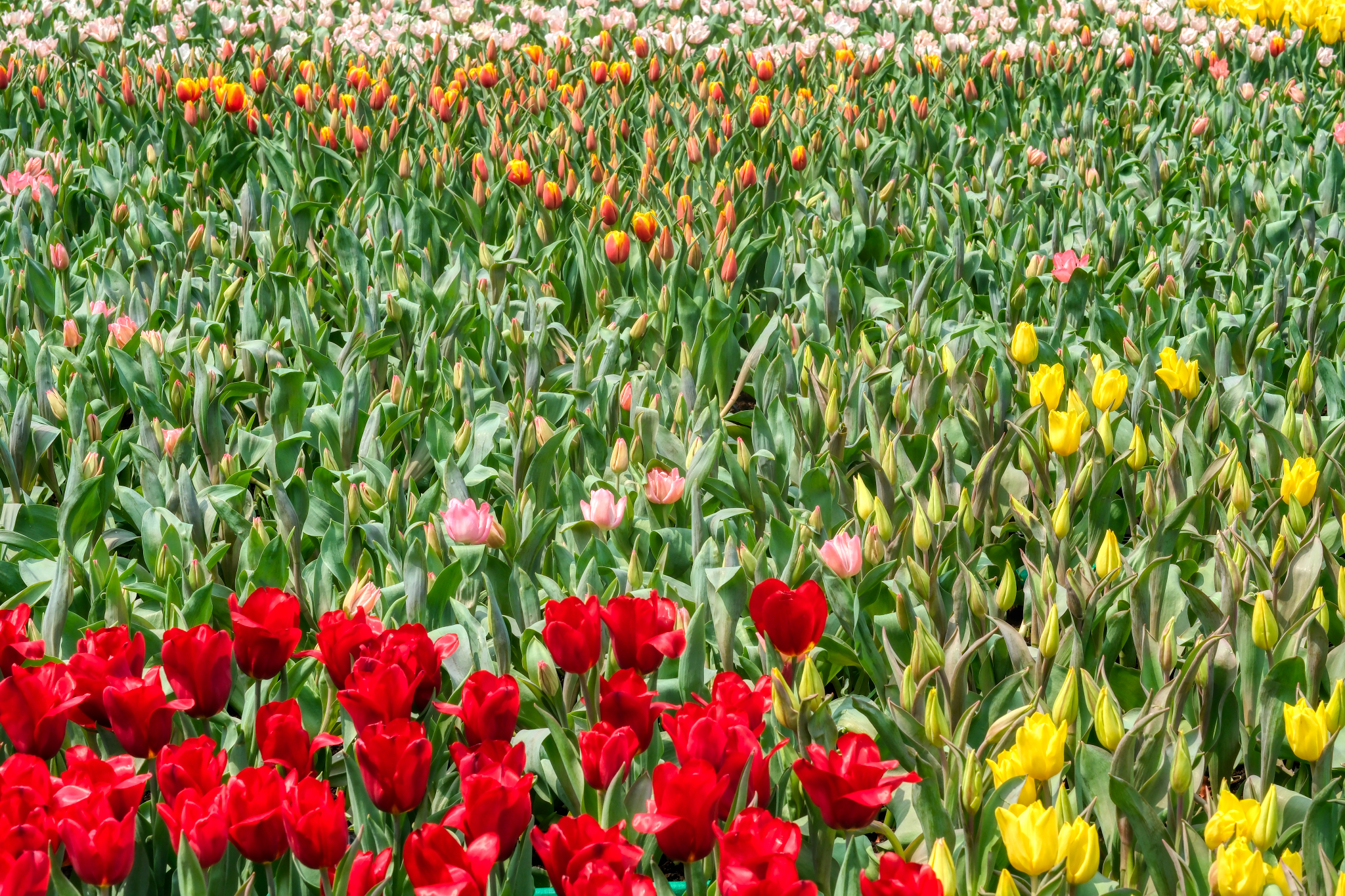 More tulips . . . on the way.
More tulips . . . on the way.
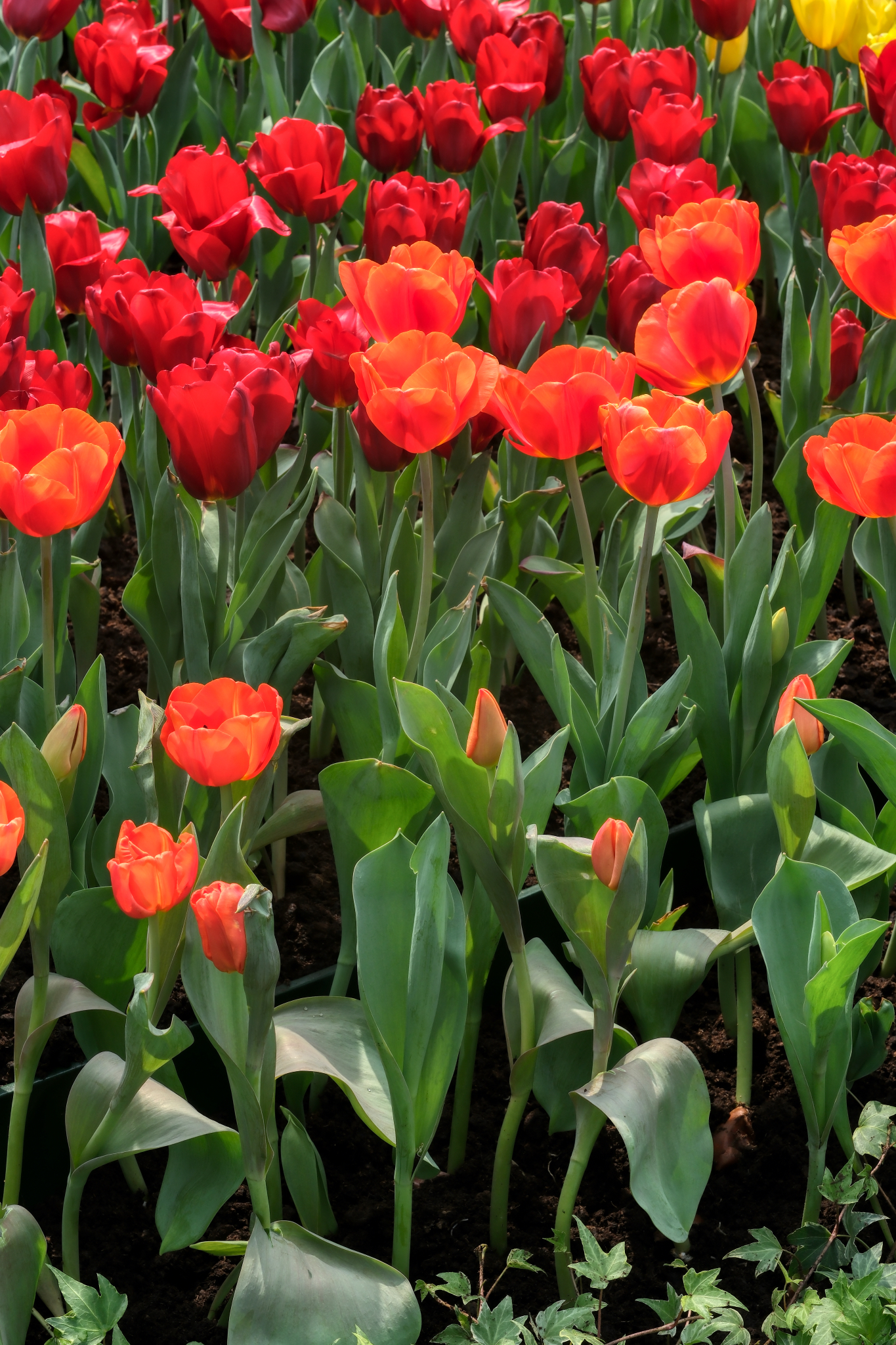 Tulips, tulips, tulips . . . I could have done an entire entry on tulips . . . I took so many photos.
Tulips, tulips, tulips . . . I could have done an entire entry on tulips . . . I took so many photos.
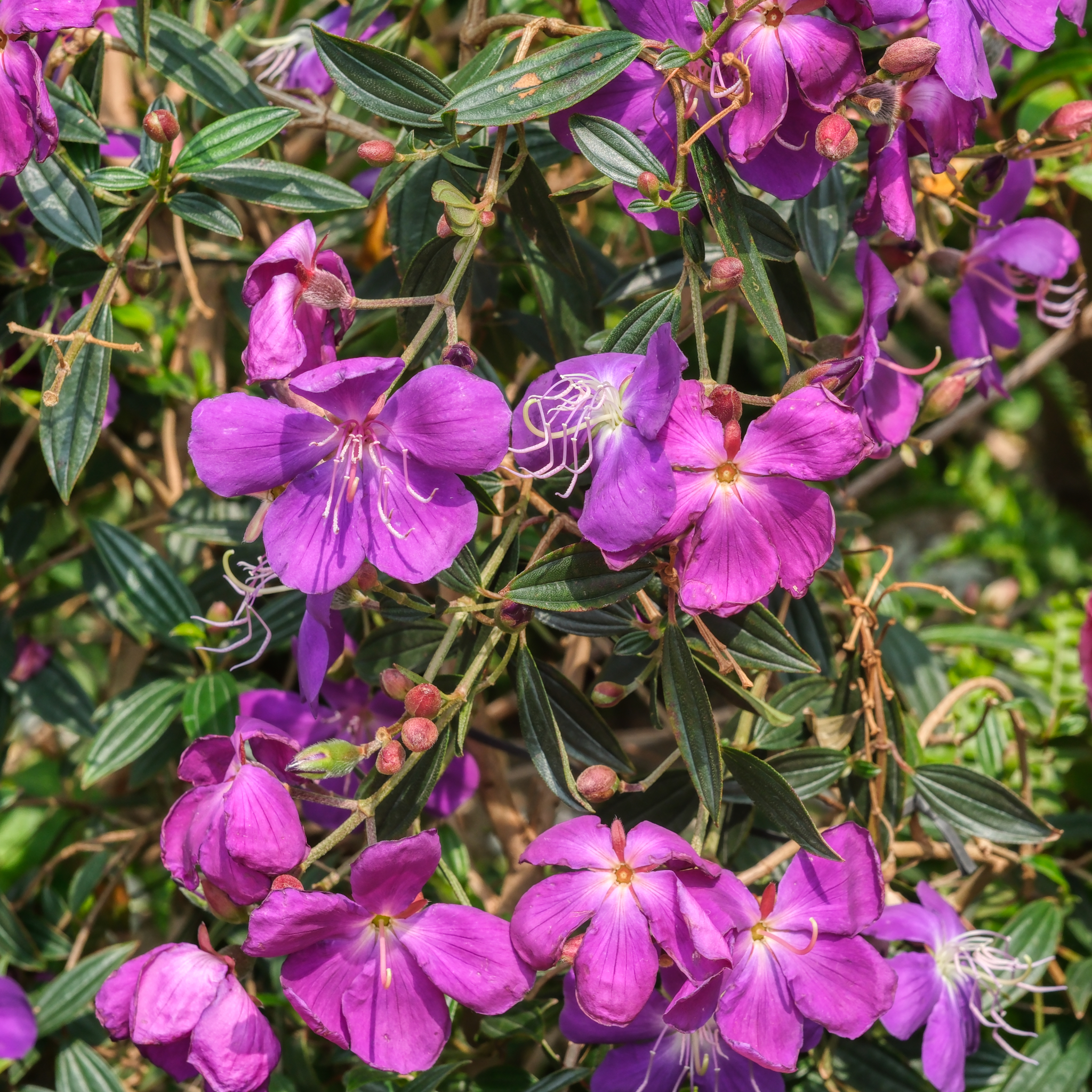 I have these in my garden.
I have these in my garden.
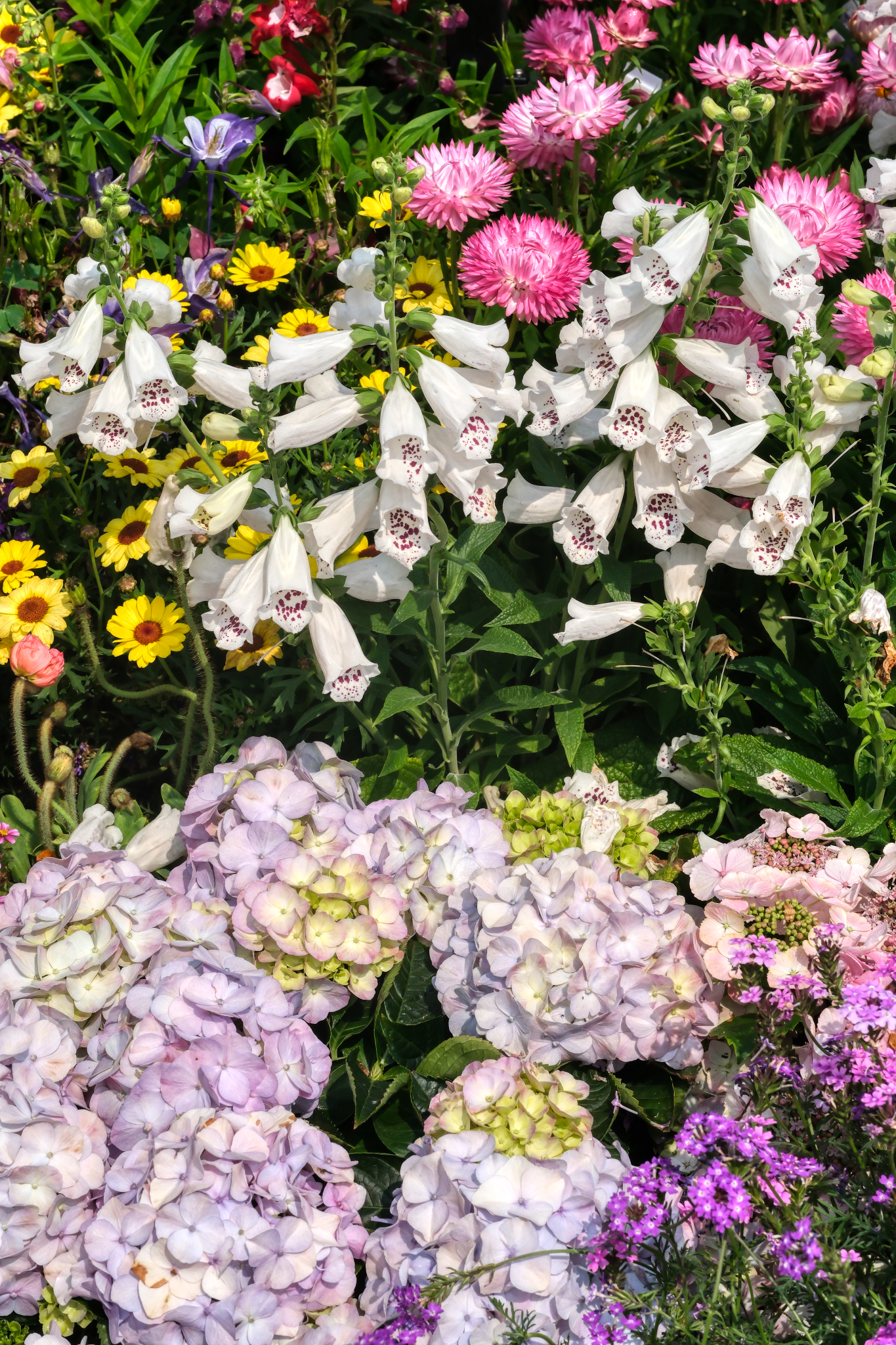 A mixed arrangement. Nice.
A mixed arrangement. Nice.
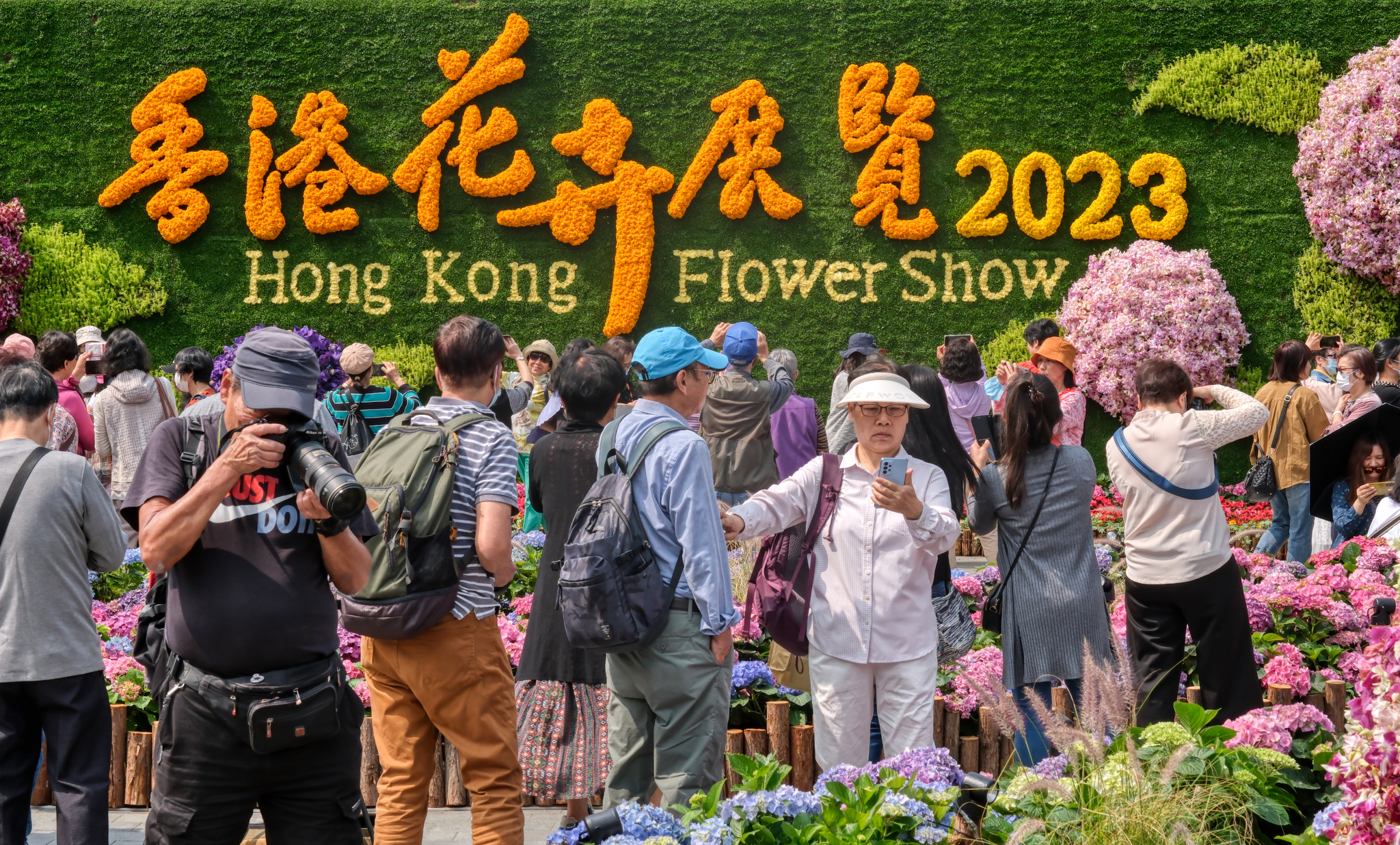 I wasn't the only person who thought of bringing their camera to the Flower Show. Everybody, and I do mean EVERYBODY, had their cameras and phones out taking photos . . . and there was some elbowing here and there to get the 'best' photo angles.
I wasn't the only person who thought of bringing their camera to the Flower Show. Everybody, and I do mean EVERYBODY, had their cameras and phones out taking photos . . . and there was some elbowing here and there to get the 'best' photo angles.
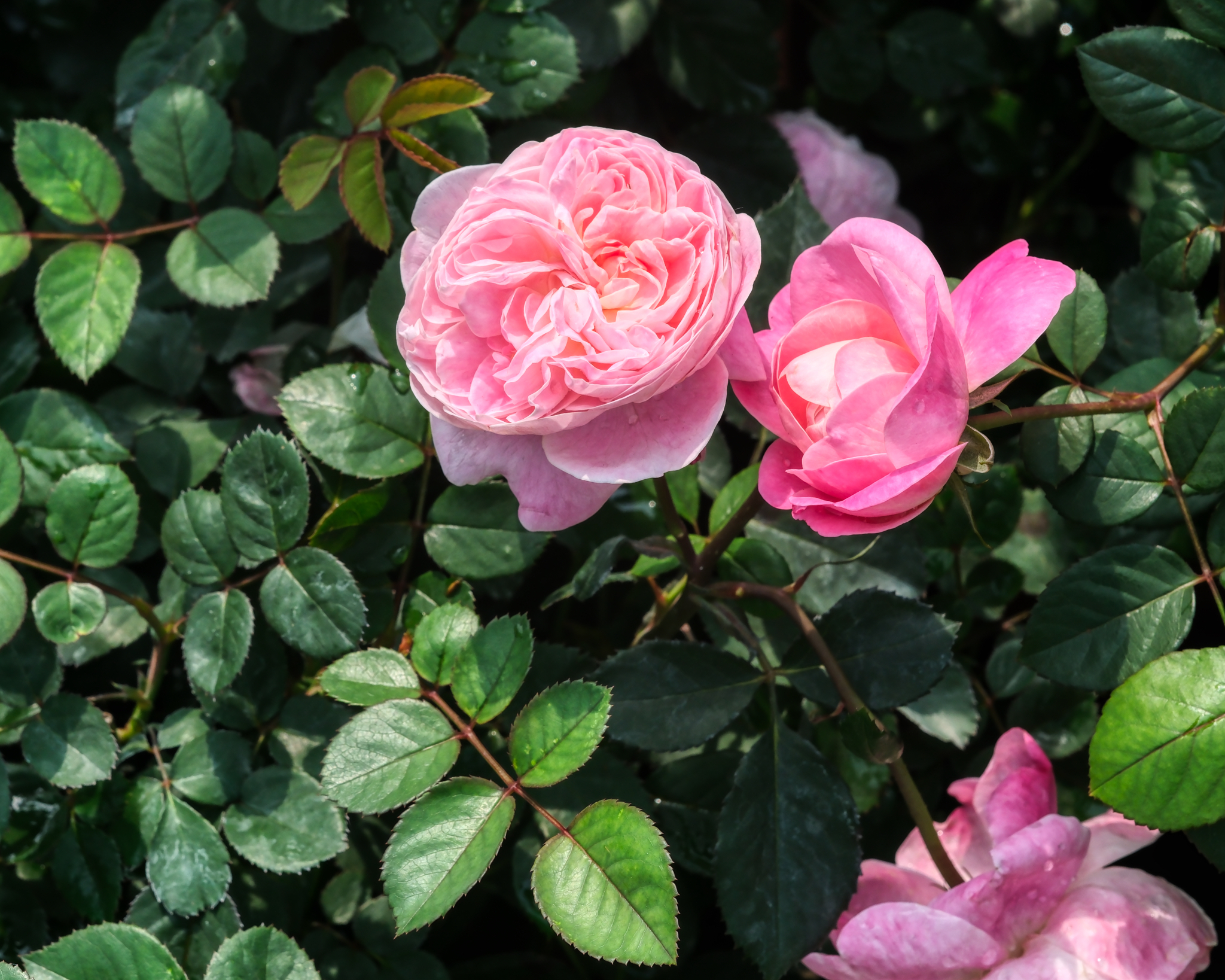 A lone pink rose.
A lone pink rose.
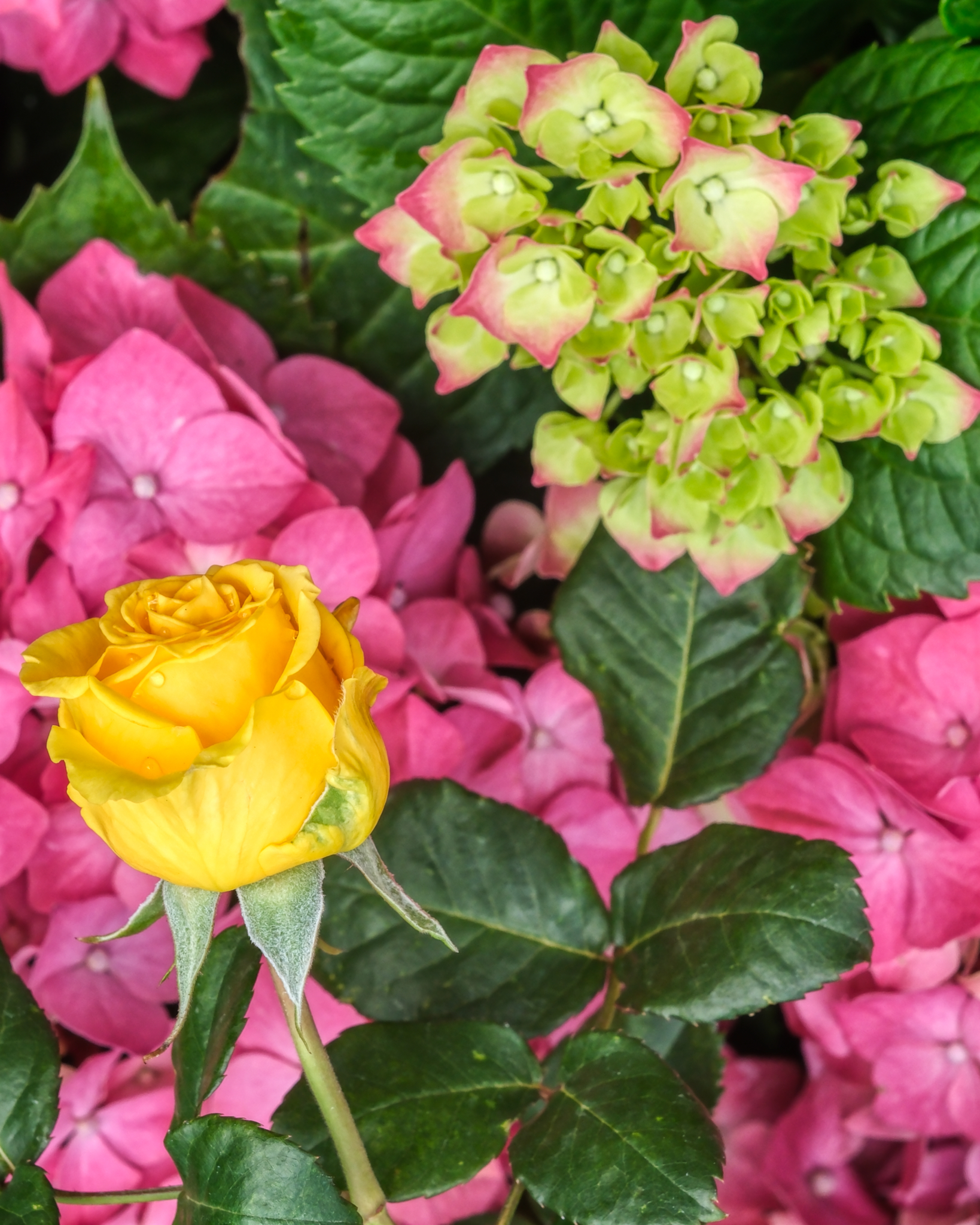 New yellow rose in colorful company.
New yellow rose in colorful company.
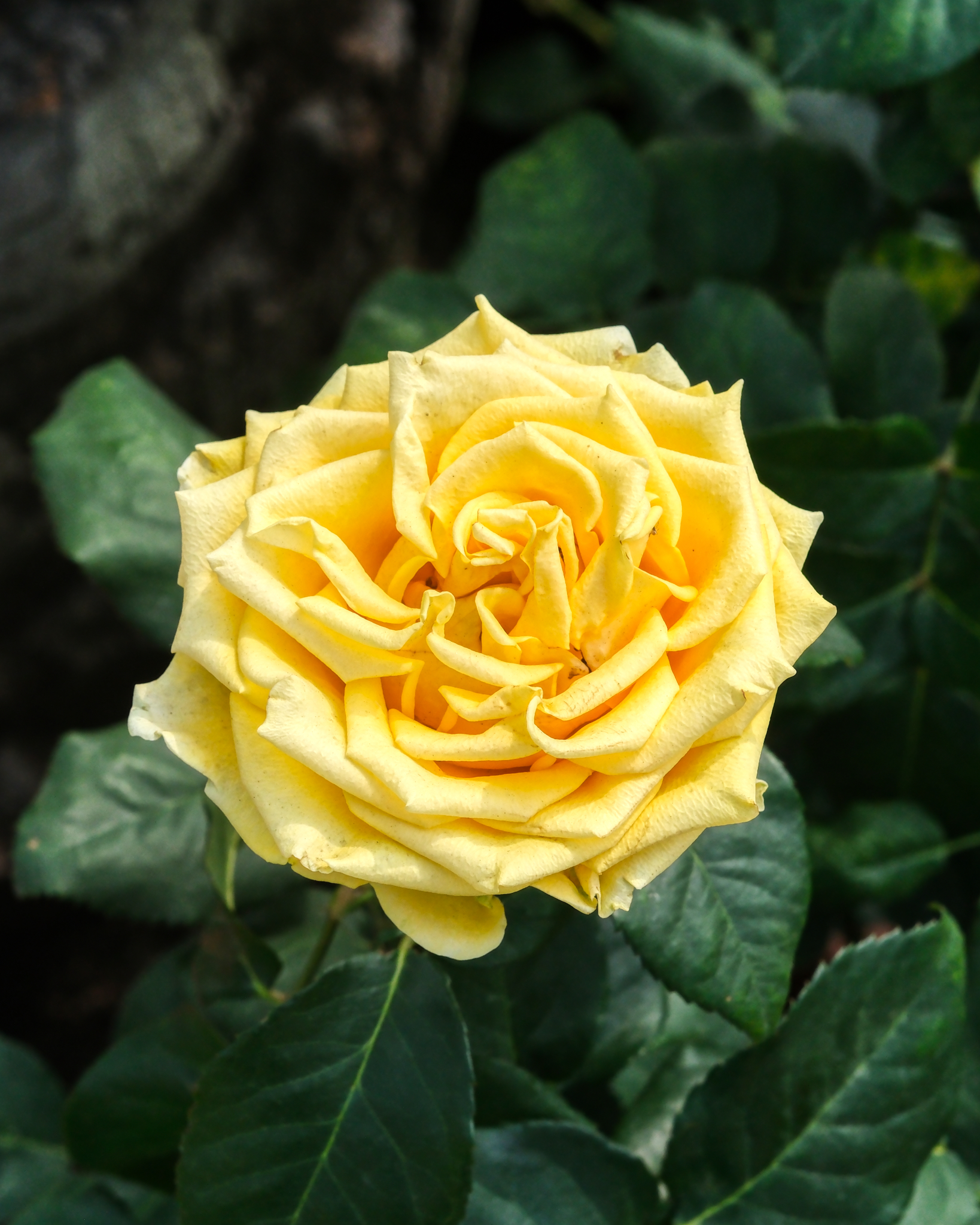 Yellow rose showing off.
Yellow rose showing off.
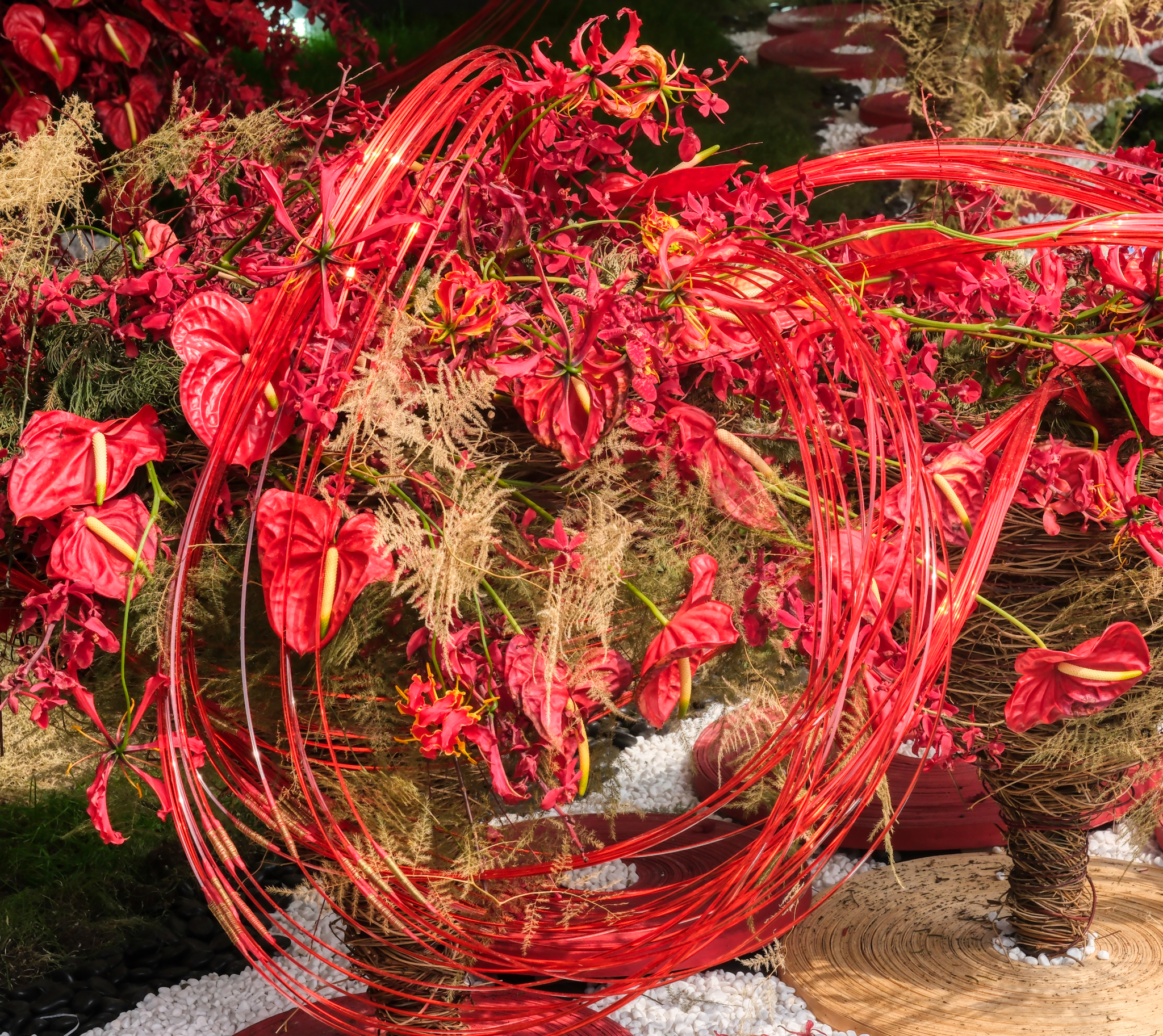 There was a small pavilion with flower arrangements . . . I think this one won.
There was a small pavilion with flower arrangements . . . I think this one won.
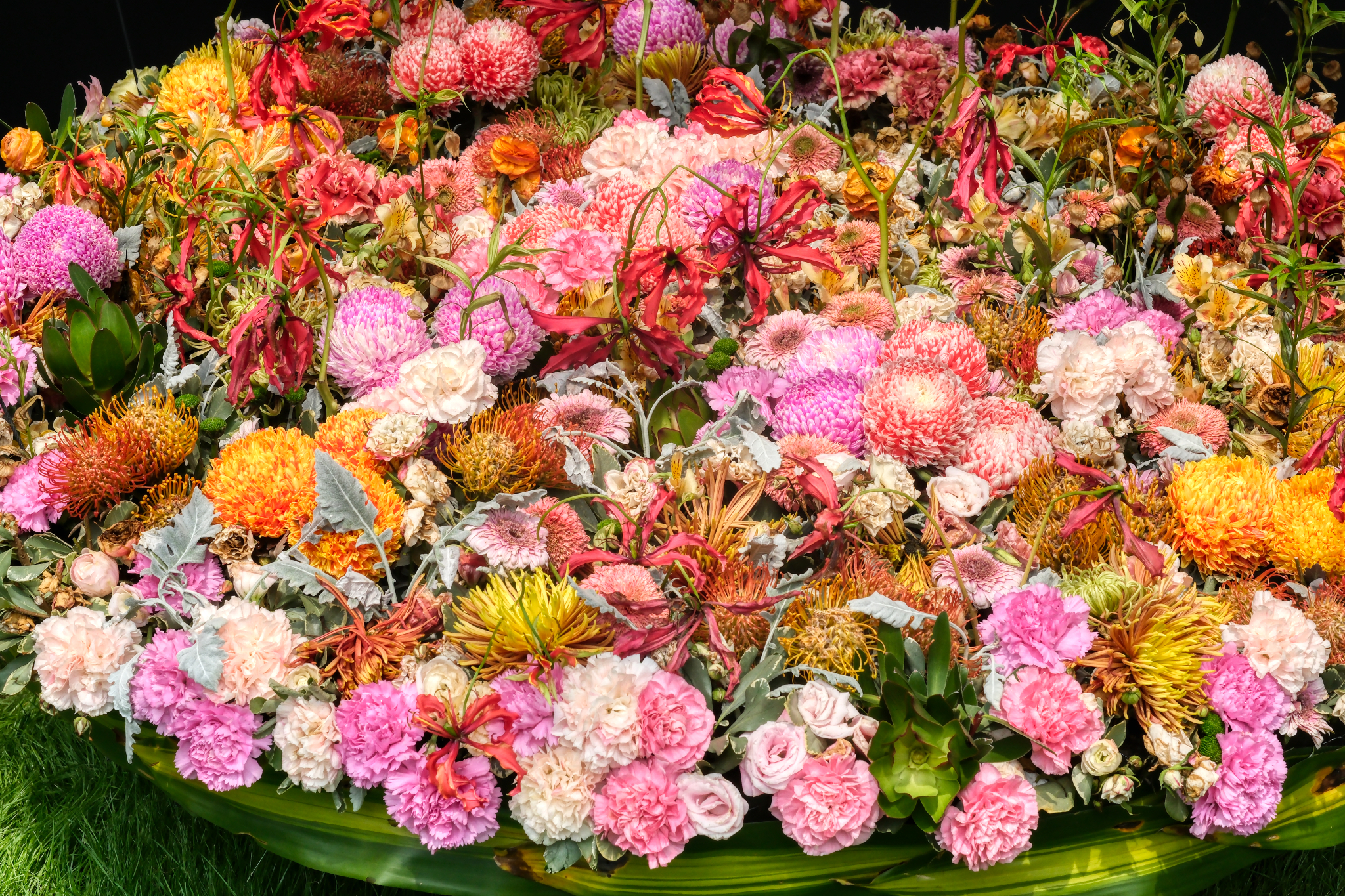 A massive flower arrangement. Wow!
A massive flower arrangement. Wow!
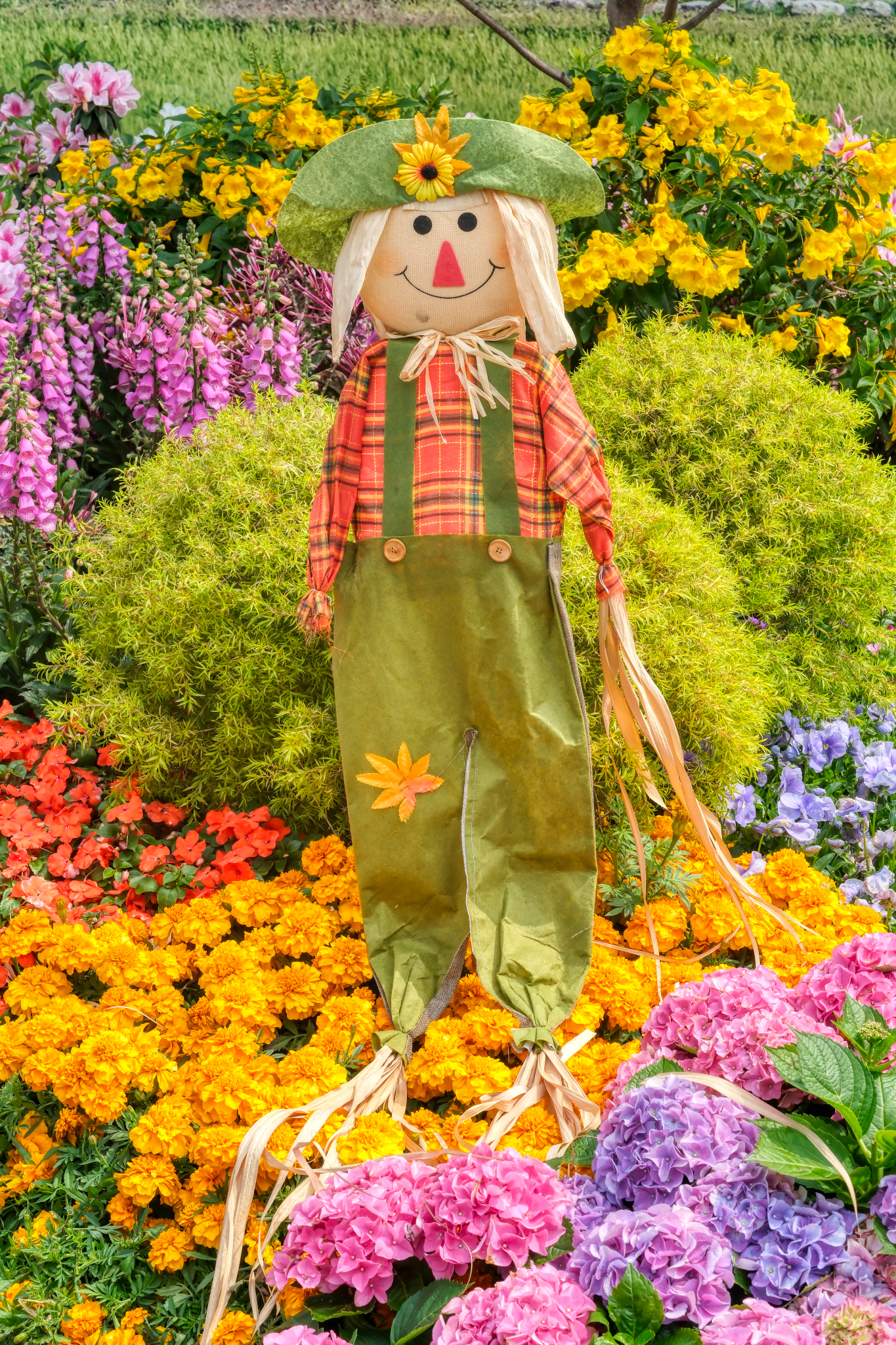 A cute "farm" display.
A cute "farm" display.
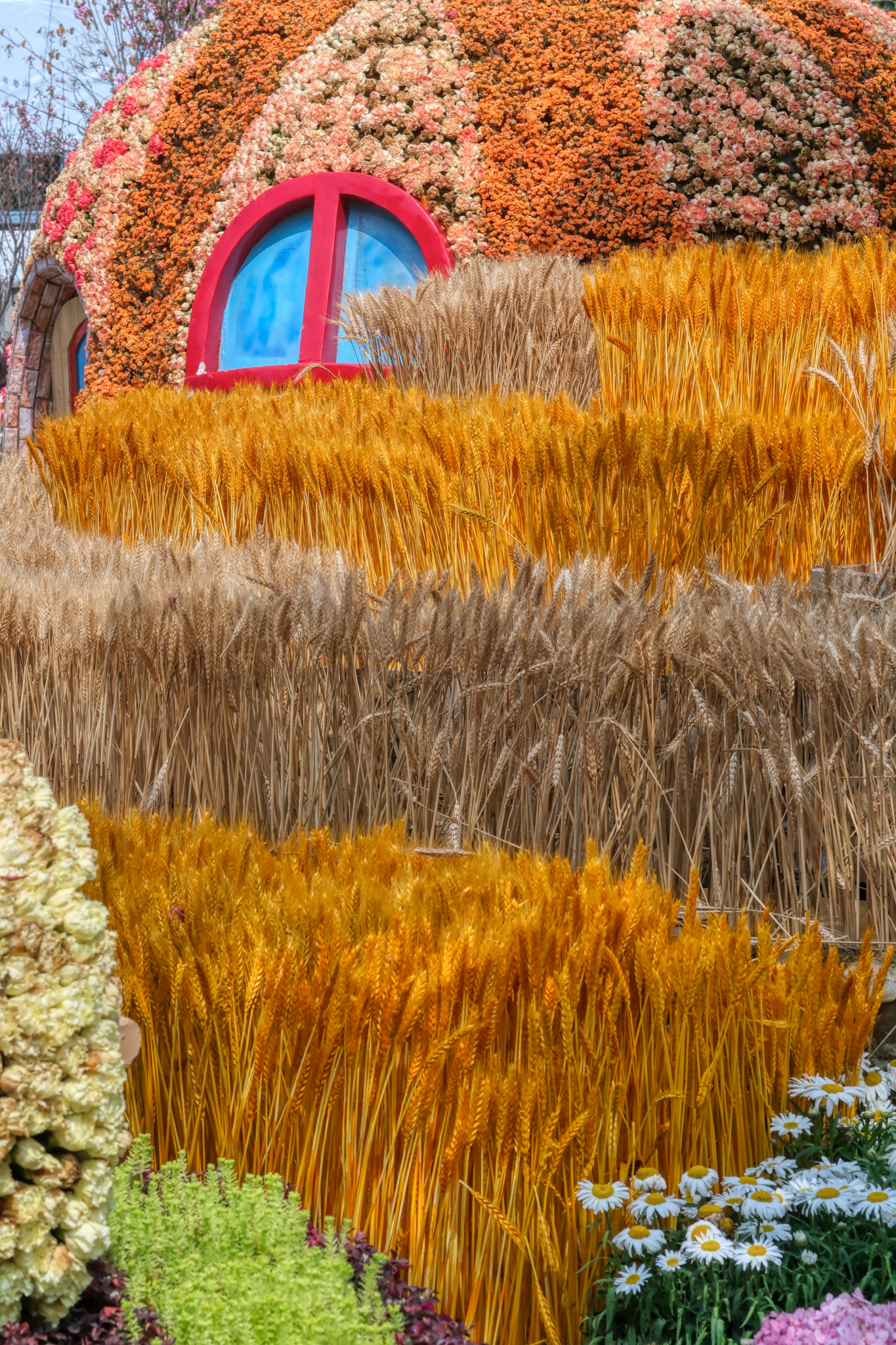 The European-style farm display used grain stalks with good results.
The European-style farm display used grain stalks with good results.
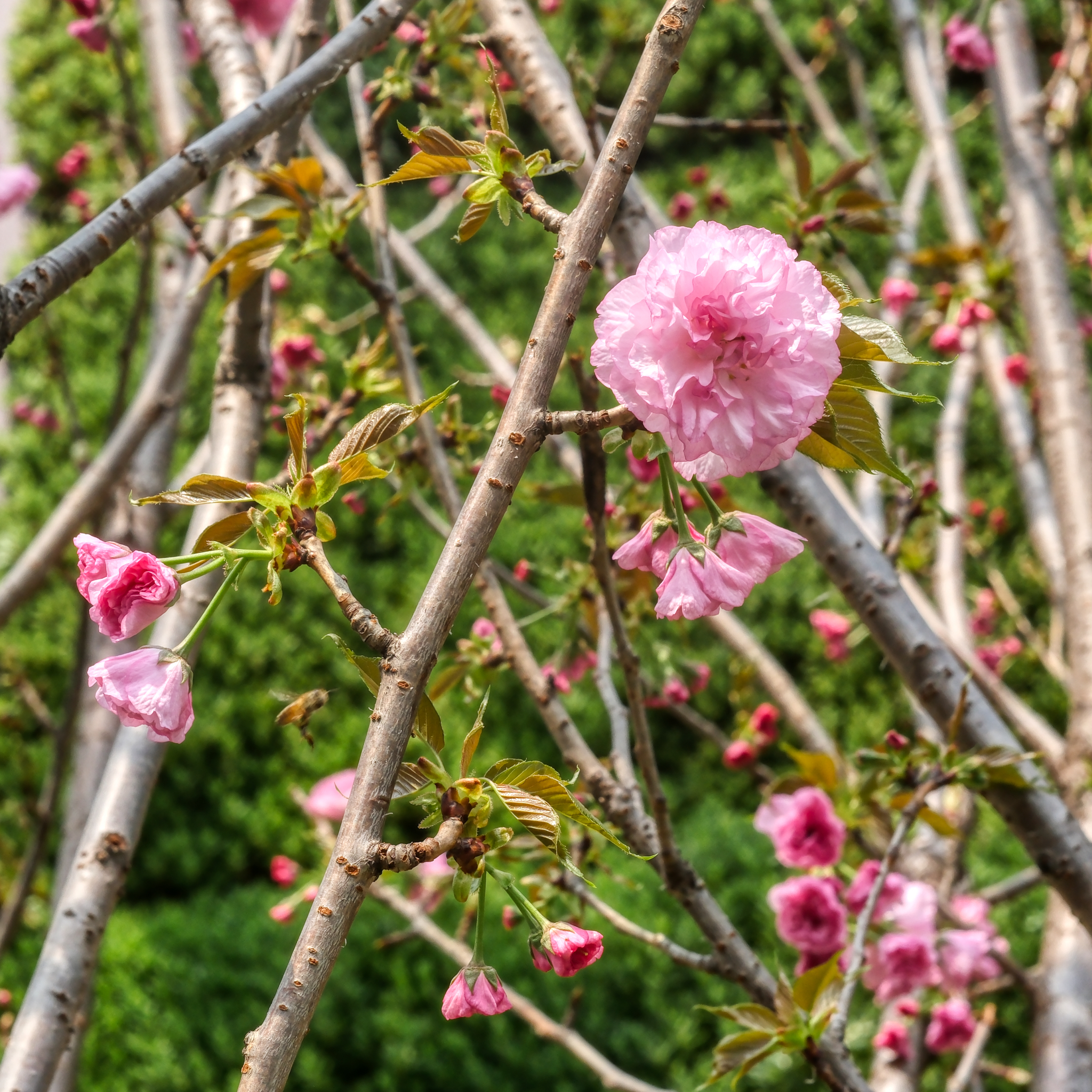 I do not know how they managed to get these fruit trees to blossom at the exact time for the Flower Show . . .
I do not know how they managed to get these fruit trees to blossom at the exact time for the Flower Show . . .
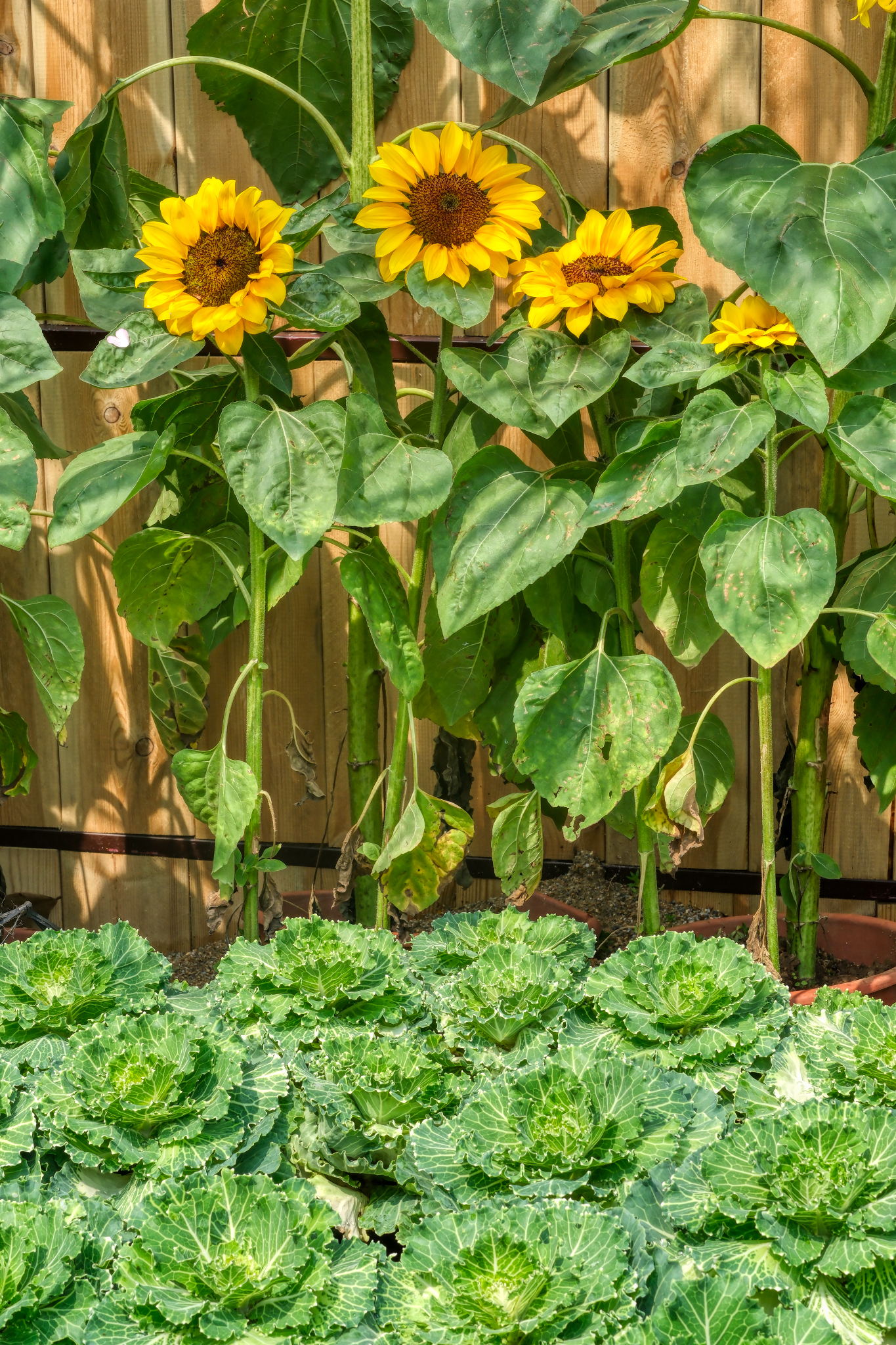 A lovely sunflower and succulent ground cover arrangement.
A lovely sunflower and succulent ground cover arrangement.
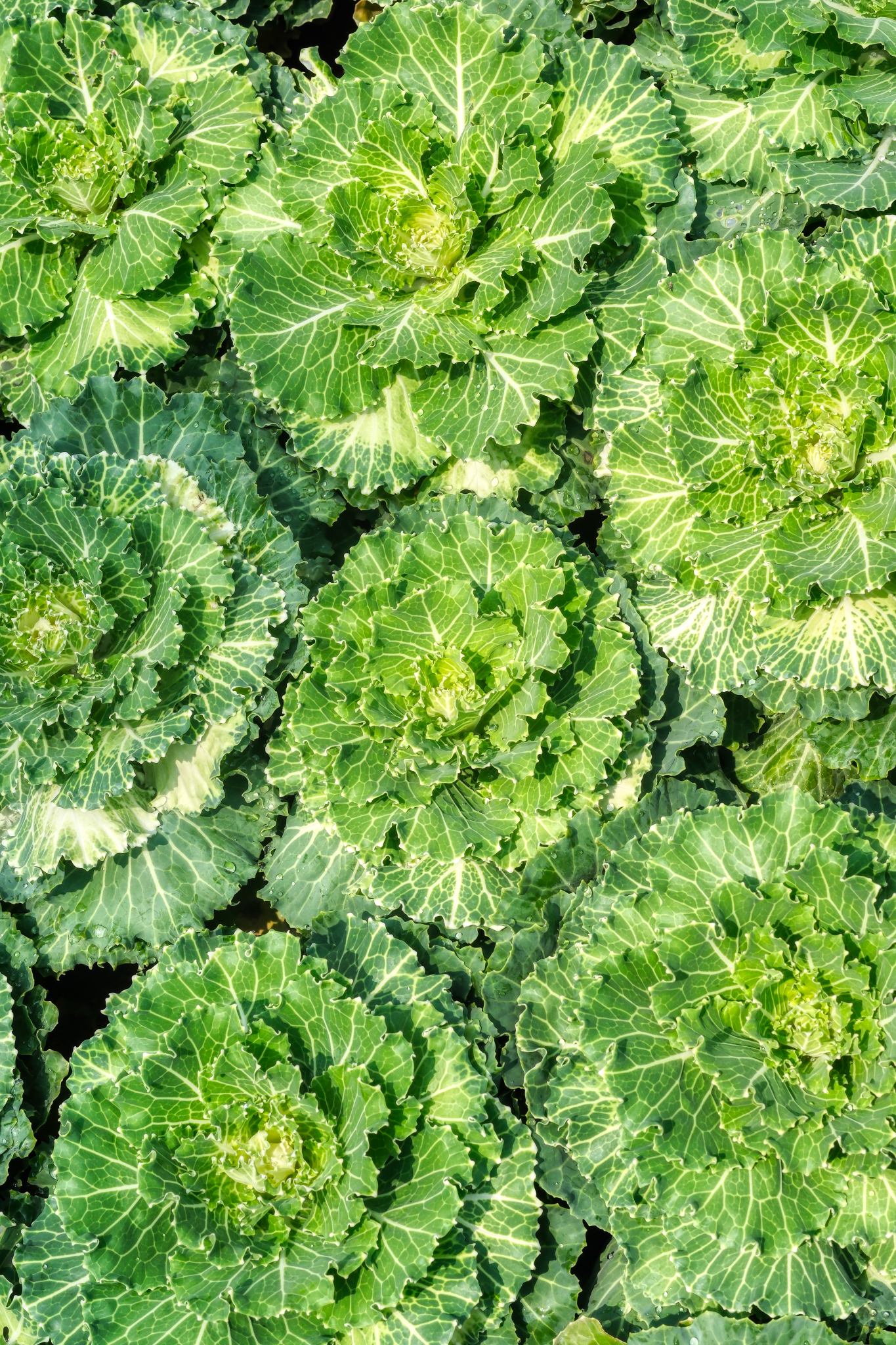 Lovely color and pattern . . .
Lovely color and pattern . . .
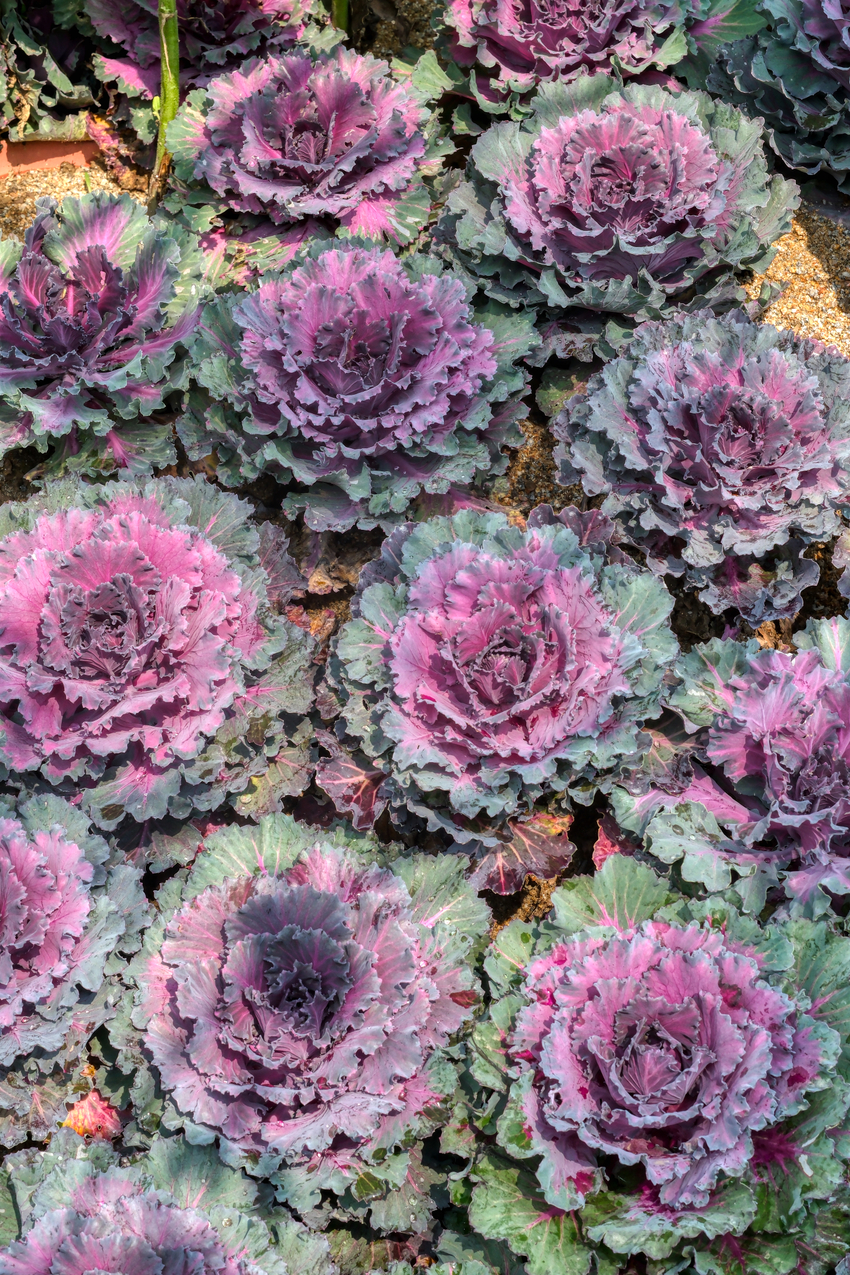 Purple succulent splash!
Purple succulent splash!
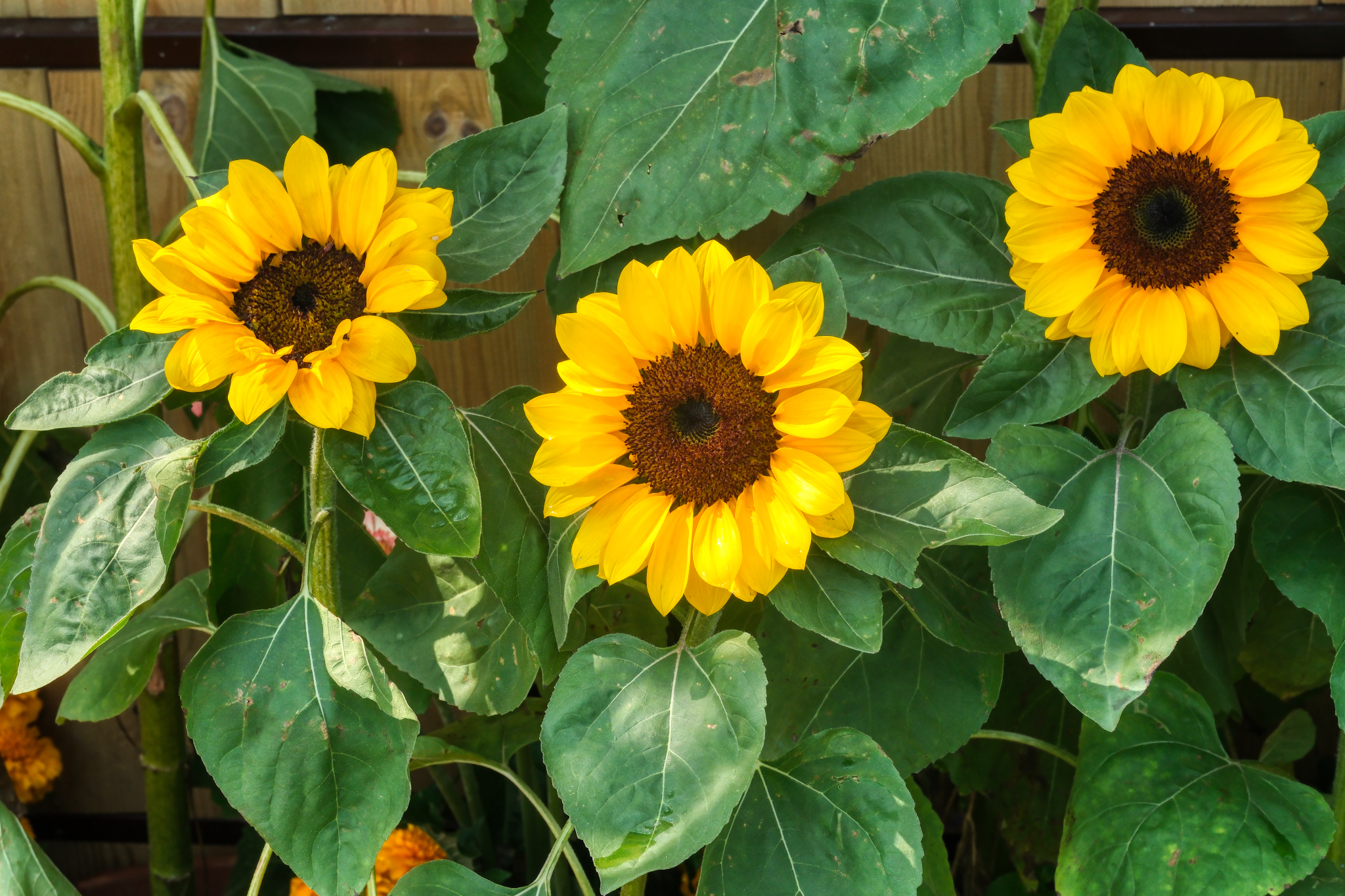 Sunflowers always make me feel happy.
Sunflowers always make me feel happy.
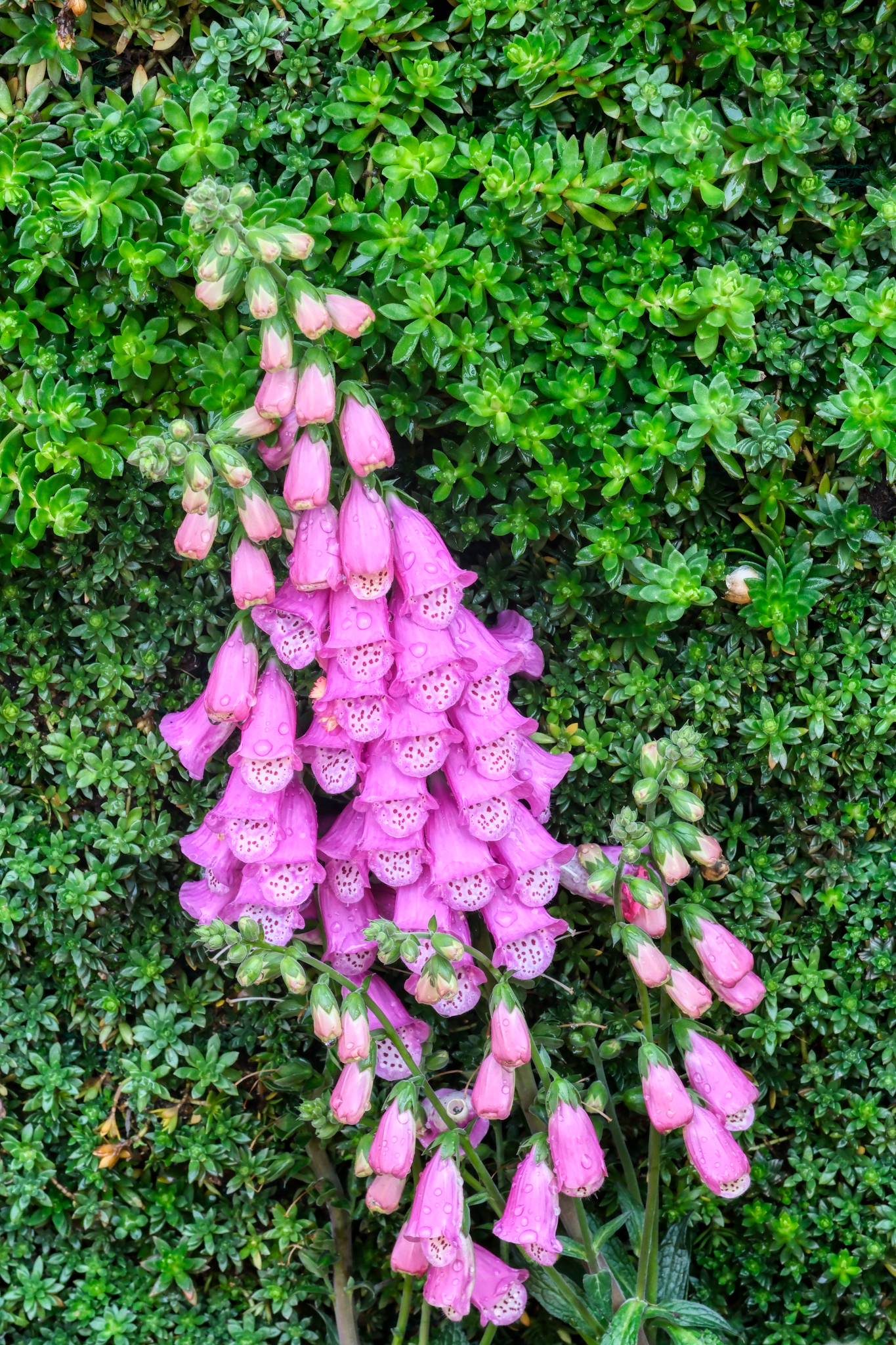 The organizers of this event spent a lot of time placing the flowers in perfect compositions for the many photographers who attended.
The organizers of this event spent a lot of time placing the flowers in perfect compositions for the many photographers who attended.
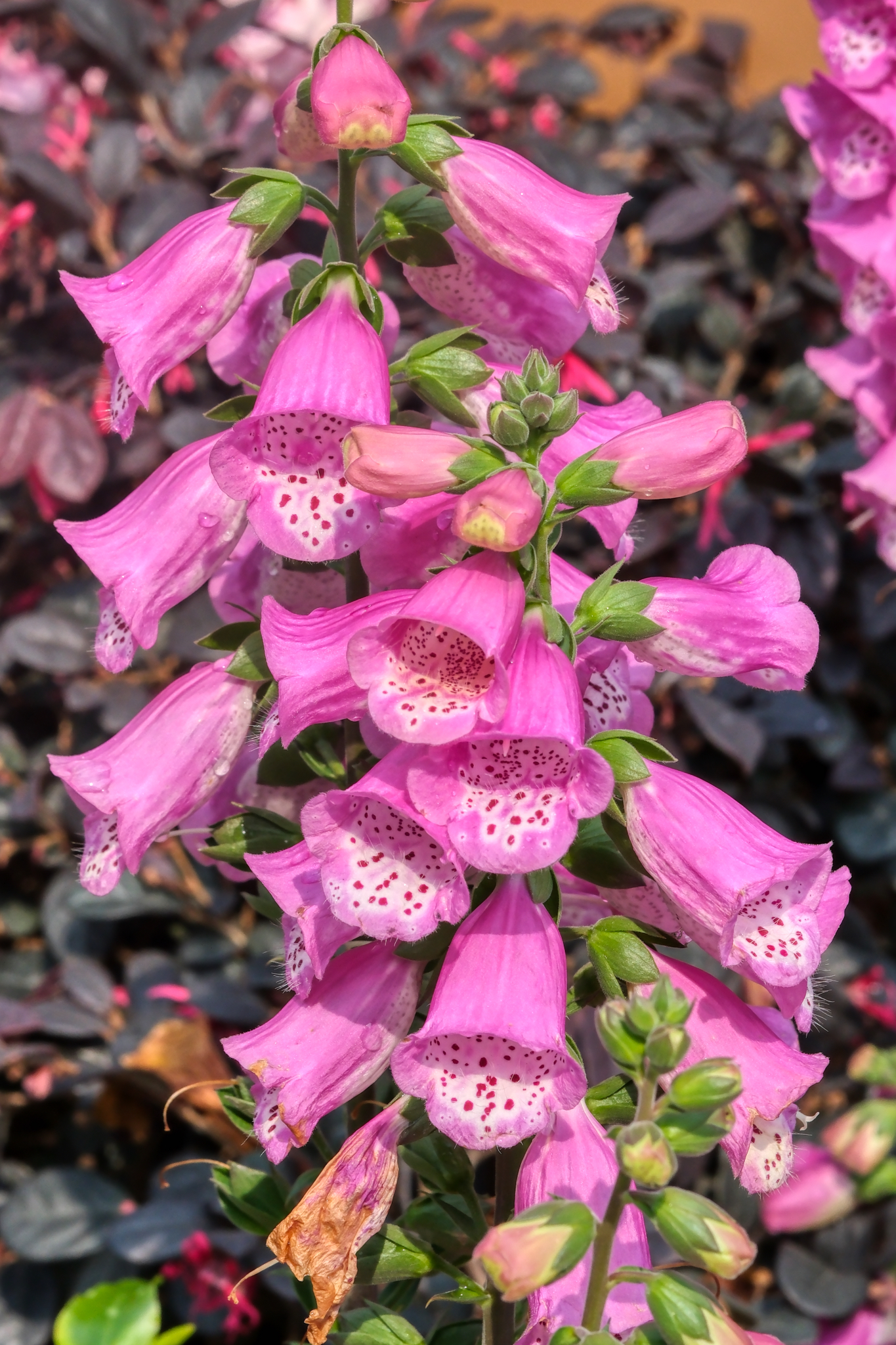 These were my favorite.
These were my favorite.
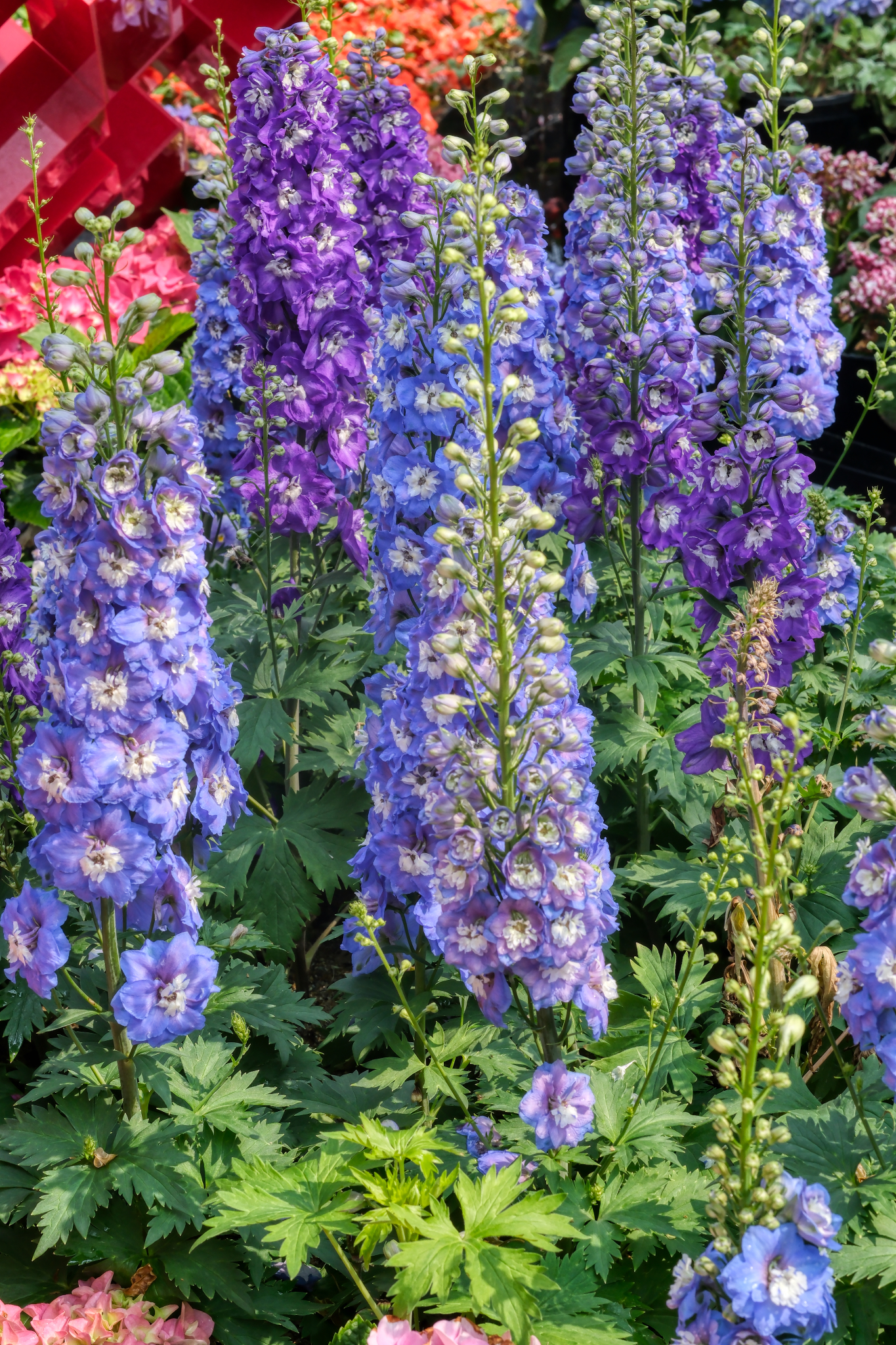 I want these in my garden . . . but it may be too hot here in Bangkok.
I want these in my garden . . . but it may be too hot here in Bangkok.
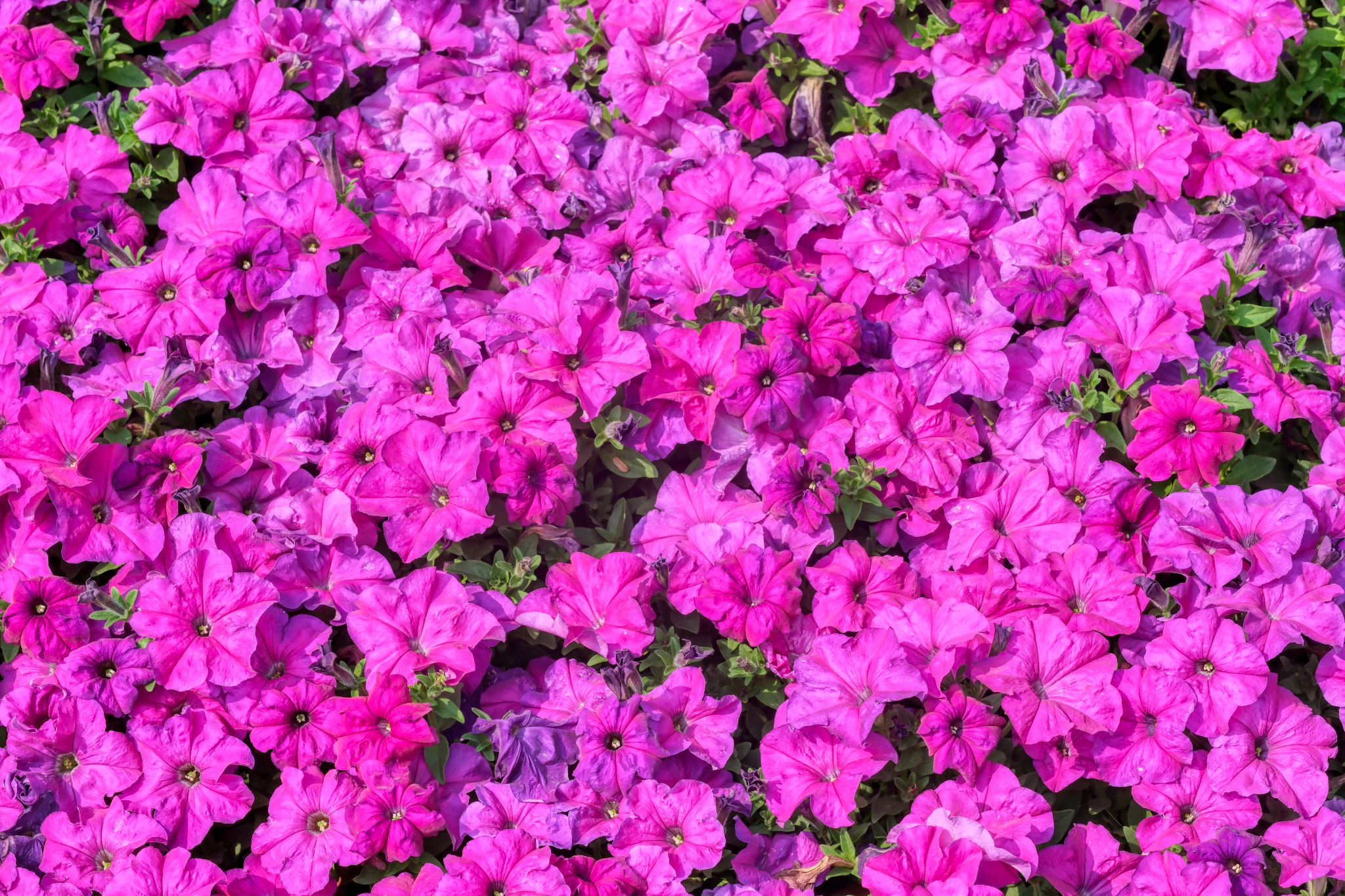 Color, color, color everywhere!
Color, color, color everywhere!
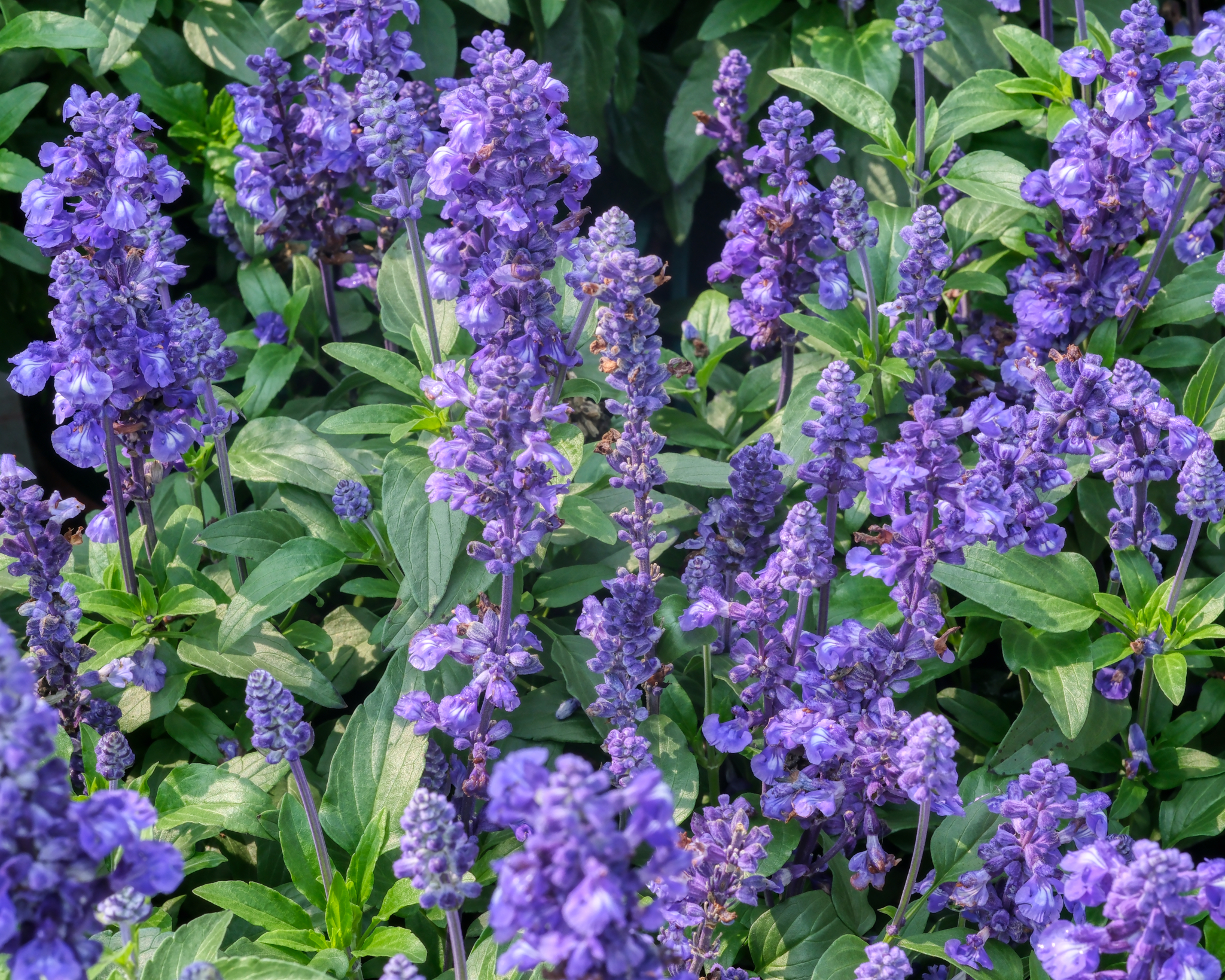 I was very happy with my flower photos from this show.
I was very happy with my flower photos from this show.
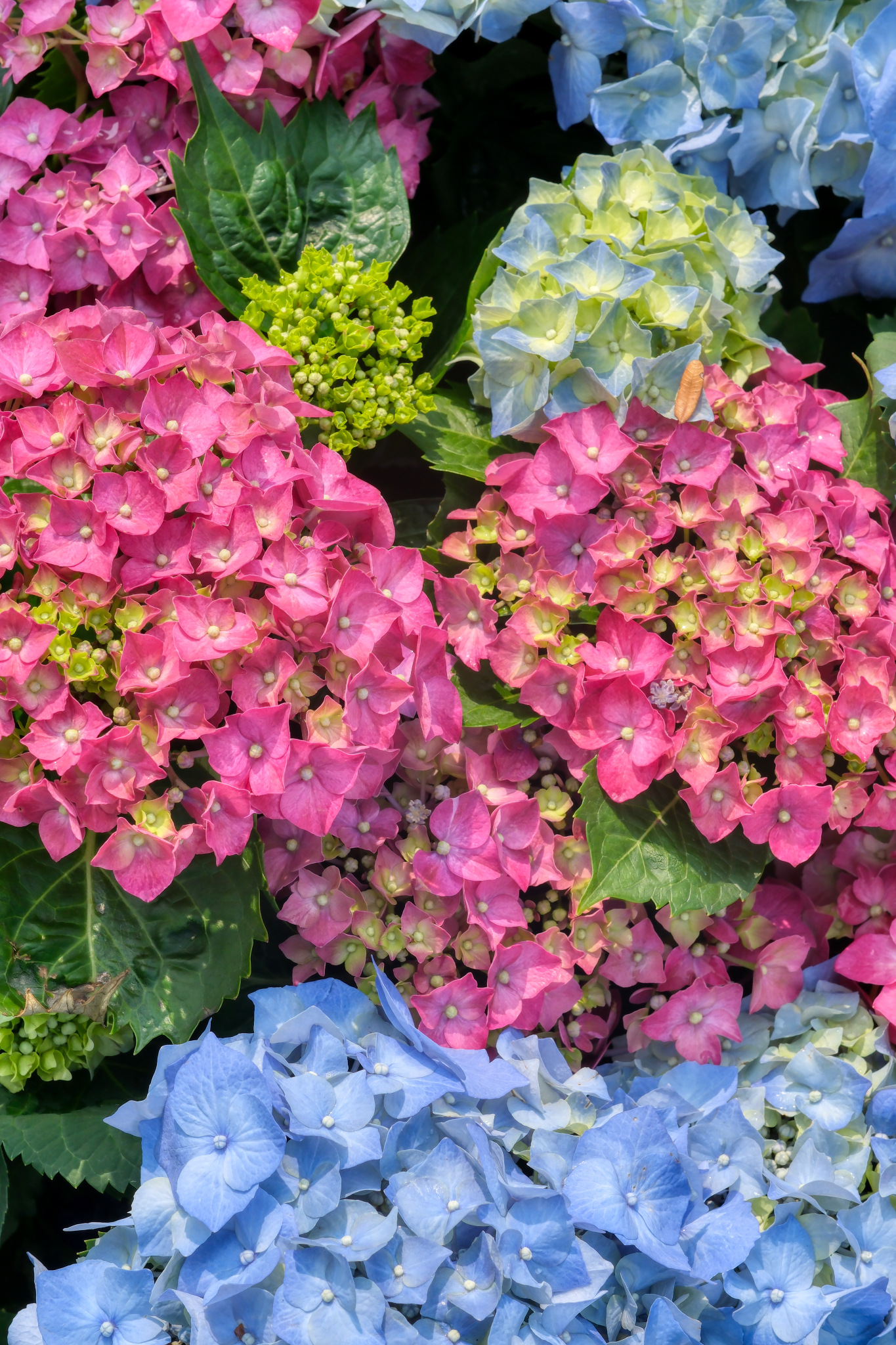 Colorful puffs.
Colorful puffs.
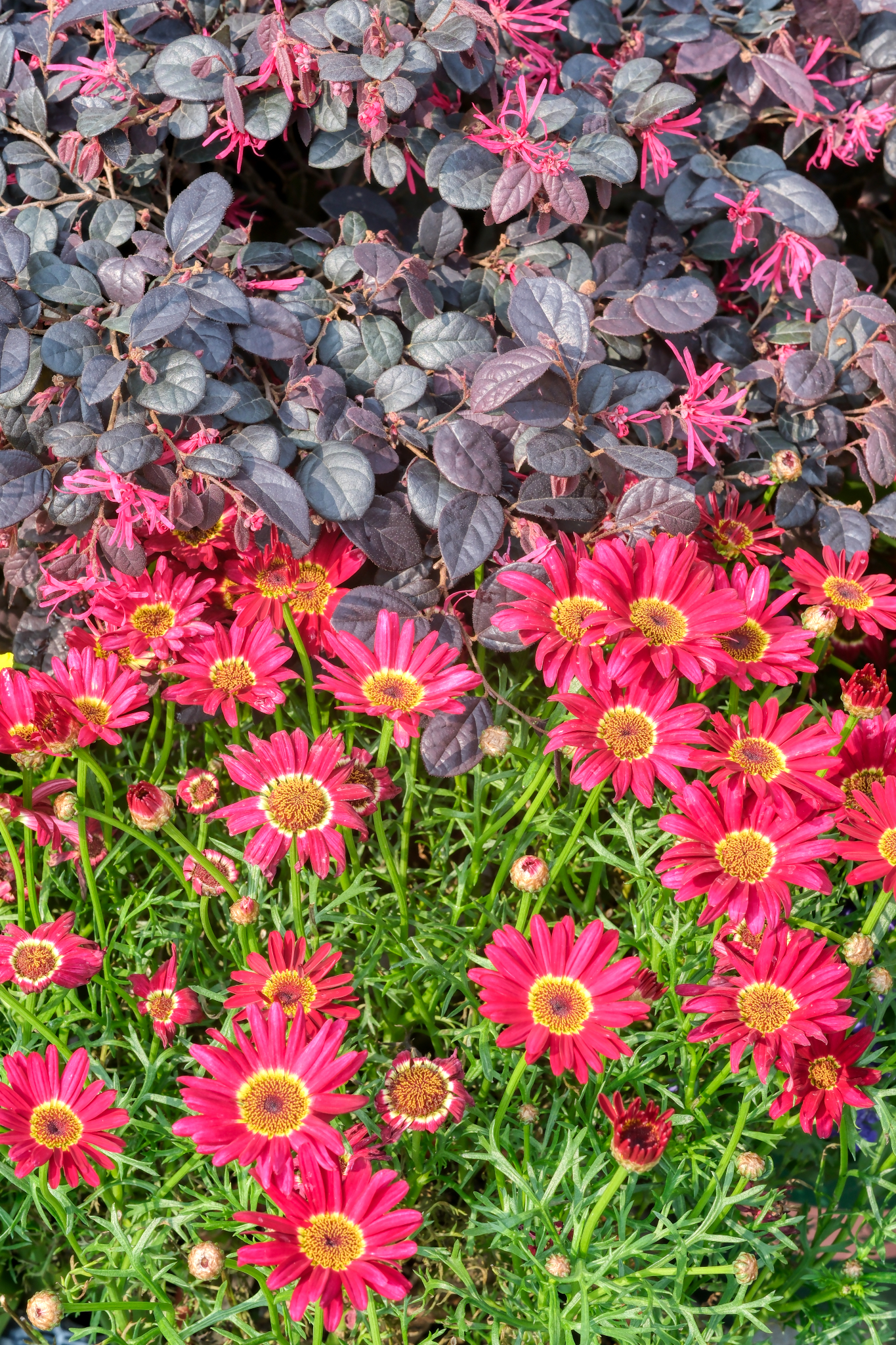 So pretty.
So pretty.
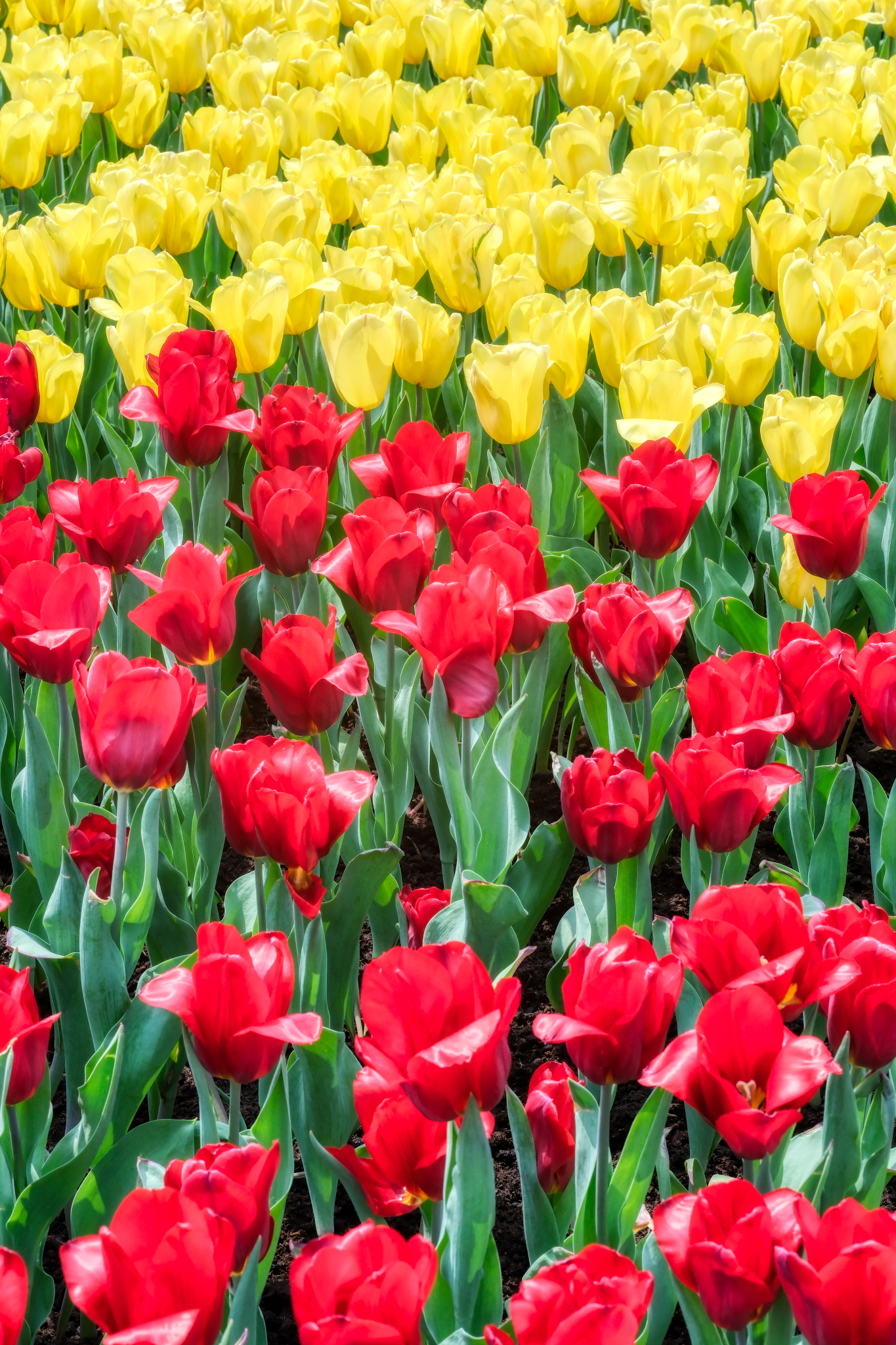 It seemed at every turn we found more tulips!
It seemed at every turn we found more tulips!
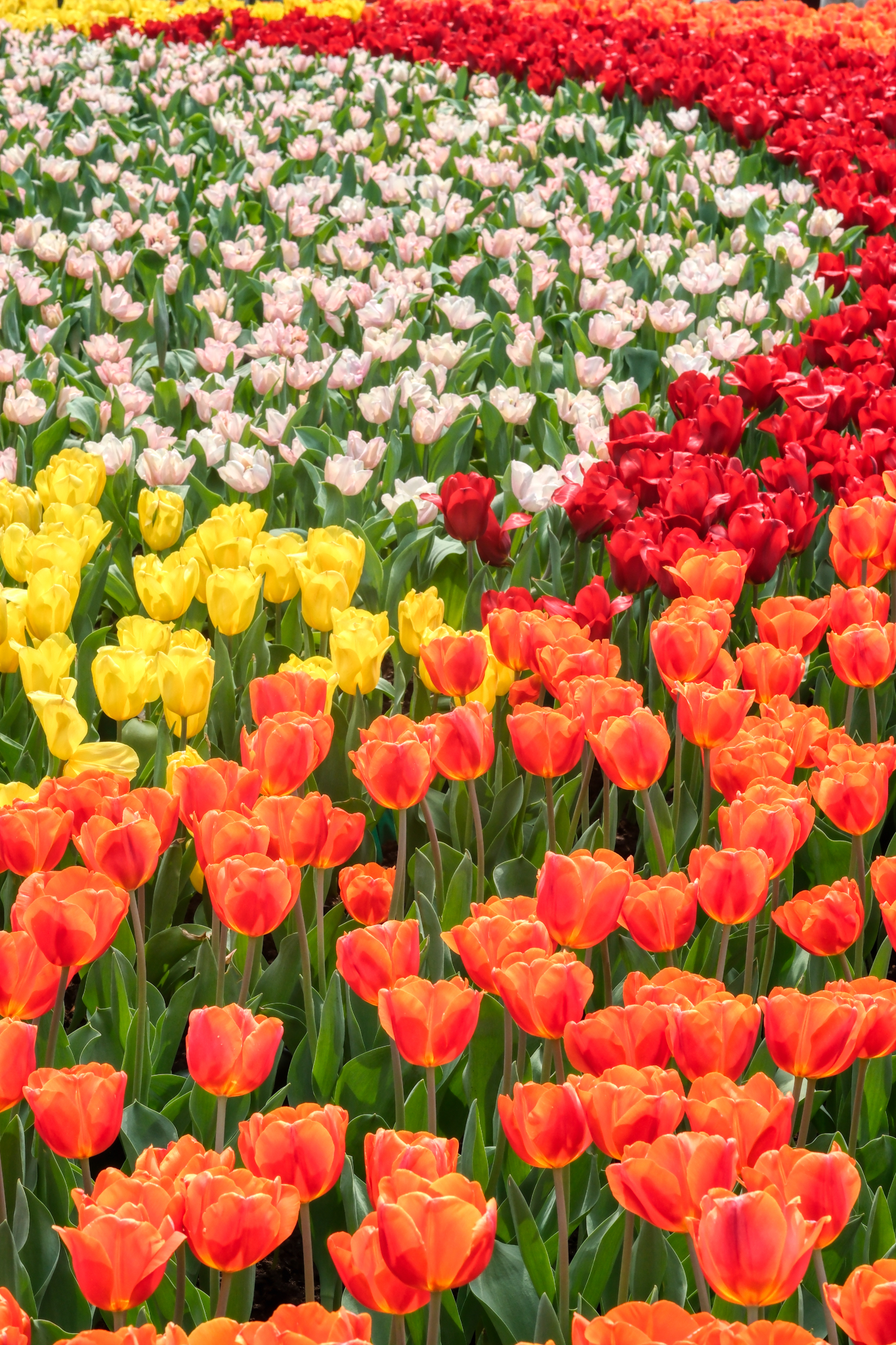 Fields of tulips!
Fields of tulips!
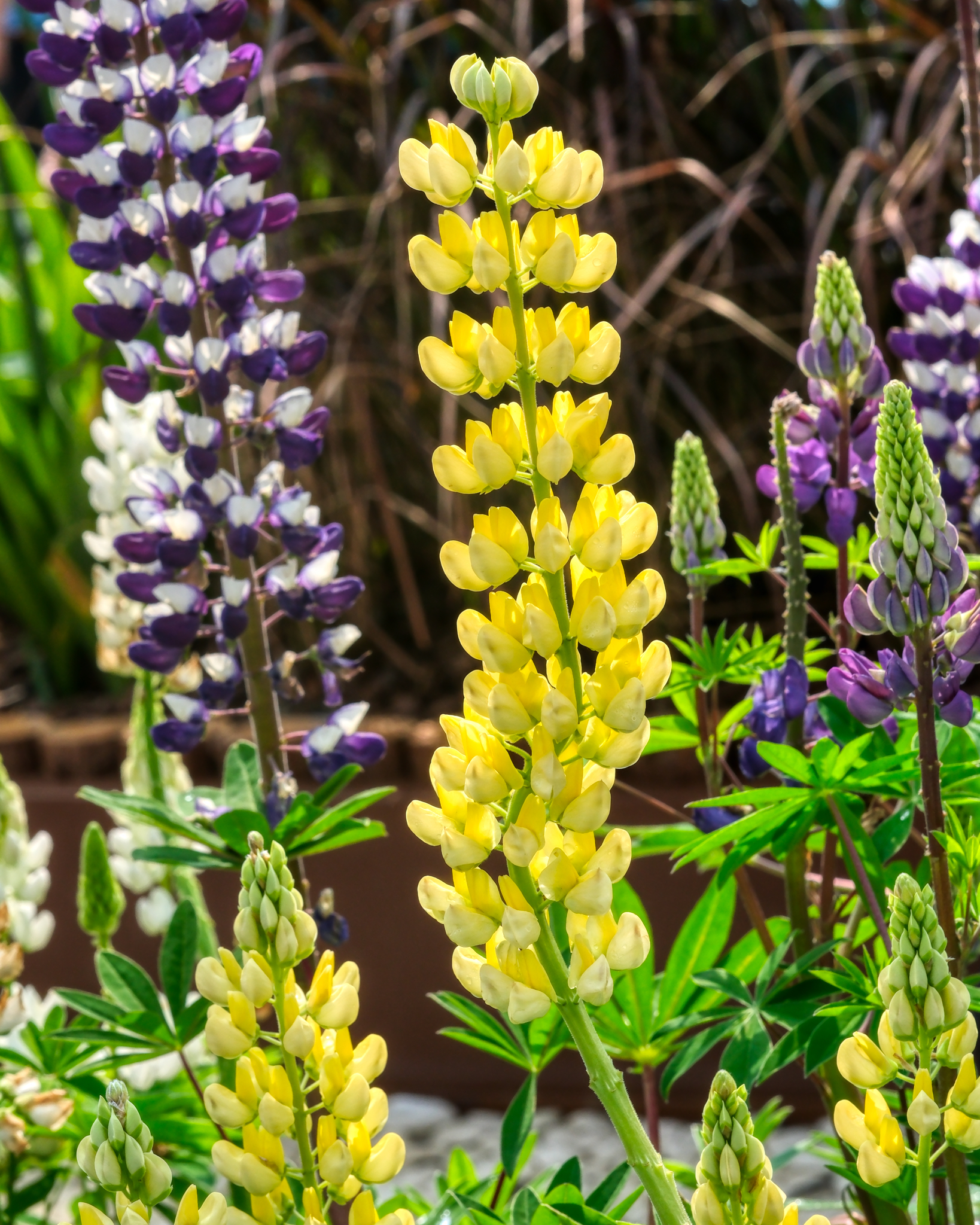 I had a great time at the flower show with my photographer brother in-law . . . .
I had a great time at the flower show with my photographer brother in-law . . . .
______________________________________________
The Rest Of My Hong Kong Visit:
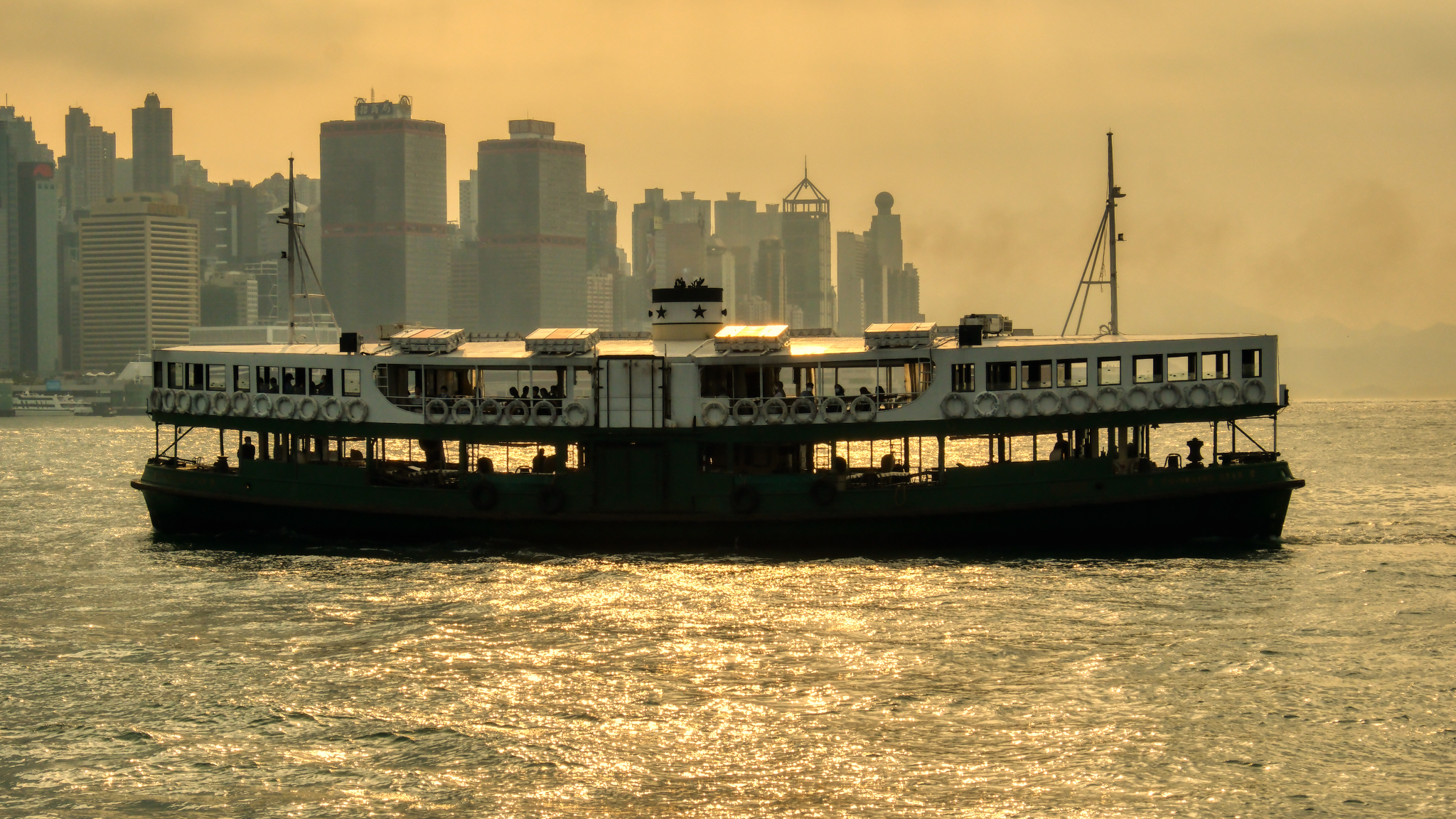 The rest of my Hong Kong stay was equally photogenic . . . Star ferry in sunset light .
The rest of my Hong Kong stay was equally photogenic . . . Star ferry in sunset light .
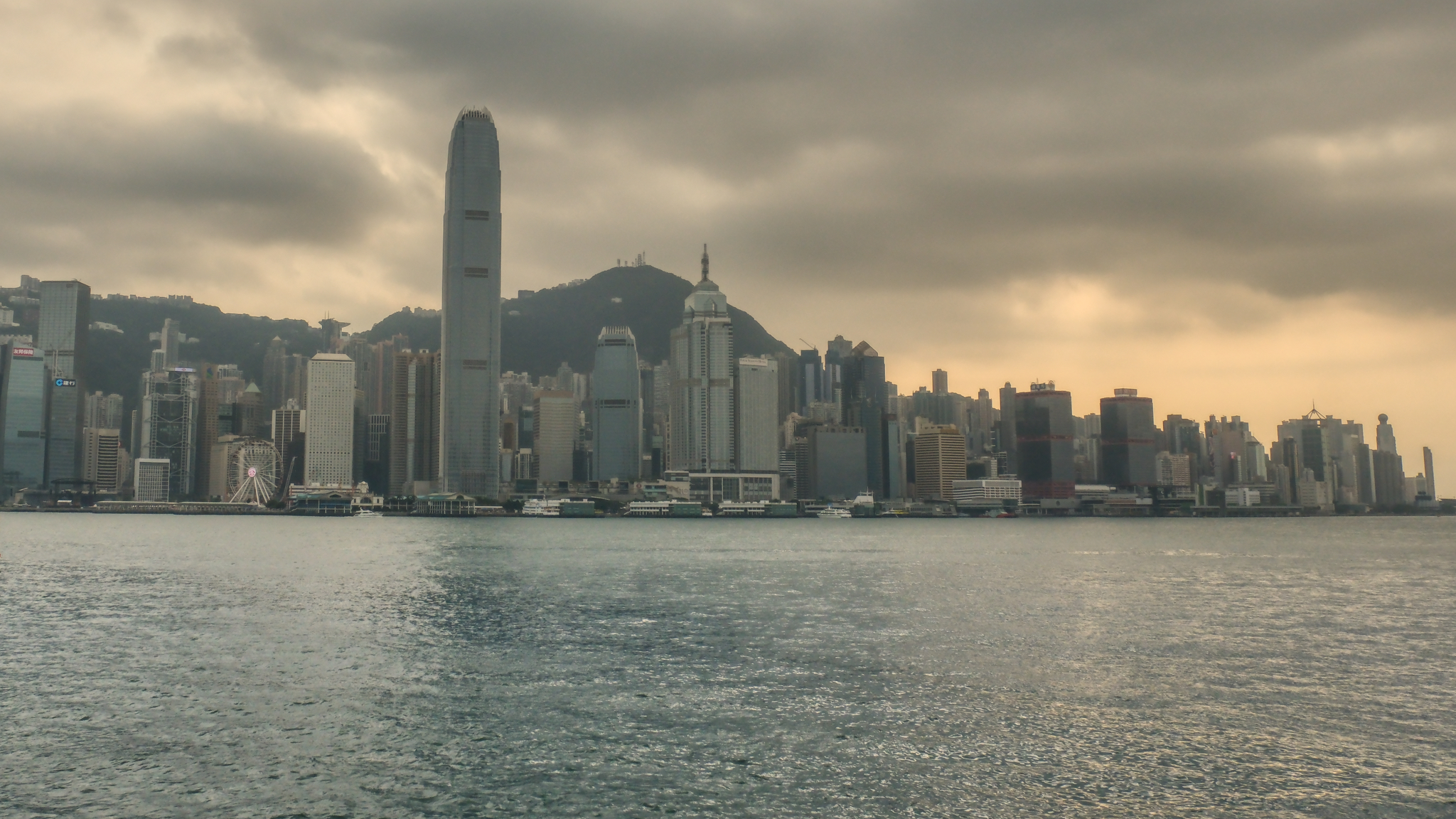 Hong Kong skyline . . .
Hong Kong skyline . . .
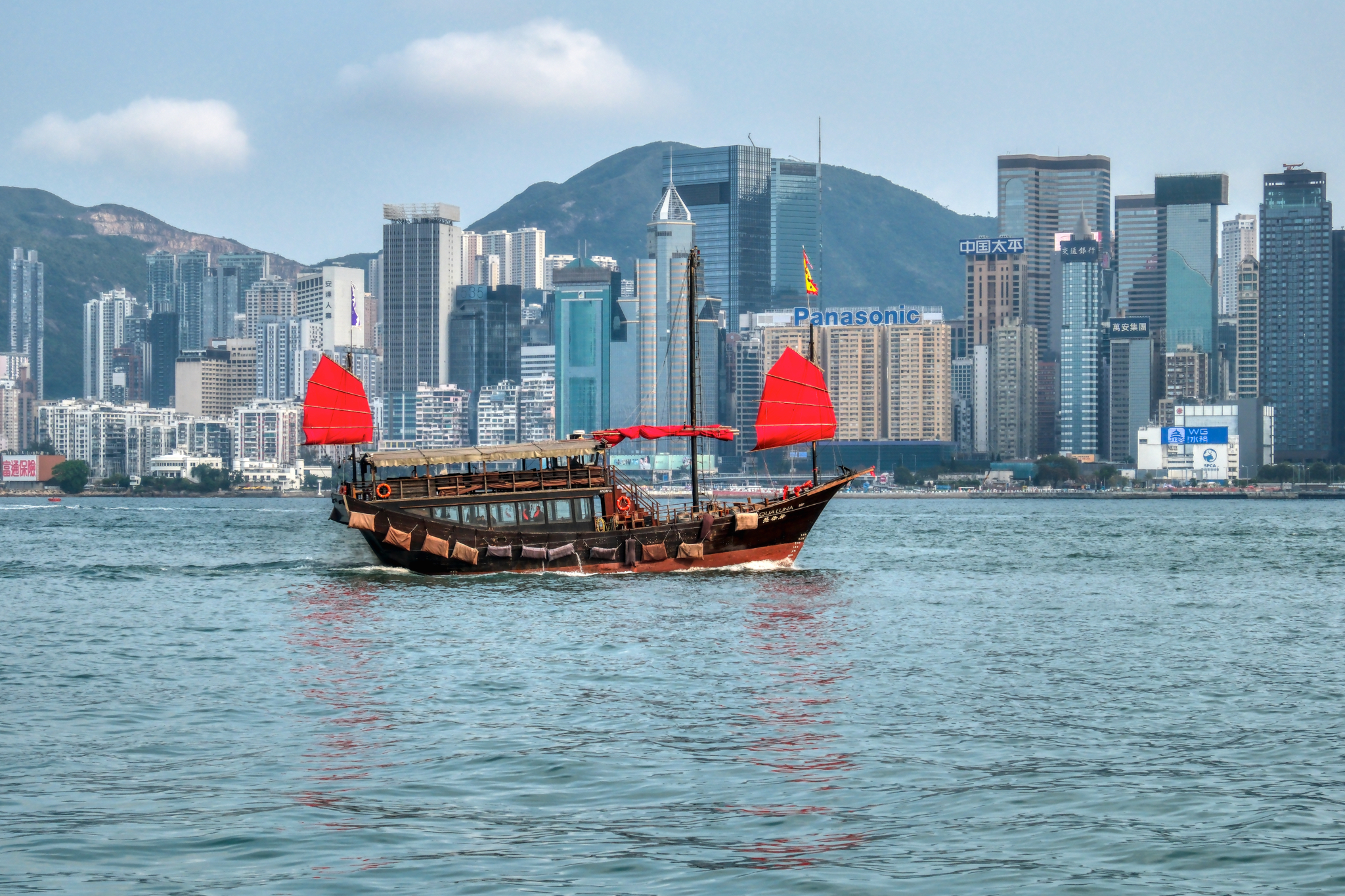 Many interesting kinds of boats in Hong Kong Harbour.
Many interesting kinds of boats in Hong Kong Harbour.
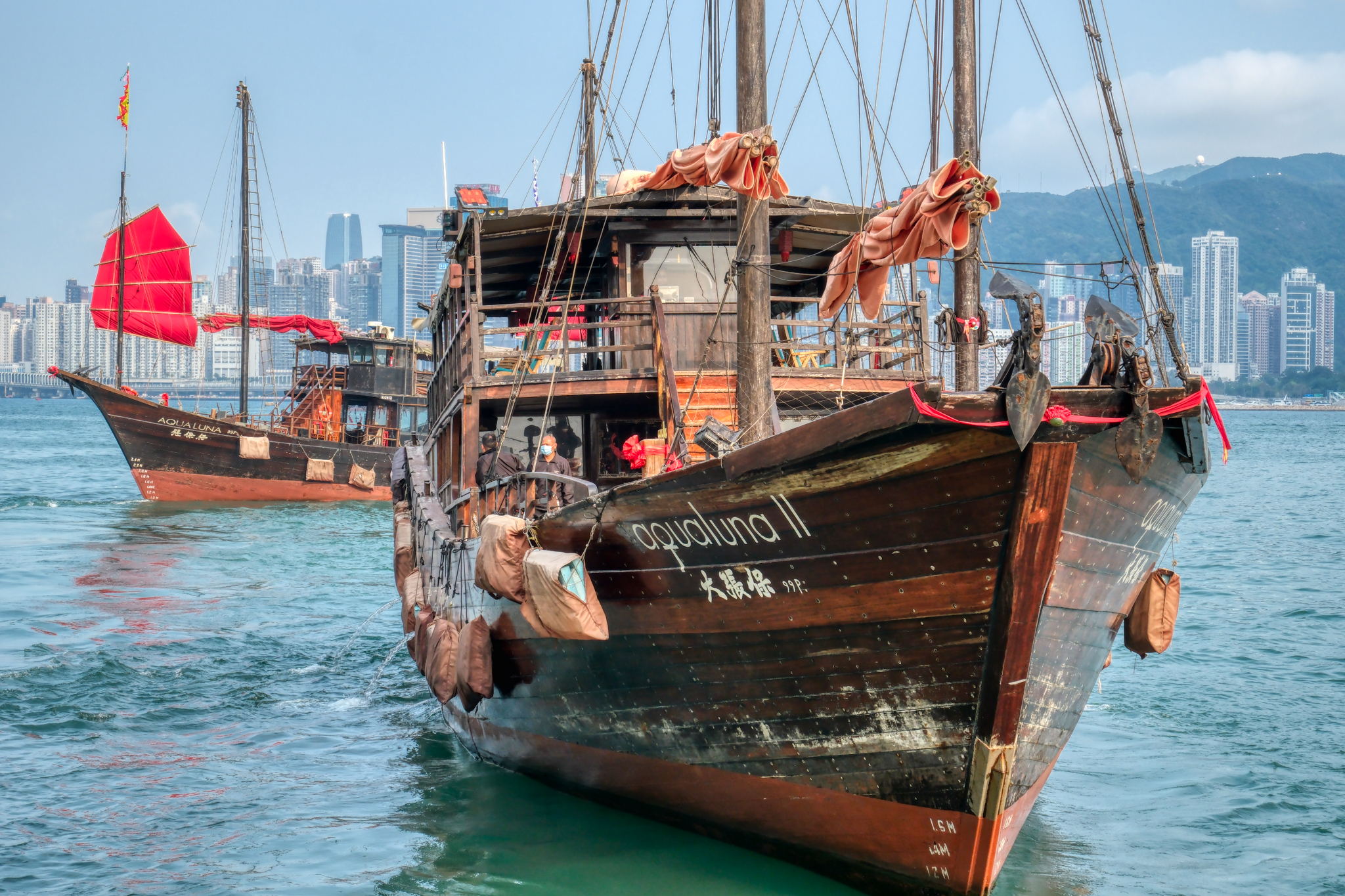 Wooden harbour "party boats" ready to board.
Wooden harbour "party boats" ready to board.
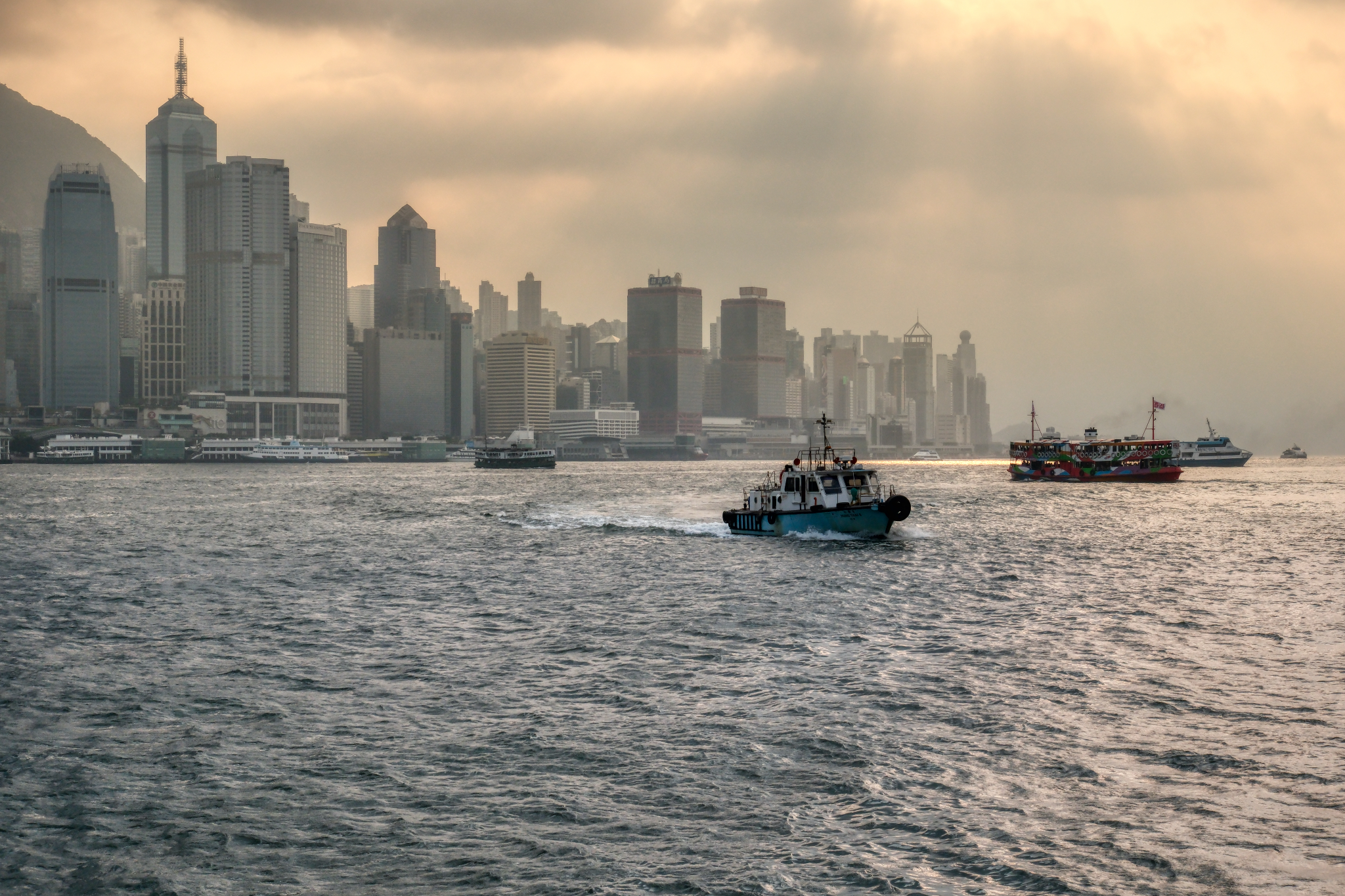 We took a late afternoon bay cruise around the back of Hong Kong Island to Lamma Island, aka, "seafood restaurant island" . . . This is our cruise boat arriving.
We took a late afternoon bay cruise around the back of Hong Kong Island to Lamma Island, aka, "seafood restaurant island" . . . This is our cruise boat arriving.
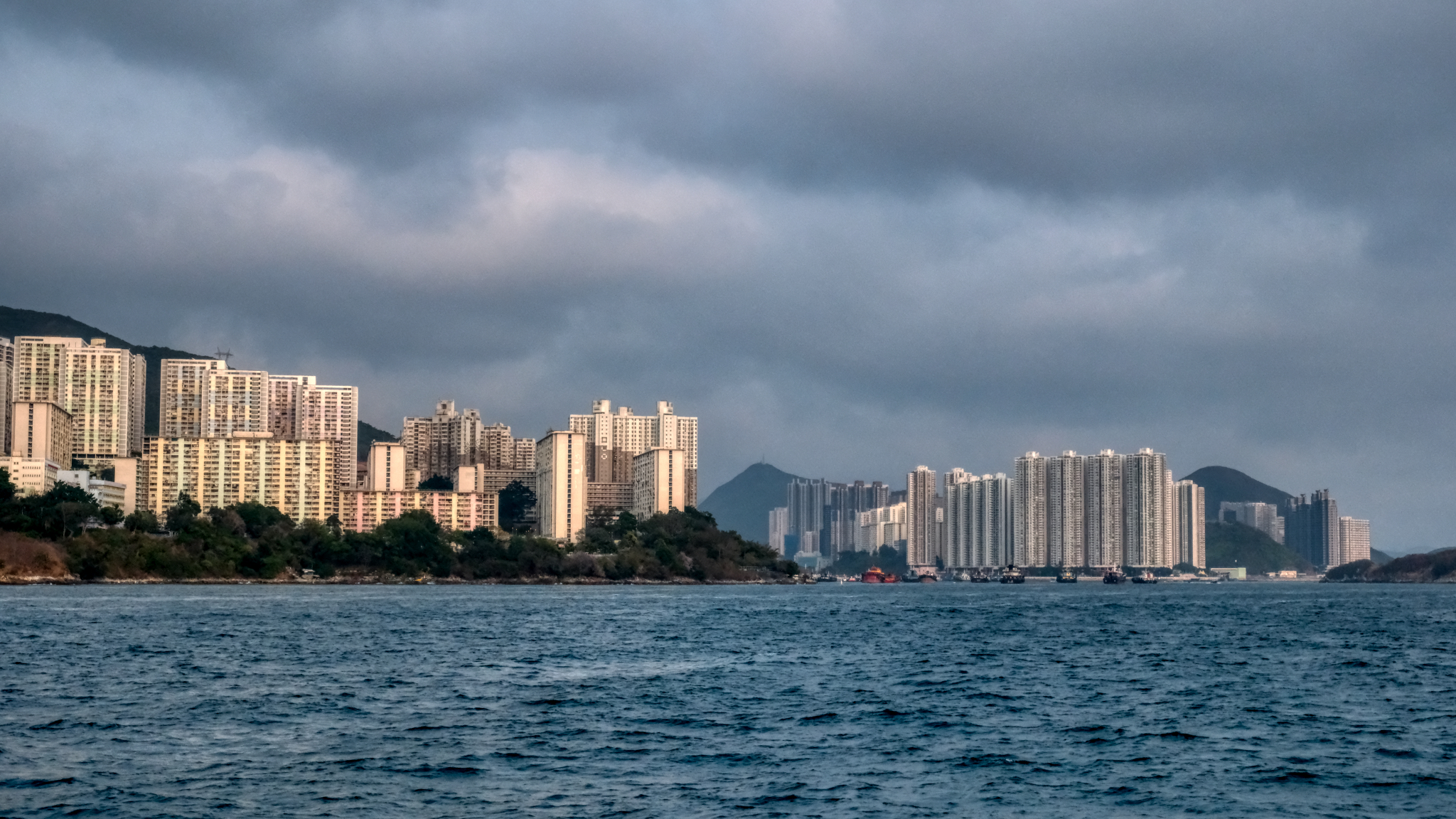 The back side of Hong Kong . . . showing the high density mass housing high-rise estates. I guess it is a good way to house people because it saves the destruction of nature and open spaces.
The back side of Hong Kong . . . showing the high density mass housing high-rise estates. I guess it is a good way to house people because it saves the destruction of nature and open spaces.
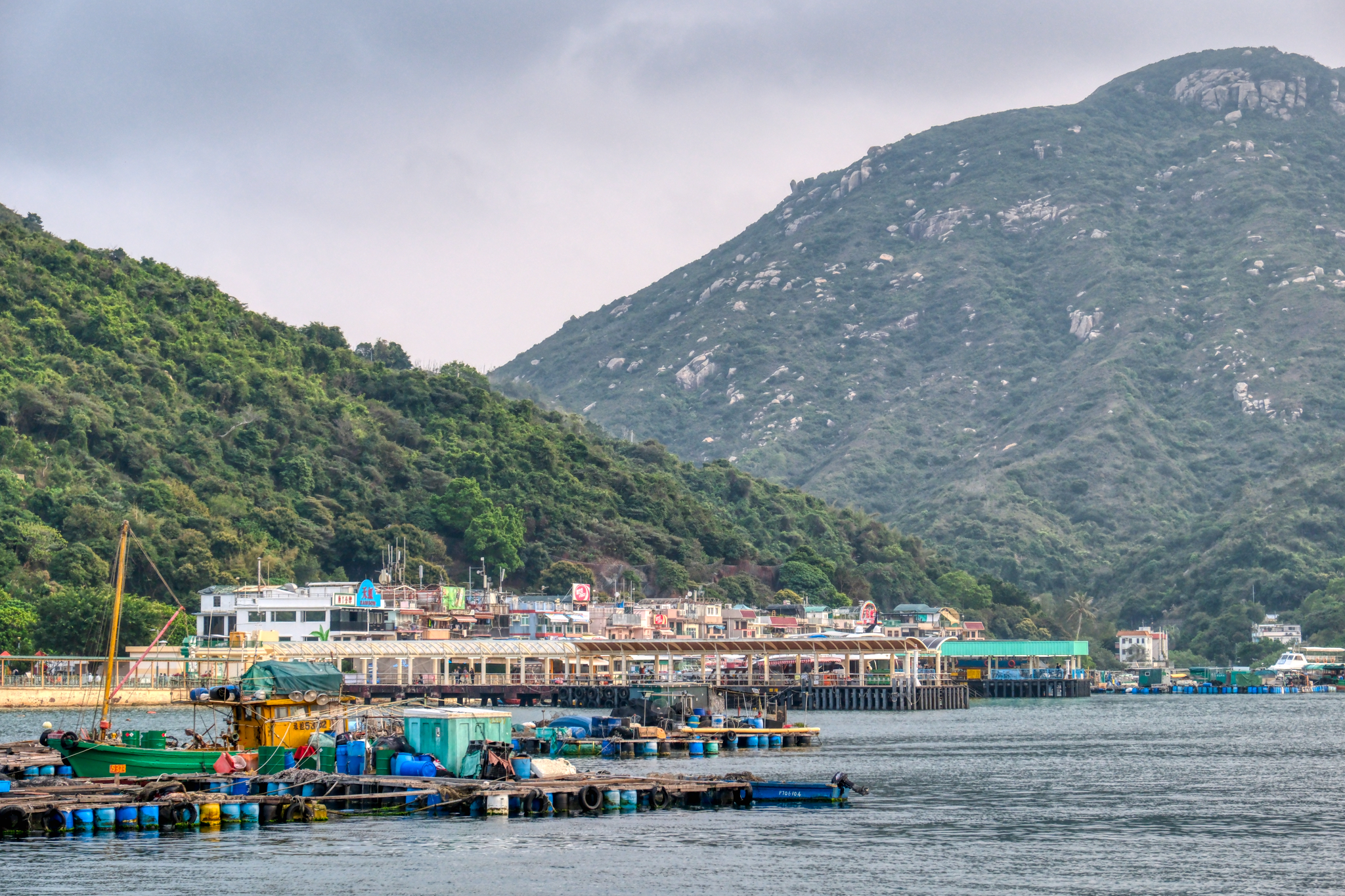 Arriving at the Lamma Island sea food village . . . where there was only sea food restaurant.
Arriving at the Lamma Island sea food village . . . where there was only sea food restaurant.
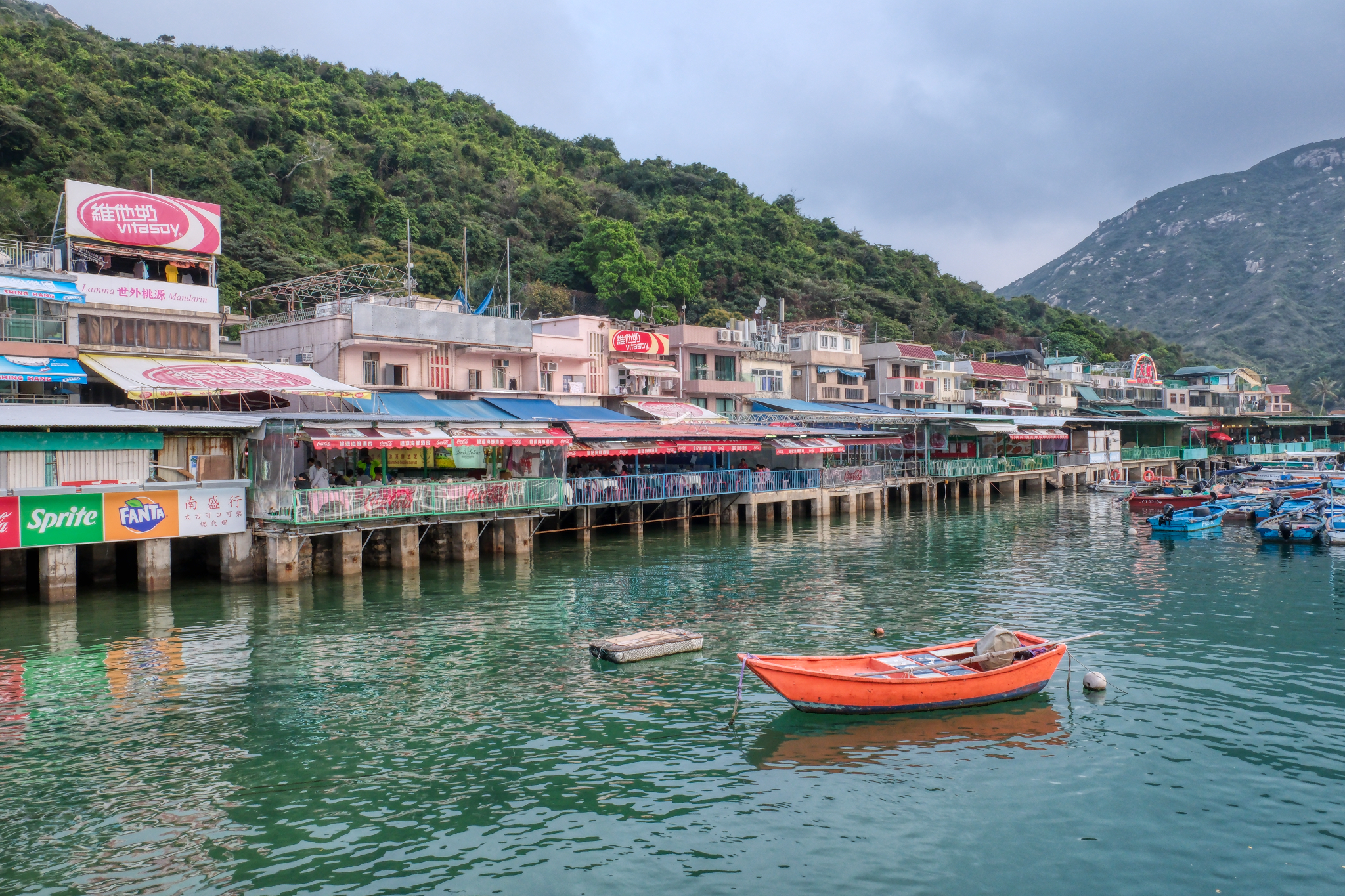 A long stretch of seafood eateries lining the Lamma Island harbour.
A long stretch of seafood eateries lining the Lamma Island harbour.
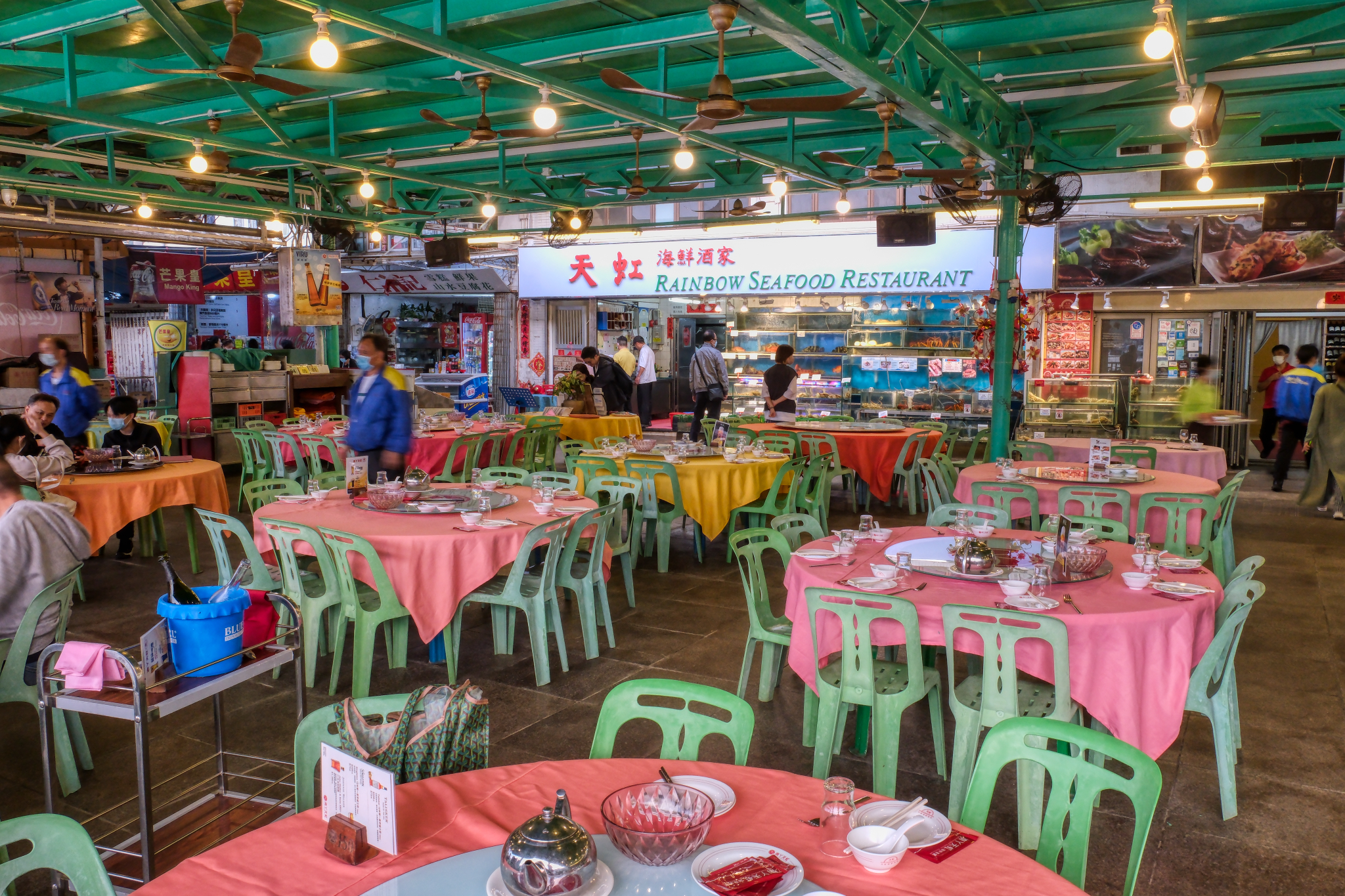 We found our table by the bay and set off to secure seafood favorites.
We found our table by the bay and set off to secure seafood favorites.
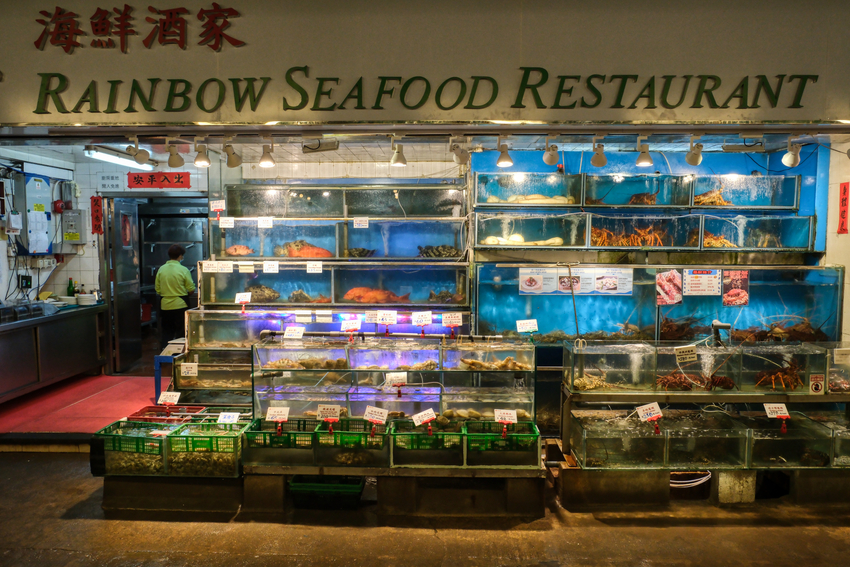 Our live seafood choices!!!
Our live seafood choices!!!
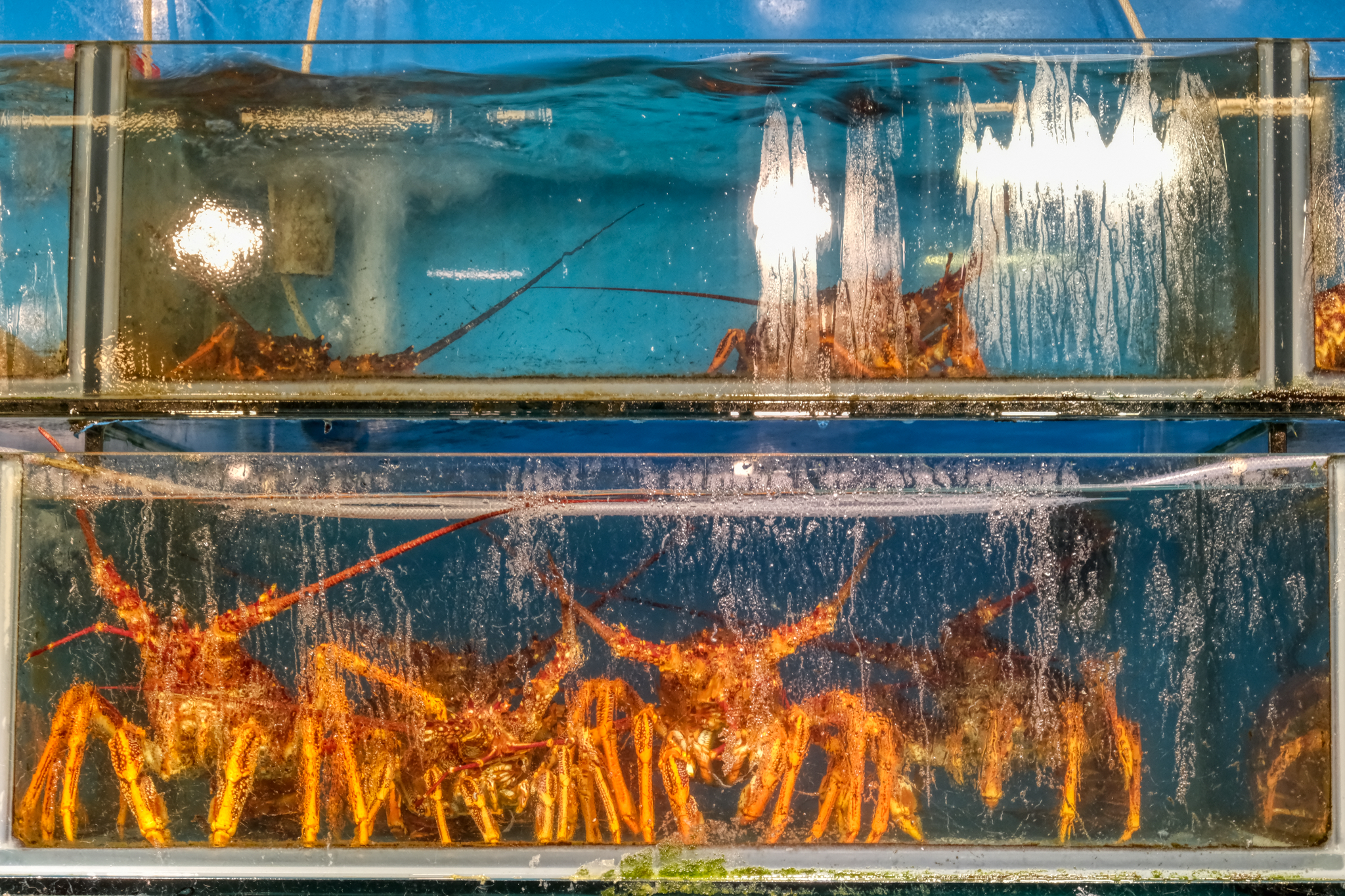 These looked good!
These looked good!
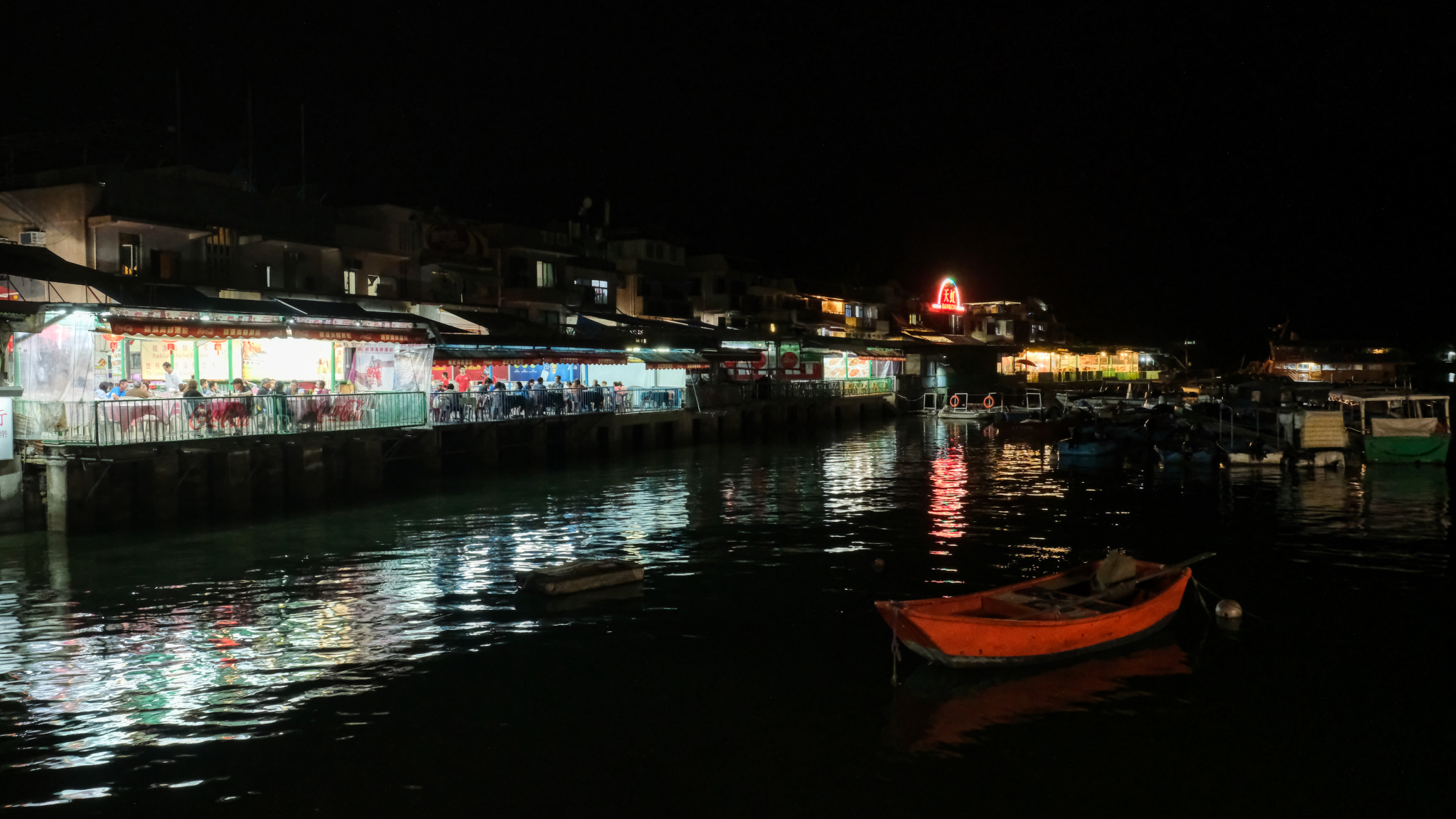 Waiting on the dock for our boat to take us back to Kowloon . . . our stomachs full from the delicious meal!
Waiting on the dock for our boat to take us back to Kowloon . . . our stomachs full from the delicious meal!
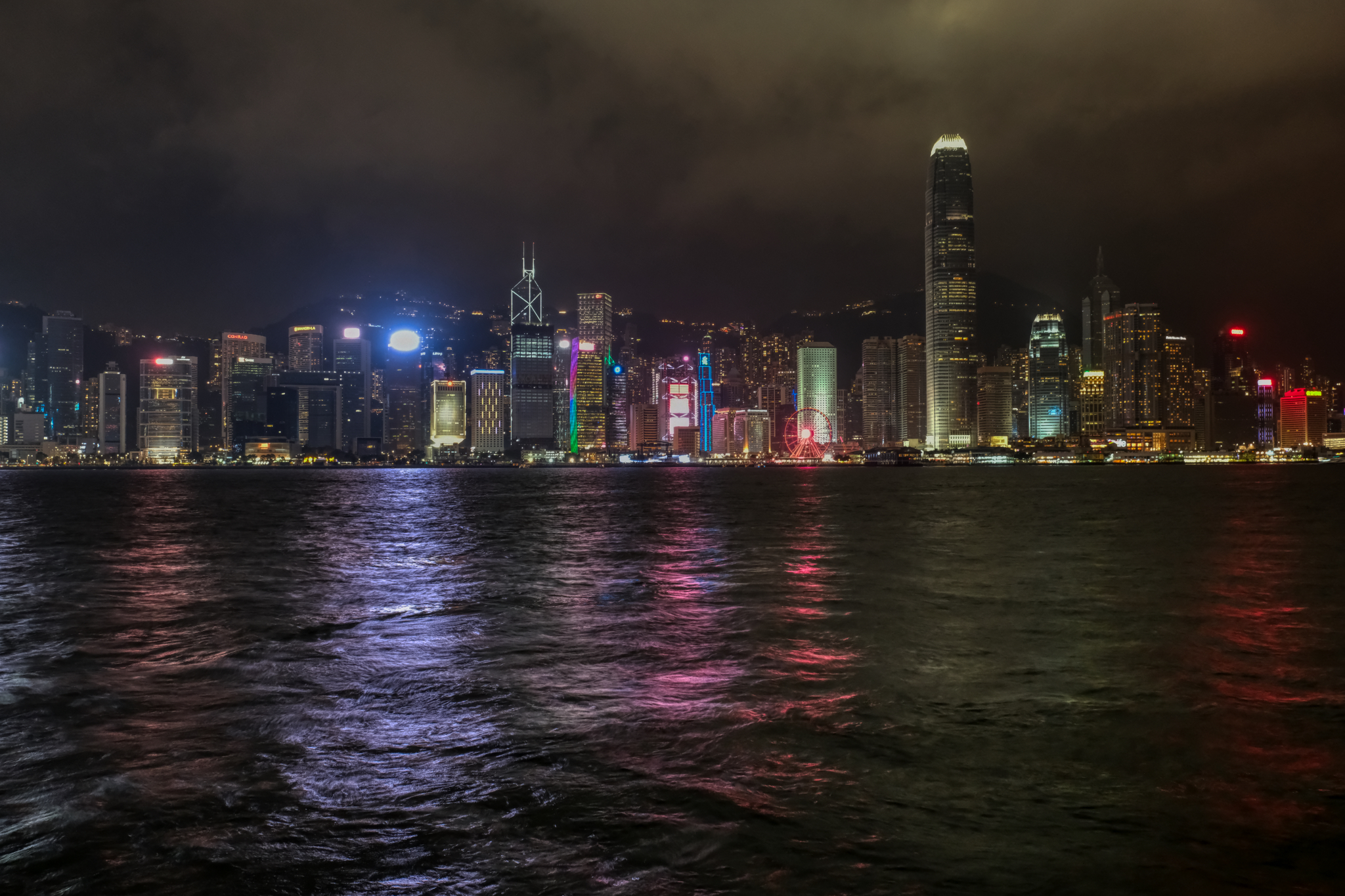 Our arrival by boat back into Hong Kong harbour at night was truly spectacular!
Our arrival by boat back into Hong Kong harbour at night was truly spectacular!
____________________________________
Chi Lin Nunnery and Garden Park
 It's nice to have in-laws living in Hong Kong . . . they know the cool places to go, beyond the tourist spots, for good photography. These gardens were magnificent! And right in the city.
It's nice to have in-laws living in Hong Kong . . . they know the cool places to go, beyond the tourist spots, for good photography. These gardens were magnificent! And right in the city.
 An astonishingly beautiful place surrounded by the city.
An astonishingly beautiful place surrounded by the city.
 Stunning ancient Chinese styled garden pagoda.
Stunning ancient Chinese styled garden pagoda.
 Classic bridge to the Other Side.
Classic bridge to the Other Side.
 Old water-powered mill in the park.
Old water-powered mill in the park.
 The inner temple at the nunnery.
The inner temple at the nunnery.
 They did not allow photography inside the temple . . . but it was fantastic.
They did not allow photography inside the temple . . . but it was fantastic.
 Stepping out from the inner temple we were greeted with this view of Hong Kong Kowloon side.
Stepping out from the inner temple we were greeted with this view of Hong Kong Kowloon side.
 When I got home I couldn't resist making a highly altered HDR "Art" photo from the nunnery.
When I got home I couldn't resist making a highly altered HDR "Art" photo from the nunnery.
 Dr. Jeff Harper
Dr. Jeff Harper
We went back to Hong Kong in February of 2024 to visit family . . . for the 10th time.
 Even though I have been to Hong Kong many, many times, I still find interesting things to photograph . . . like the back of this neighborhood school.
Even though I have been to Hong Kong many, many times, I still find interesting things to photograph . . . like the back of this neighborhood school.
 The city street in front of our hotel in Kowloon.
The city street in front of our hotel in Kowloon.
 The famous bamboo scaffolding of Hong Kong. Amazing.
The famous bamboo scaffolding of Hong Kong. Amazing.
 Where the Hong Kong apartment dwellers go to tend their spiritual needs.
Where the Hong Kong apartment dwellers go to tend their spiritual needs.
 I took a little artistic liberty with this photo . . . but it is an iconic image of Hong Kong.
I took a little artistic liberty with this photo . . . but it is an iconic image of Hong Kong.
 Dr. Jeff Harper | Comments Off |
Dr. Jeff Harper | Comments Off | A Petchaburi, Thailand 'Photo Ramble'
 Wednesday, March 17, 2021 at 4:03PM
Wednesday, March 17, 2021 at 4:03PM A 'photo ramble' blog entry in four parts: The Old Town of Petchaburi, The Buddhist Temples (Wats) of Petchaburi Town, Two Old Fishing Ports in Petchaburi Province, and Salt Pan Workers in Petchaburi Province.
PART 1: THE OLD TOWN
 Petchaburi is a provincial capital located between Bangkok and the beach towns of Cha Am and Hua Hin. It is a very small city that I pass by whenever I go to Hua Hin for a beach getaway from the pace of urban Bangkok . . . but I never stop to see what is there . . . until my old friend, John Stiles, and I decided to take a "photo ramble" there last week. [The 11th century Wat Mahathat Worawihan in the background.]
Petchaburi is a provincial capital located between Bangkok and the beach towns of Cha Am and Hua Hin. It is a very small city that I pass by whenever I go to Hua Hin for a beach getaway from the pace of urban Bangkok . . . but I never stop to see what is there . . . until my old friend, John Stiles, and I decided to take a "photo ramble" there last week. [The 11th century Wat Mahathat Worawihan in the background.]
 Petchaburi is only two hours away on good divided highway from home . . . and seemingly in a different decade.
Petchaburi is only two hours away on good divided highway from home . . . and seemingly in a different decade.
 We arrived and parked, as we planned to spend the day on foot. At first look, Petchaburi looks like a lot of old Thai market towns. An old, somewhat worn out downtown area with lots of 'street life' - civic culture. In Thai, Phetchaburi means "city of diamonds".
We arrived and parked, as we planned to spend the day on foot. At first look, Petchaburi looks like a lot of old Thai market towns. An old, somewhat worn out downtown area with lots of 'street life' - civic culture. In Thai, Phetchaburi means "city of diamonds".
 There are some interesting old buildings with a lot of character . . .
There are some interesting old buildings with a lot of character . . .
 . . . and ample material for one of my favorite photographic subjects: old door portraits.
. . . and ample material for one of my favorite photographic subjects: old door portraits.
 A magnificent old door with its life story written all over it.
A magnificent old door with its life story written all over it.
 Old Thai market towns have a special dilapidated charm I really enjoy.
Old Thai market towns have a special dilapidated charm I really enjoy.
 A corner coffee shop. We stopped here for iced coffee with milk. Very good.
A corner coffee shop. We stopped here for iced coffee with milk. Very good.
 The Petchaburi clothing shops spill right out onto the sidewalks.
The Petchaburi clothing shops spill right out onto the sidewalks.
 Buddhist votive offerings shops near the main city center Wat (temple).
Buddhist votive offerings shops near the main city center Wat (temple).
 These old wooden shop houses are slowly disappearing in Thailand's larger towns and cities.
These old wooden shop houses are slowly disappearing in Thailand's larger towns and cities.
 Our casual stroll brought us into an area of old alleys and a wet market.
Our casual stroll brought us into an area of old alleys and a wet market.
 We were literally stopped in our tracks when we rounded a corner into this narrow alley . . . and found a street full of art. Fantastic!
We were literally stopped in our tracks when we rounded a corner into this narrow alley . . . and found a street full of art. Fantastic!
 This was such a whimsical painting, made more so by the actual, real door knob that had been mounted in the wall!
This was such a whimsical painting, made more so by the actual, real door knob that had been mounted in the wall!
 The wall art was wonderfully integrated into the structures of the alley.
The wall art was wonderfully integrated into the structures of the alley.
 Dragon art . . .
Dragon art . . .
 A drayman starting his rounds in front of a fish mural. Wonderful!
A drayman starting his rounds in front of a fish mural. Wonderful!
 There was a 'missing building' in the art alley . . . no problem: paint the revered former King of Thailand on the exposed end . . .
There was a 'missing building' in the art alley . . . no problem: paint the revered former King of Thailand on the exposed end . . .
 There seemed to be a "pet" theme across much of the alley art work.
There seemed to be a "pet" theme across much of the alley art work.
 Scrumptious and stylish . . .
Scrumptious and stylish . . .
 A wall of sweet kitties.
A wall of sweet kitties.
 None of this Petchaburi alley art was signed, but we guessed that these two lovely people were the artists.
None of this Petchaburi alley art was signed, but we guessed that these two lovely people were the artists.
 Refreshed with Art, we walked on through the alleys of old Petchaburi town.
Refreshed with Art, we walked on through the alleys of old Petchaburi town.
 There were many very old shops in Peetchaburi . . . from a time before big box franchises and bar code stock control.
There were many very old shops in Peetchaburi . . . from a time before big box franchises and bar code stock control.
 I had the feeling that this woman has been sitting in this auto parts shop for a very, very long time.
I had the feeling that this woman has been sitting in this auto parts shop for a very, very long time.
 A city fabric shop . . . with cushions and plastic door mats.
A city fabric shop . . . with cushions and plastic door mats.
 My friend John among the basketry taking candid street photos.
My friend John among the basketry taking candid street photos.
 Our wanderings brought us to the Petchaburi River, which bisects the city.
Our wanderings brought us to the Petchaburi River, which bisects the city.
 We stopped here for a delicious lunch of noodle soup. Gotta love Thai street food!
We stopped here for a delicious lunch of noodle soup. Gotta love Thai street food!
 We left the old town and its interesting old alleys to explore the many Wats.
We left the old town and its interesting old alleys to explore the many Wats.
PART 2: THE BUDDHIST TEMPLES
 Wat Khoi on the outskirts of Petchaburi, near the hilltop Wat.
Wat Khoi on the outskirts of Petchaburi, near the hilltop Wat.
 Wat Khoi is a very special and architecturally unique Wat.
Wat Khoi is a very special and architecturally unique Wat.
 Wat Khoi is in the shadow of the Petchaburi hilltop Phra Nakhon Khiri (Khao Wang).
Wat Khoi is in the shadow of the Petchaburi hilltop Phra Nakhon Khiri (Khao Wang).
 There is a very beautiful Kuan Yin statue in the garden of Wat Khoi.
There is a very beautiful Kuan Yin statue in the garden of Wat Khoi.
 Wat Khoi had these amazing. worked metal bas reliefs of Thai people across a wall.
Wat Khoi had these amazing. worked metal bas reliefs of Thai people across a wall.
 The 500 year old Wat Sa-Bua was once a center of Buddhist evangelism in southern Thailand.
The 500 year old Wat Sa-Bua was once a center of Buddhist evangelism in southern Thailand.
 Two kind Wat Sa-Bua monks opened up the ancient Wat for us to take photos. Thank you.
Two kind Wat Sa-Bua monks opened up the ancient Wat for us to take photos. Thank you.
 This black Buddha statue is said to be even older than the Wat, +500 years old.
This black Buddha statue is said to be even older than the Wat, +500 years old.
 An amazing tree on the Wat grounds . . . and a monkey!
An amazing tree on the Wat grounds . . . and a monkey!
 Wat Sa-Bua is built up against a wooded hill with many monkeys scampering all over!
Wat Sa-Bua is built up against a wooded hill with many monkeys scampering all over!
 This ornery fellow let me know I was getting close enough.
This ornery fellow let me know I was getting close enough.
 The rocky hillside behind Wat Sa-Bua haad fantastic old chedis.
The rocky hillside behind Wat Sa-Bua haad fantastic old chedis.
 A beautiful and highly revered chedi.
A beautiful and highly revered chedi.
 We enjoyed our time at Wat Sa-Bua, but walked on up the road to see more Wats nearby . . .
We enjoyed our time at Wat Sa-Bua, but walked on up the road to see more Wats nearby . . .
 The area near the hill attracted many monkeys . . . some ventured out into the nearby neighborhood on a monkey elevated highway!
The area near the hill attracted many monkeys . . . some ventured out into the nearby neighborhood on a monkey elevated highway!
 Yep, just a monkey hanging out on your roof.
Yep, just a monkey hanging out on your roof.
 We drove up a small drive along the hillside hoping it would take us to the uppermost temples, but the road did not go all the way up. No problem, we found Wat Rattana Trai on the way.
We drove up a small drive along the hillside hoping it would take us to the uppermost temples, but the road did not go all the way up. No problem, we found Wat Rattana Trai on the way.
 There was a marvelous old Wat at this hillside Buddhist compound.
There was a marvelous old Wat at this hillside Buddhist compound.
 The beautiful arches and lighting made for perfect portraits. [Your humble photographer.]
The beautiful arches and lighting made for perfect portraits. [Your humble photographer.]
 John and I took turns posing for portraits.
John and I took turns posing for portraits.
 I appreciate old doors, but this one was very special . . .
I appreciate old doors, but this one was very special . . .
 Exquisitely inlaid door panels.
Exquisitely inlaid door panels.
 There were many chedis up the hillside behind Wat Rattana Trai. So interesting.
There were many chedis up the hillside behind Wat Rattana Trai. So interesting.
 We walked back out through the beautiful arches to move on to the city center . . . and the big Wat there.
We walked back out through the beautiful arches to move on to the city center . . . and the big Wat there.
 Near the center of the old city we found the gate to the 11th century Wat Mahathat Worawihan.
Near the center of the old city we found the gate to the 11th century Wat Mahathat Worawihan.
 This ancient Wat had amazing old structures as well as new buildings, like this one. These are living, contemporary places of devotion, not abandoned museums.
This ancient Wat had amazing old structures as well as new buildings, like this one. These are living, contemporary places of devotion, not abandoned museums.
 And we were not disappointed in the ancient temples still in perfect repair. So beautiful.
And we were not disappointed in the ancient temples still in perfect repair. So beautiful.
 Lovely artistry.
Lovely artistry.
 A large Buddha image in one of the many small temple buildings within the grounds of Wat Mahathat Worawihan.
A large Buddha image in one of the many small temple buildings within the grounds of Wat Mahathat Worawihan.
 The Wat temples were very crowed that day with devotees on Makha Bucha Day, a celebration of the ideal Buddhist community started by Buddha Gotama.
The Wat temples were very crowed that day with devotees on Makha Bucha Day, a celebration of the ideal Buddhist community started by Buddha Gotama.
 This temple entry . . . . stunning artistry.
This temple entry . . . . stunning artistry.
 Gorgeous Buddhist art.
Gorgeous Buddhist art.
 There were many monks around the Wat on this special day conducting blessings to the followers.
There were many monks around the Wat on this special day conducting blessings to the followers.
 This monk arrived at the temple and asked the 20 or so devotees to leave for a few minutes while he vacuumed.
This monk arrived at the temple and asked the 20 or so devotees to leave for a few minutes while he vacuumed.
 A 1000 year old window. Magnificent.
A 1000 year old window. Magnificent.
 An ancient founders' marker stone tablet.
An ancient founders' marker stone tablet.
 In our wanderings a round the Wat we came across this interesting building.
In our wanderings a round the Wat we came across this interesting building.
 Inside we found the monk meeting hall where the monks would gather every morning to take teachings from the Abbot.
Inside we found the monk meeting hall where the monks would gather every morning to take teachings from the Abbot.
PART 3: THE FISHING PORTS
 Rather than drive back to Bangkok, we spent the night just outside of Hua Hin. We woke up early to catch the sunrise along the road home. We stopped on this bridge over a canal for wonderful sunrise photos.
Rather than drive back to Bangkok, we spent the night just outside of Hua Hin. We woke up early to catch the sunrise along the road home. We stopped on this bridge over a canal for wonderful sunrise photos.
 Looking west along the same canal in the hot and humid misty Thai morning.
Looking west along the same canal in the hot and humid misty Thai morning.
 The next morning heading back to Bangkok along the tiny local farm roads, we happened upon two fishing ports, the first of which was very small.
The next morning heading back to Bangkok along the tiny local farm roads, we happened upon two fishing ports, the first of which was very small.
 I love these colorful Thai wooden fishing/squid boats.
I love these colorful Thai wooden fishing/squid boats.
 The first roadside fishing port was very small and seemingly very poor.
The first roadside fishing port was very small and seemingly very poor.
 These fishermen festoon their fishing boats' bows with colorful streamers for good luck.
These fishermen festoon their fishing boats' bows with colorful streamers for good luck.
 Where you have fishing boats and fish . . . you have cats.
Where you have fishing boats and fish . . . you have cats.
 There was a primitive charm to this old, unnamed fishing port.
There was a primitive charm to this old, unnamed fishing port.
 The second port we 'discovered', Moo 2 (Bang Tabun, Ban Laem District, Petchaburi Province), was an industrial fishing port. Bigger boats, lots of warehouses and clean, orderly docks.
The second port we 'discovered', Moo 2 (Bang Tabun, Ban Laem District, Petchaburi Province), was an industrial fishing port. Bigger boats, lots of warehouses and clean, orderly docks.
 A very busy port with boats coming and going all the time.
A very busy port with boats coming and going all the time.
 A delightful nautical scene.
A delightful nautical scene.
 Industrial squid boats with their outrigger bright light booms folded in. They catch squid by putting out very bright amber or green lights to lure the squid to the surface where the deck crew scoops them up with net scoops on long poles.
Industrial squid boats with their outrigger bright light booms folded in. They catch squid by putting out very bright amber or green lights to lure the squid to the surface where the deck crew scoops them up with net scoops on long poles.
 There were only a few of these small boats here.
There were only a few of these small boats here.
 I could have stood on this bridge watching the fishing boats come and go all day. But we needed to move on.
I could have stood on this bridge watching the fishing boats come and go all day. But we needed to move on.
 Before leaving the Moo 2 fishing port we explored a nearby Wat with amazing carvings on the roof ends.
Before leaving the Moo 2 fishing port we explored a nearby Wat with amazing carvings on the roof ends.
PART 4: SALT PAN WORKERS
 Back on the small coastal road we drove into a salt pan area with many white egrets.
Back on the small coastal road we drove into a salt pan area with many white egrets.
 We saw many of these old salt warehouses bursting at the seams out in the salt pans as we drove along . . . and wondered if there would be salt harvesting.
We saw many of these old salt warehouses bursting at the seams out in the salt pans as we drove along . . . and wondered if there would be salt harvesting.
 It wasn't long before we found the salt workers toiling in the heat to remove the salt, two baskets-full at a time.
It wasn't long before we found the salt workers toiling in the heat to remove the salt, two baskets-full at a time.
 Damp salt cones, raked by a previous crew, await portage.
Damp salt cones, raked by a previous crew, await portage.
 Hard work: scooping damp salt into your baskets and lugging it out to the road . . . but still a friendly spirit.
Hard work: scooping damp salt into your baskets and lugging it out to the road . . . but still a friendly spirit.
 The 'salt boss' keeping track of basket loads . . . many Thais wear these masks when working in the sun . . . they do not want their skin to become dark.
The 'salt boss' keeping track of basket loads . . . many Thais wear these masks when working in the sun . . . they do not want their skin to become dark.
 There was a steady line of salt porters delivering their loads from the pans.
There was a steady line of salt porters delivering their loads from the pans.
 No reason to not be colorful and stylish . . . .
No reason to not be colorful and stylish . . . .
 Reflecting on our experience, we had a wonder-full 36 hours in Petchaburi city and province. Did I really just say that?
Reflecting on our experience, we had a wonder-full 36 hours in Petchaburi city and province. Did I really just say that?
